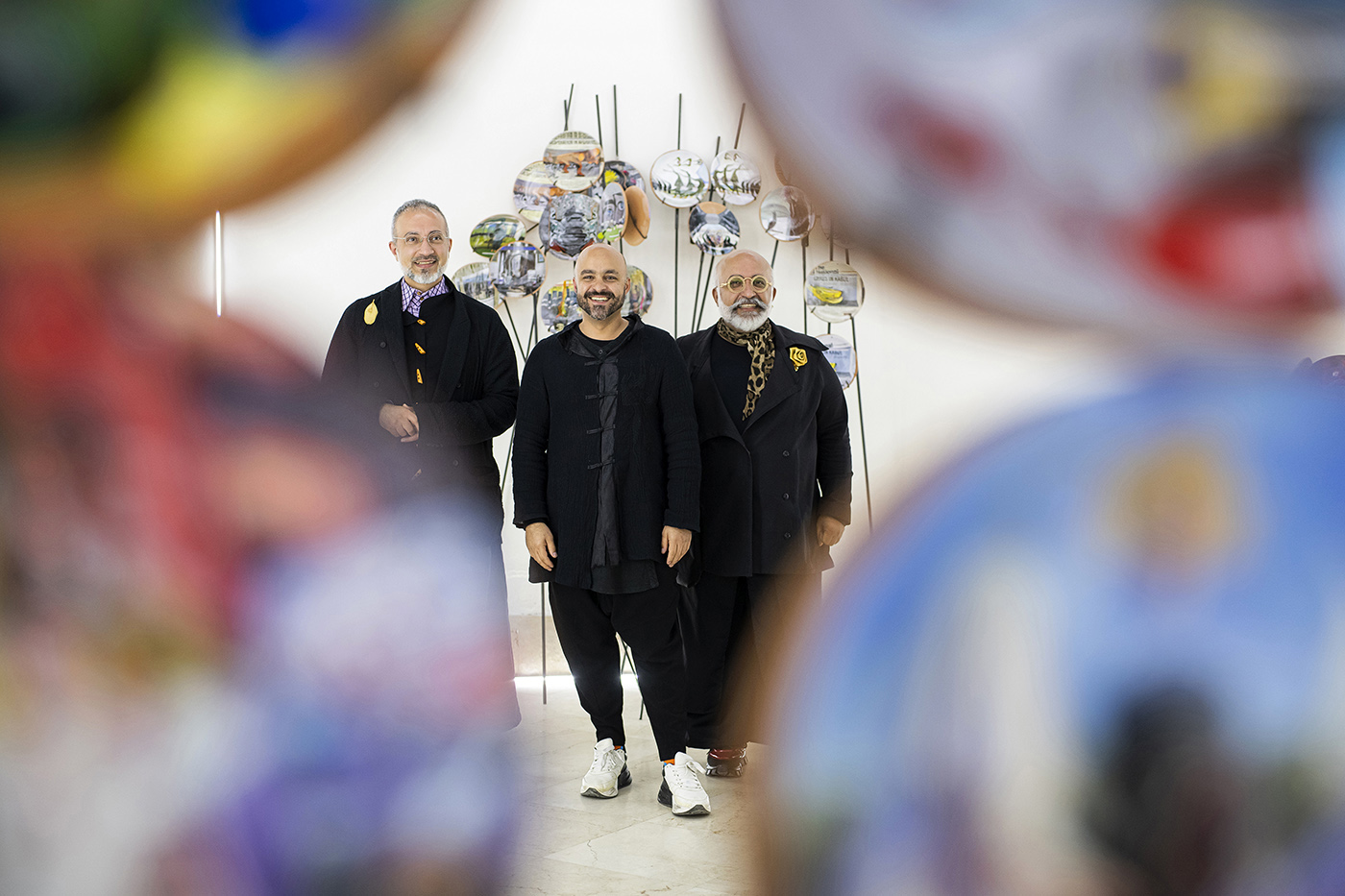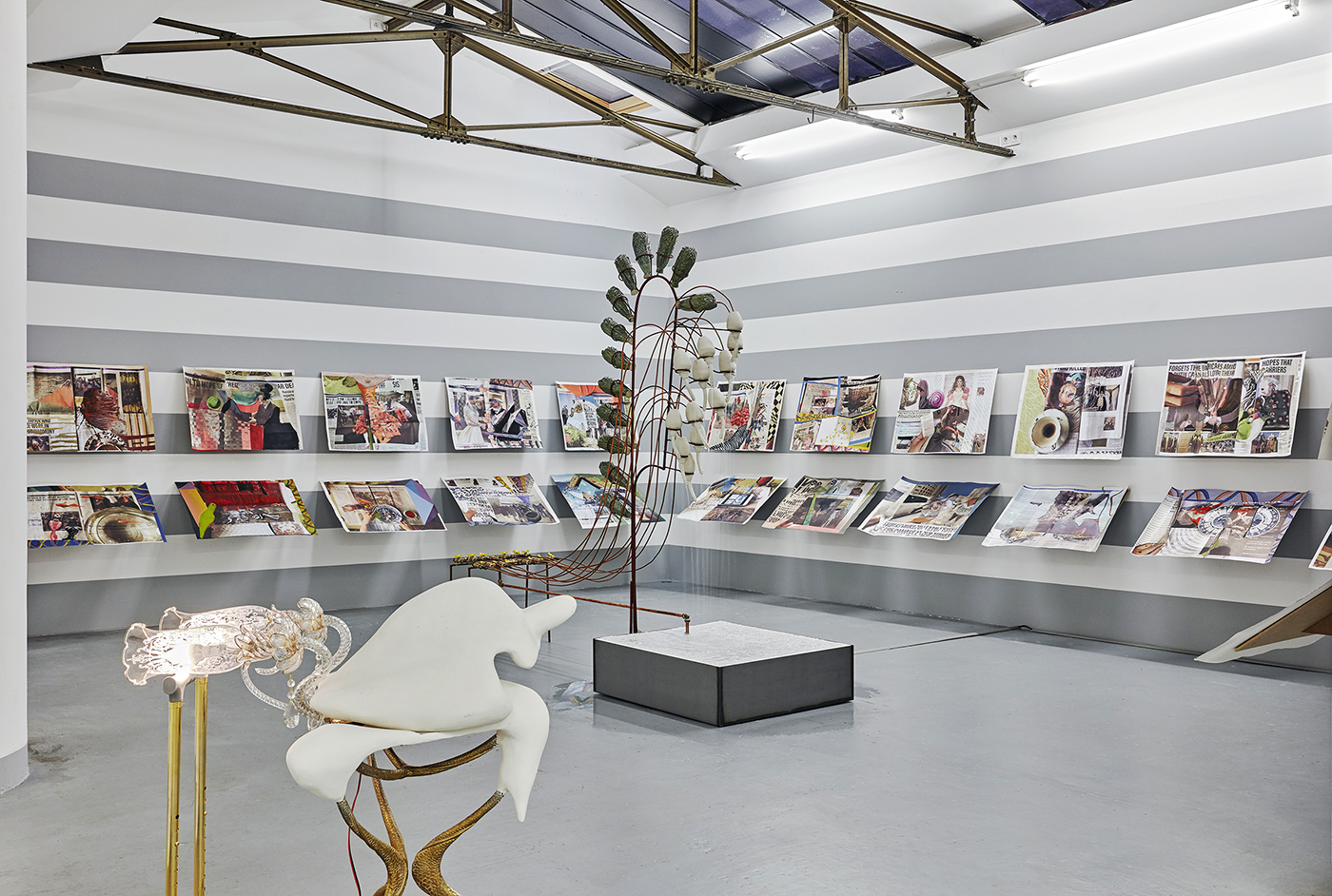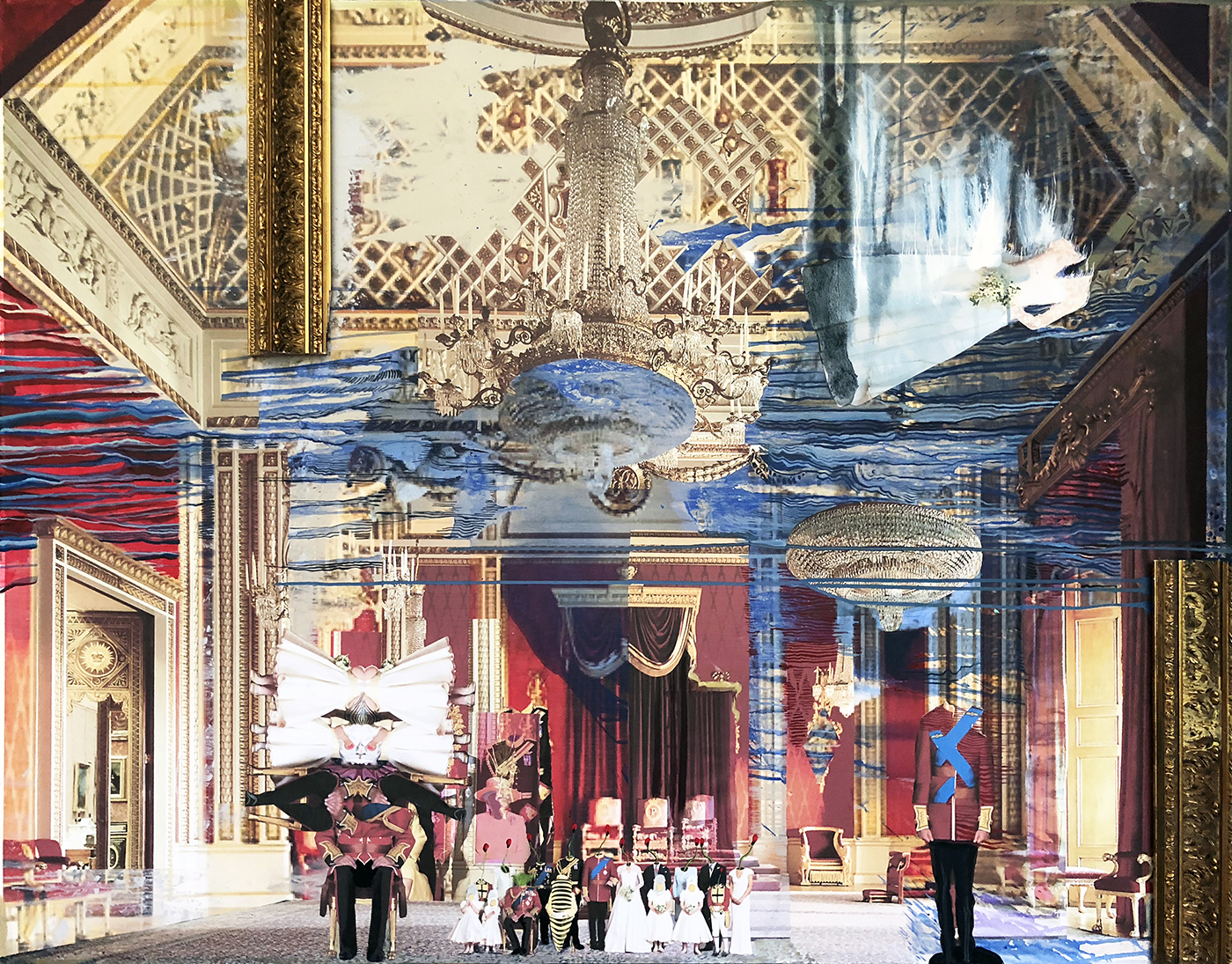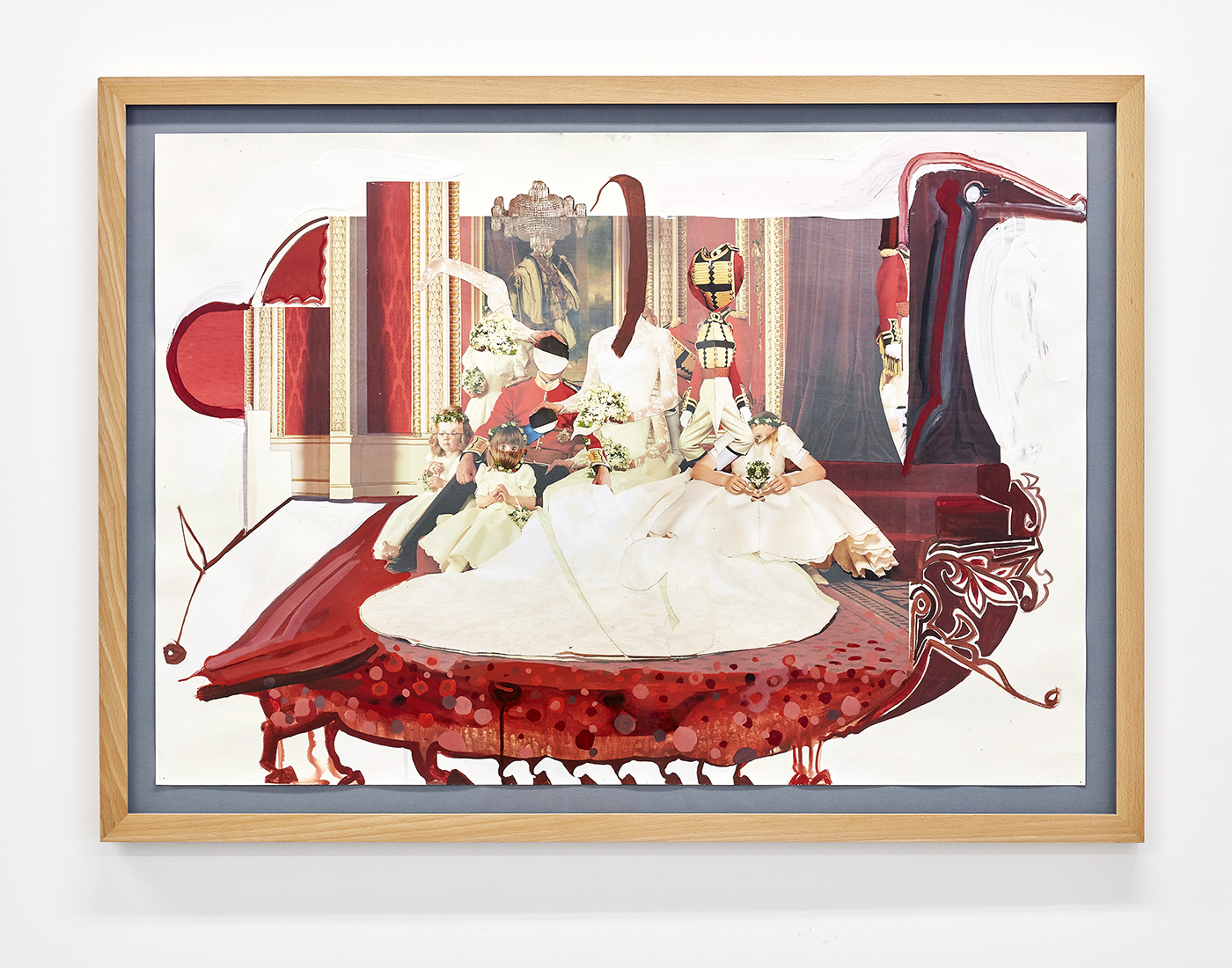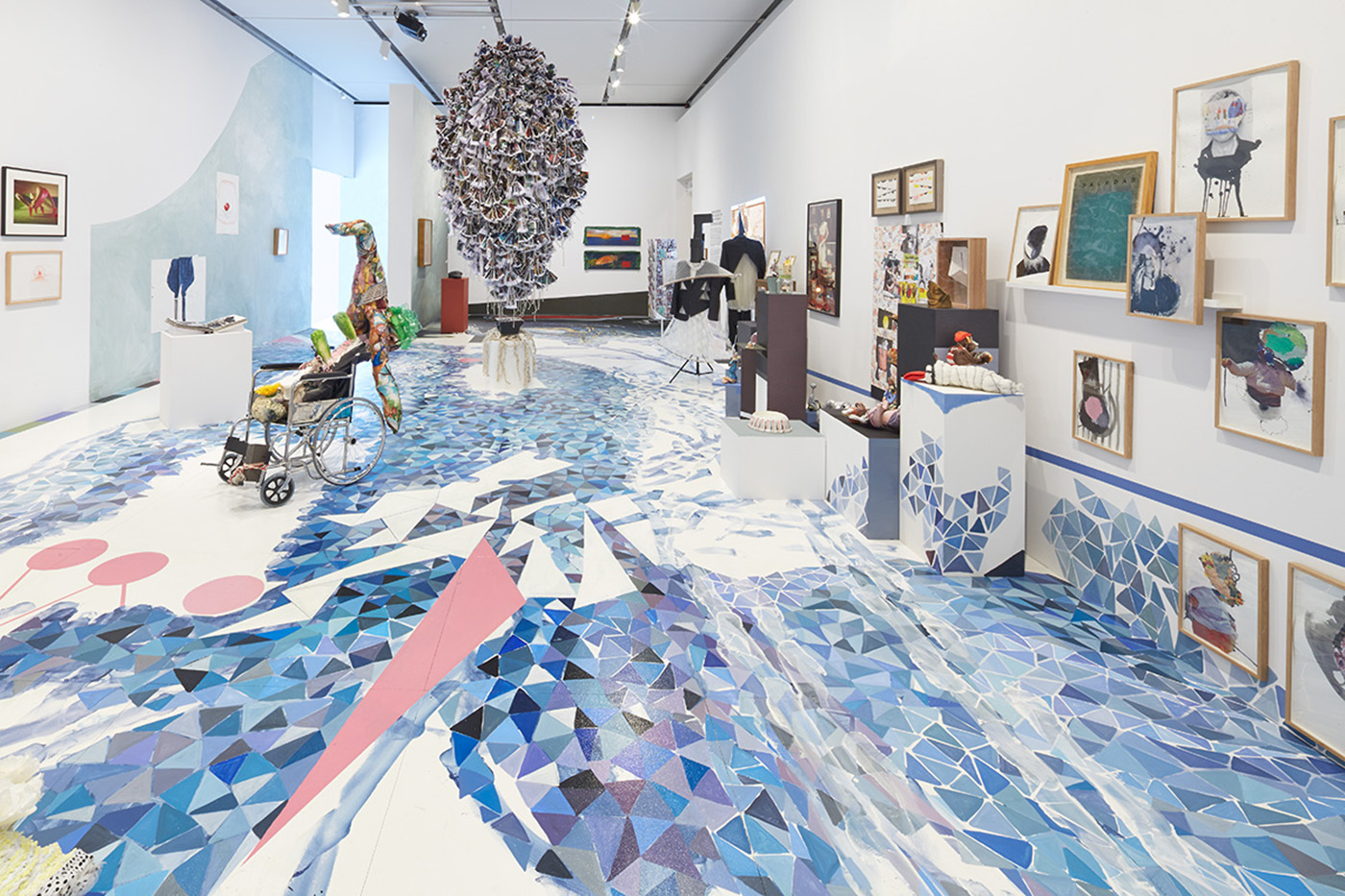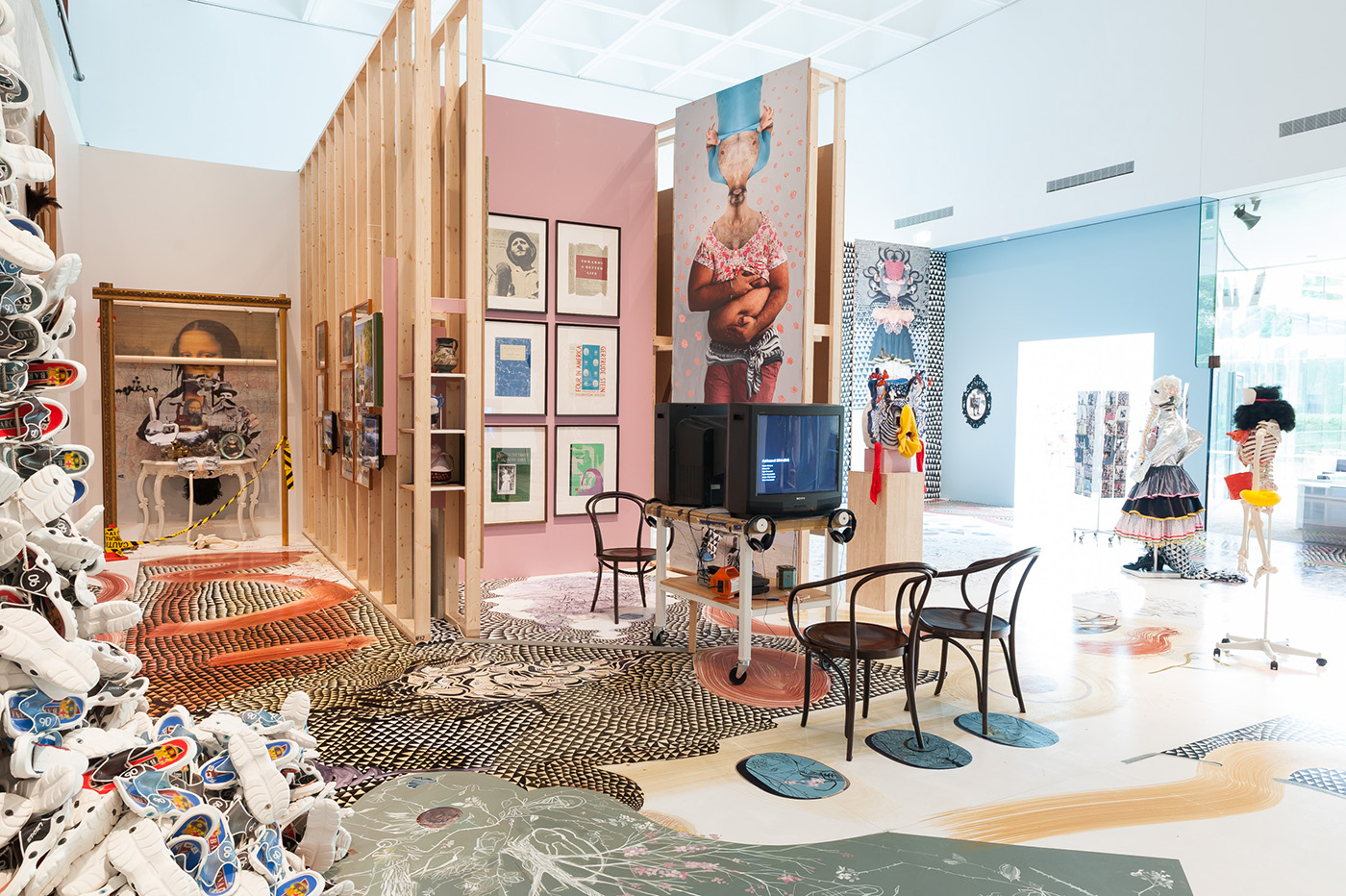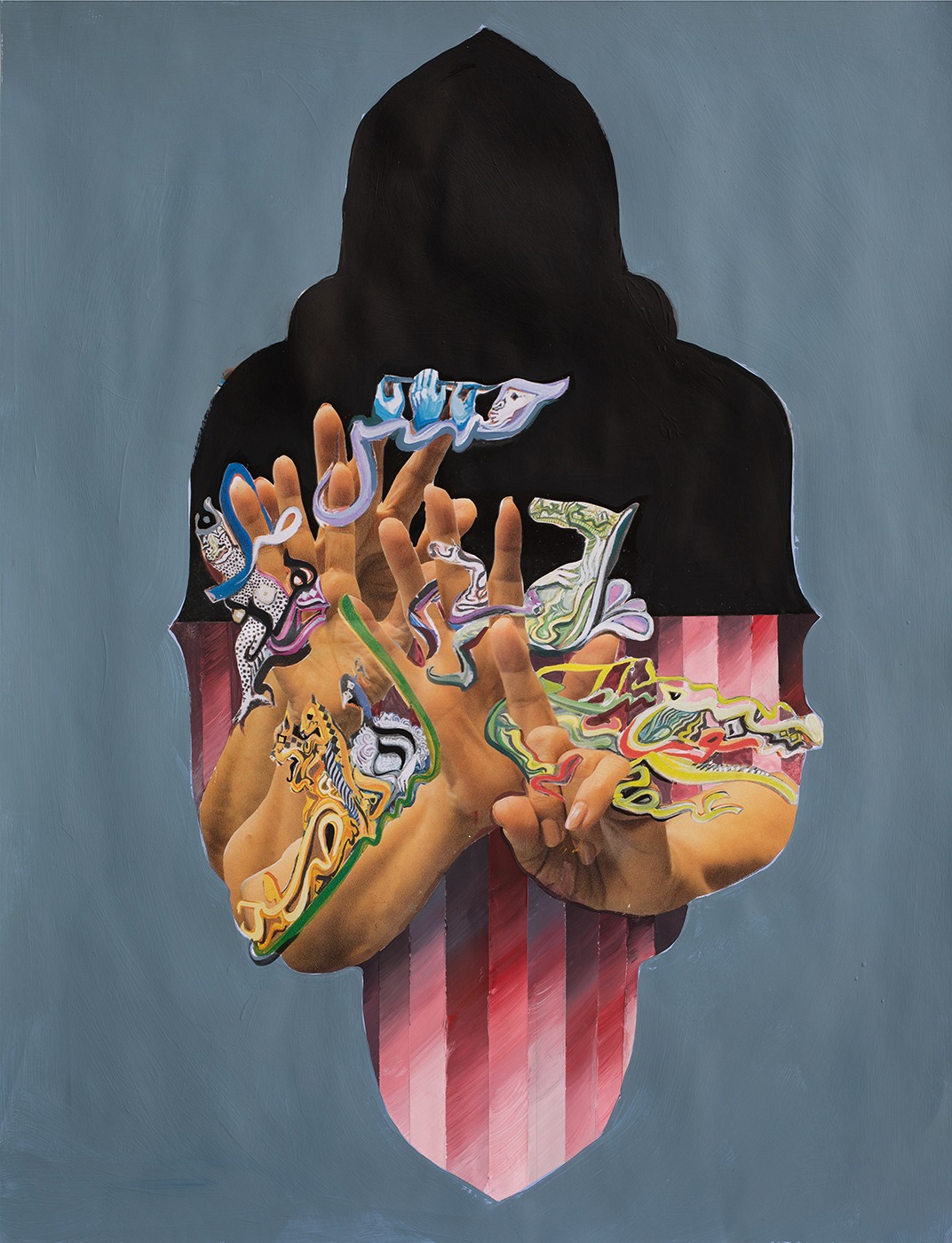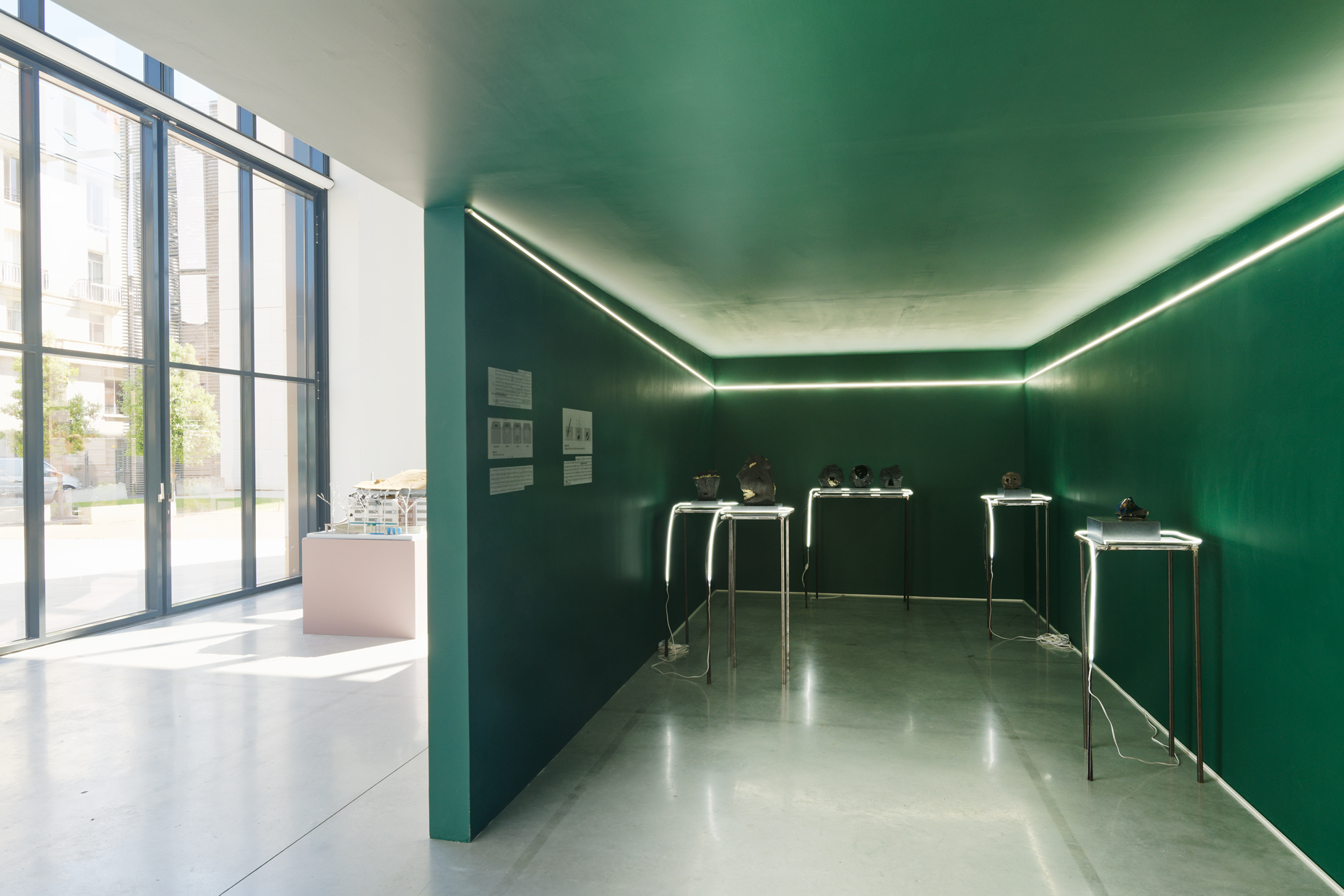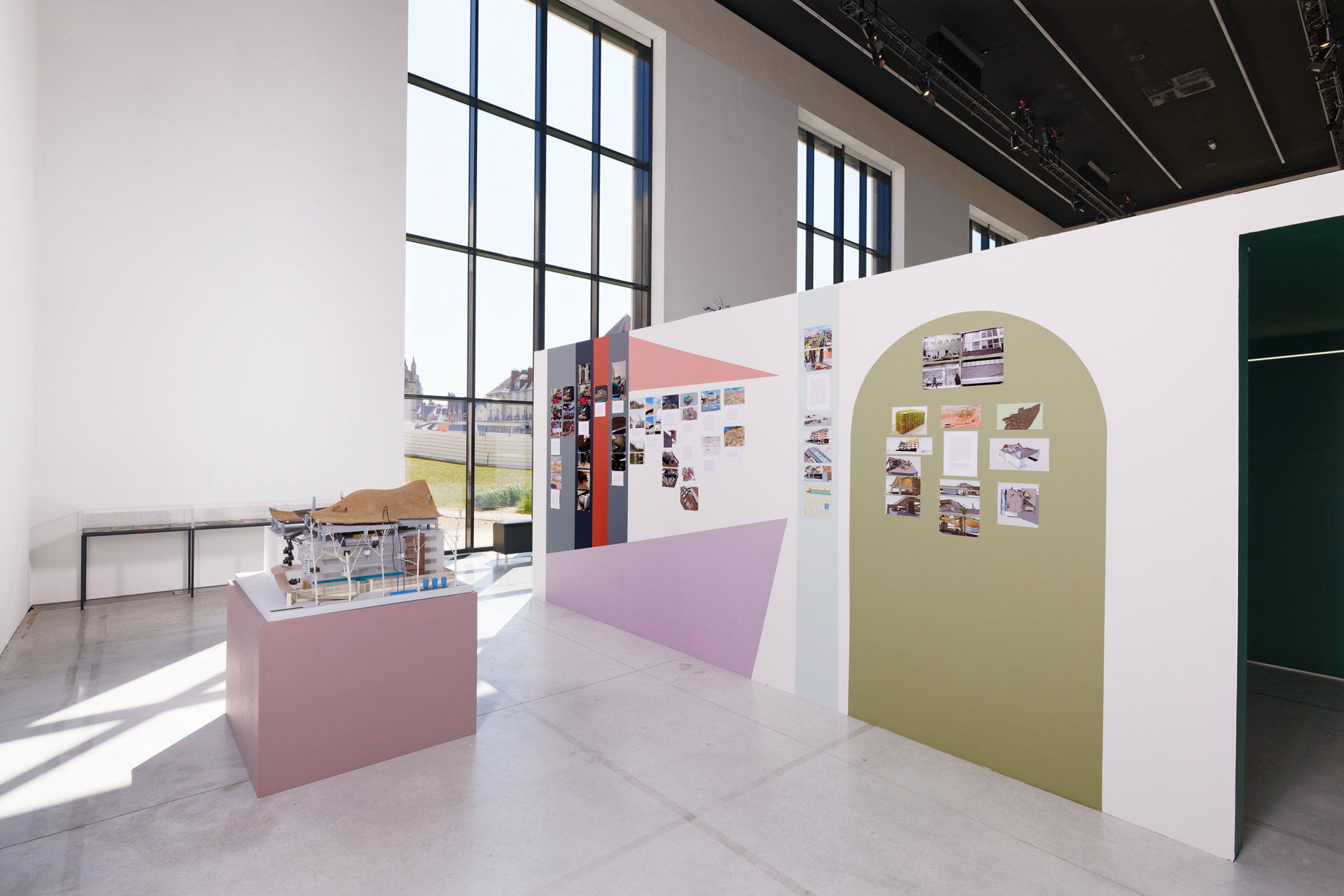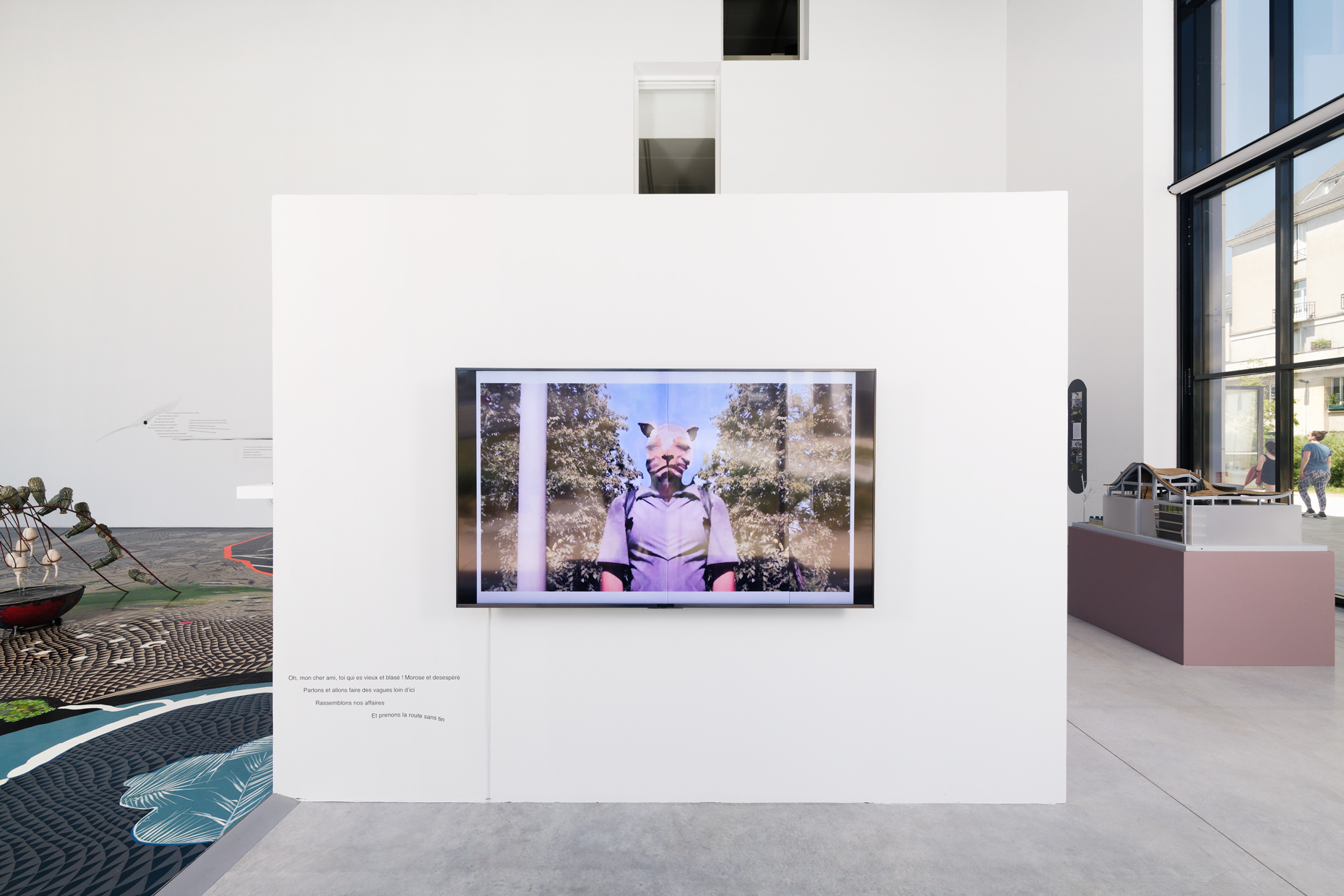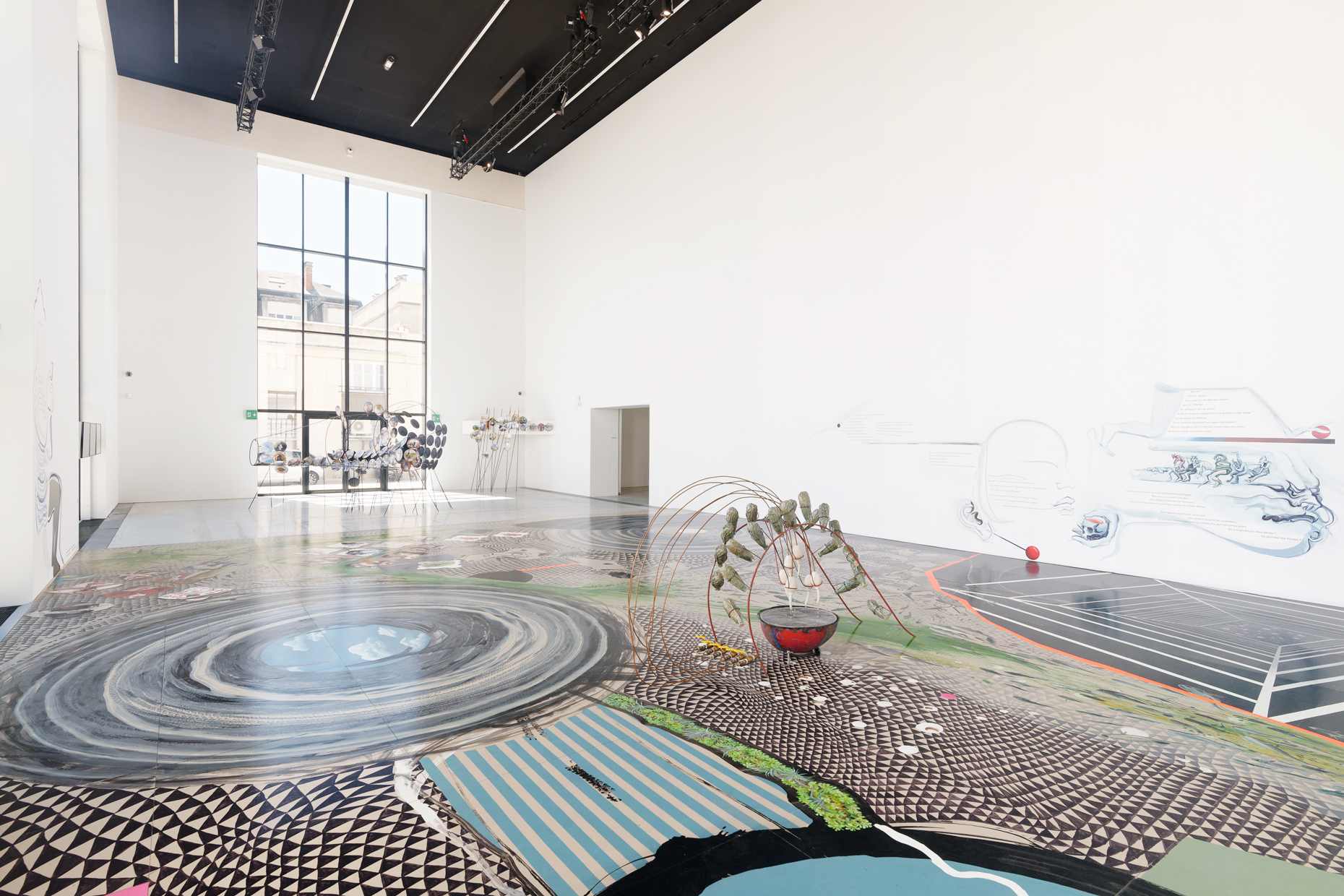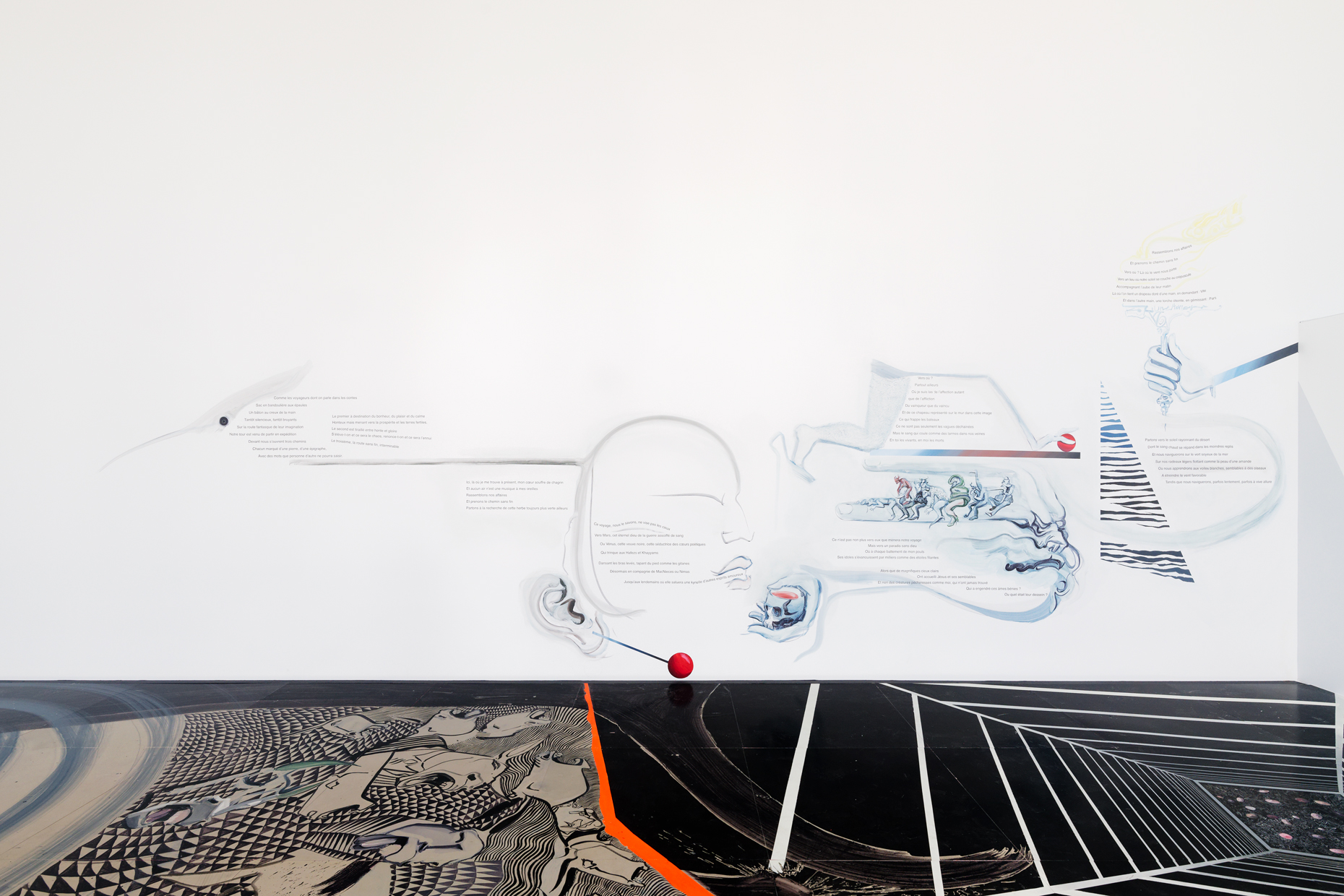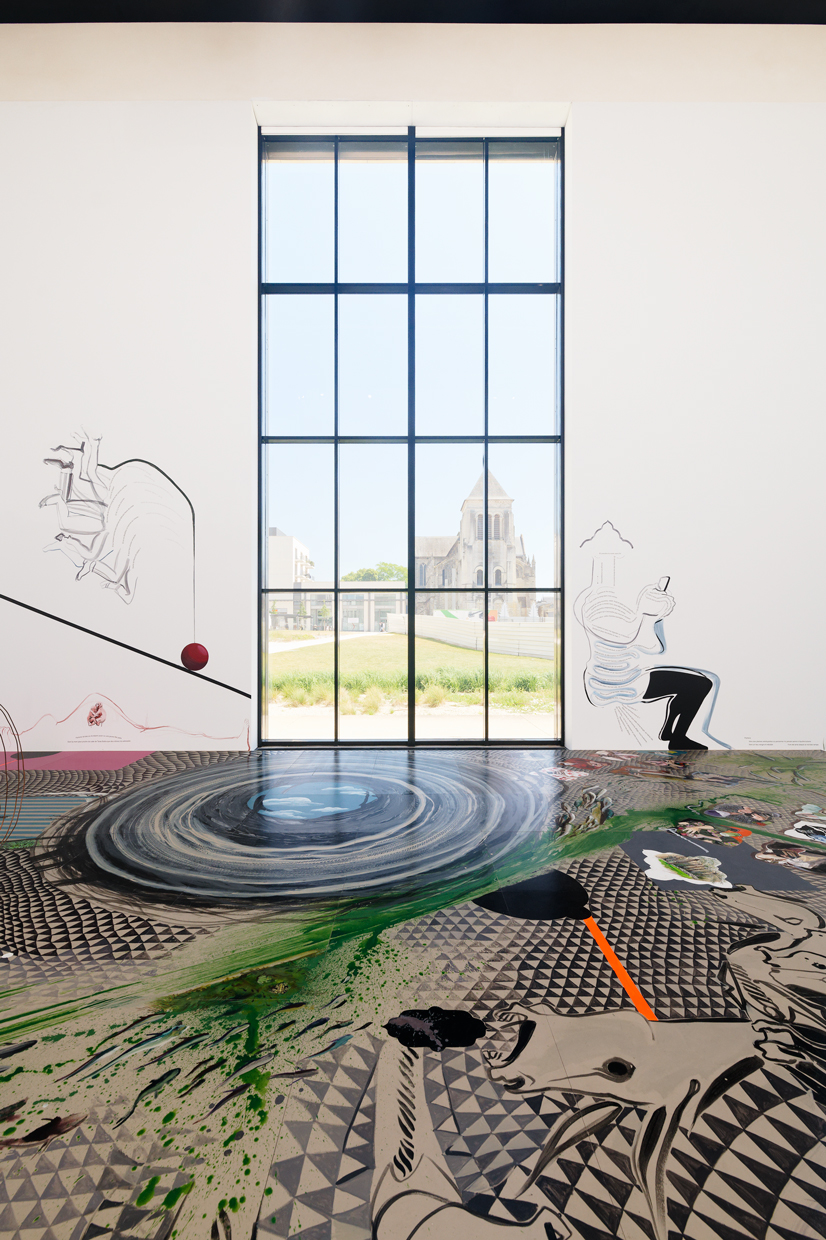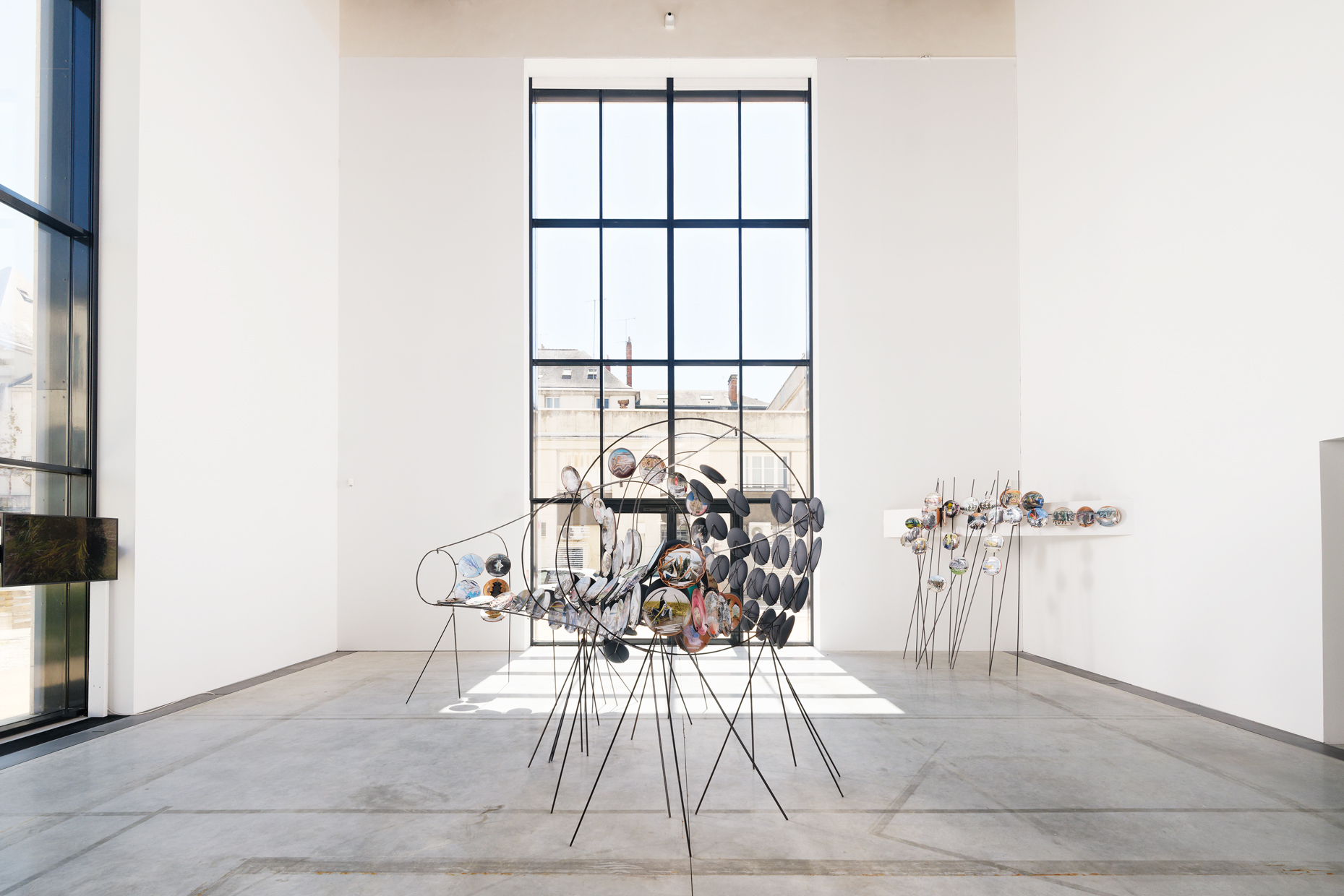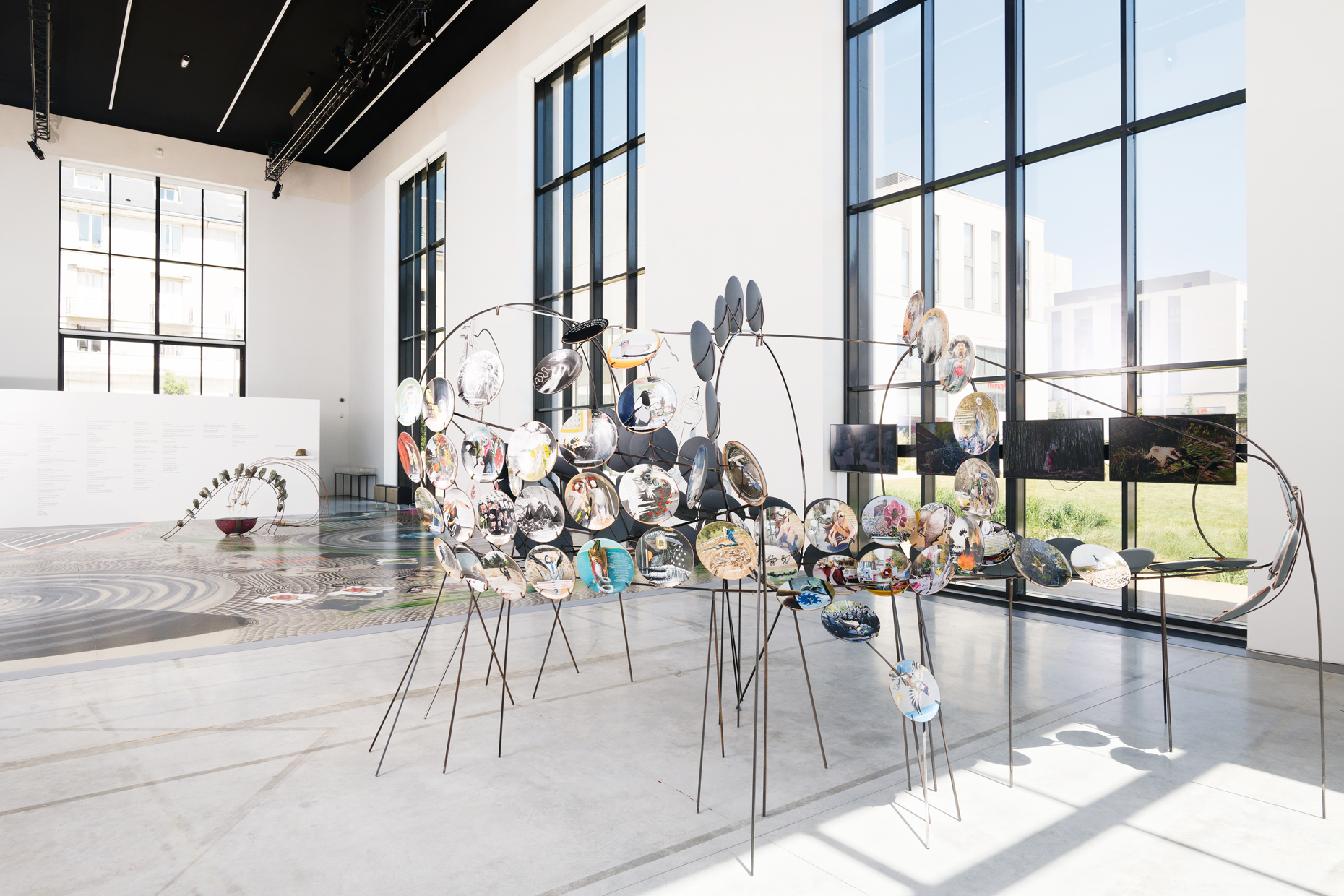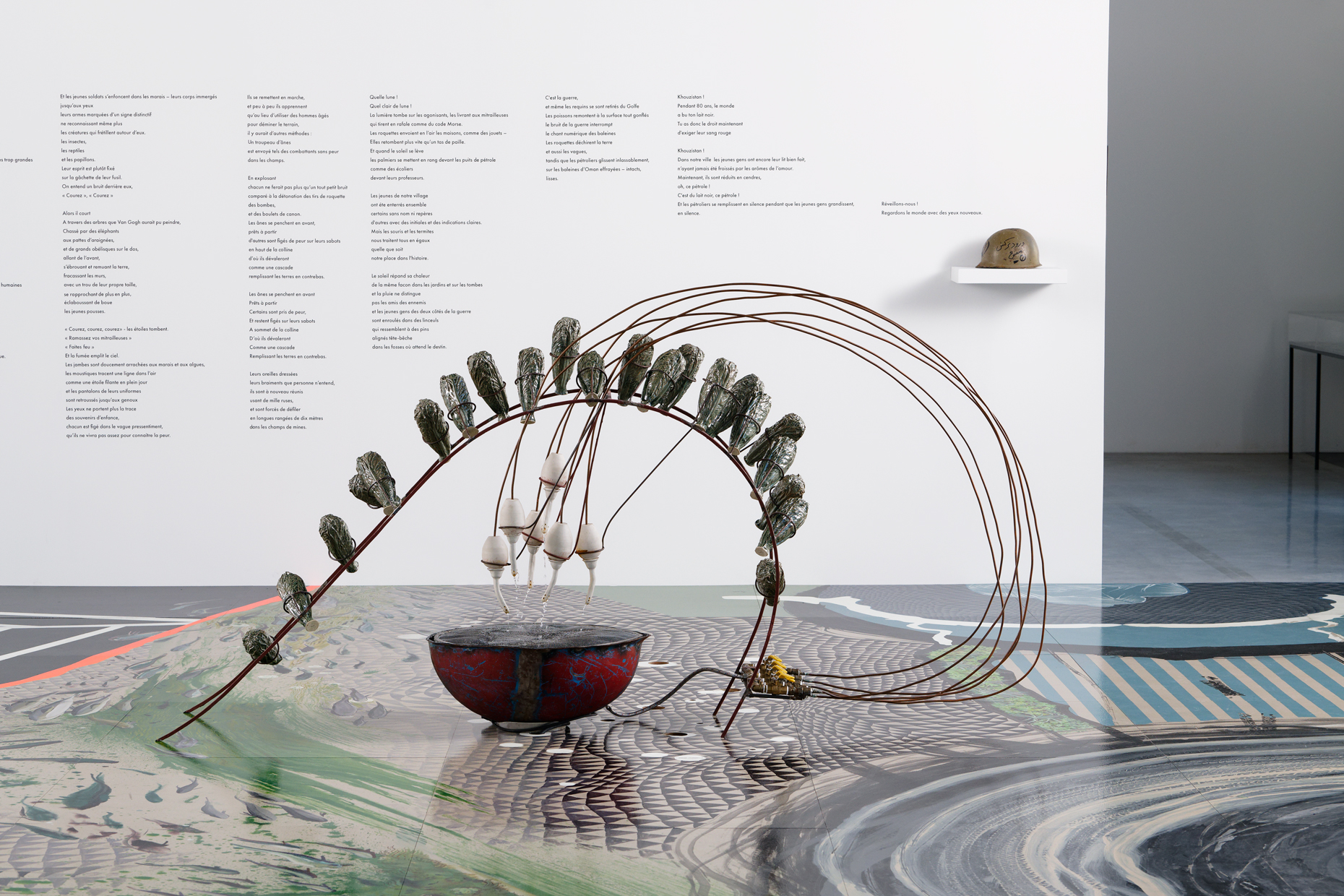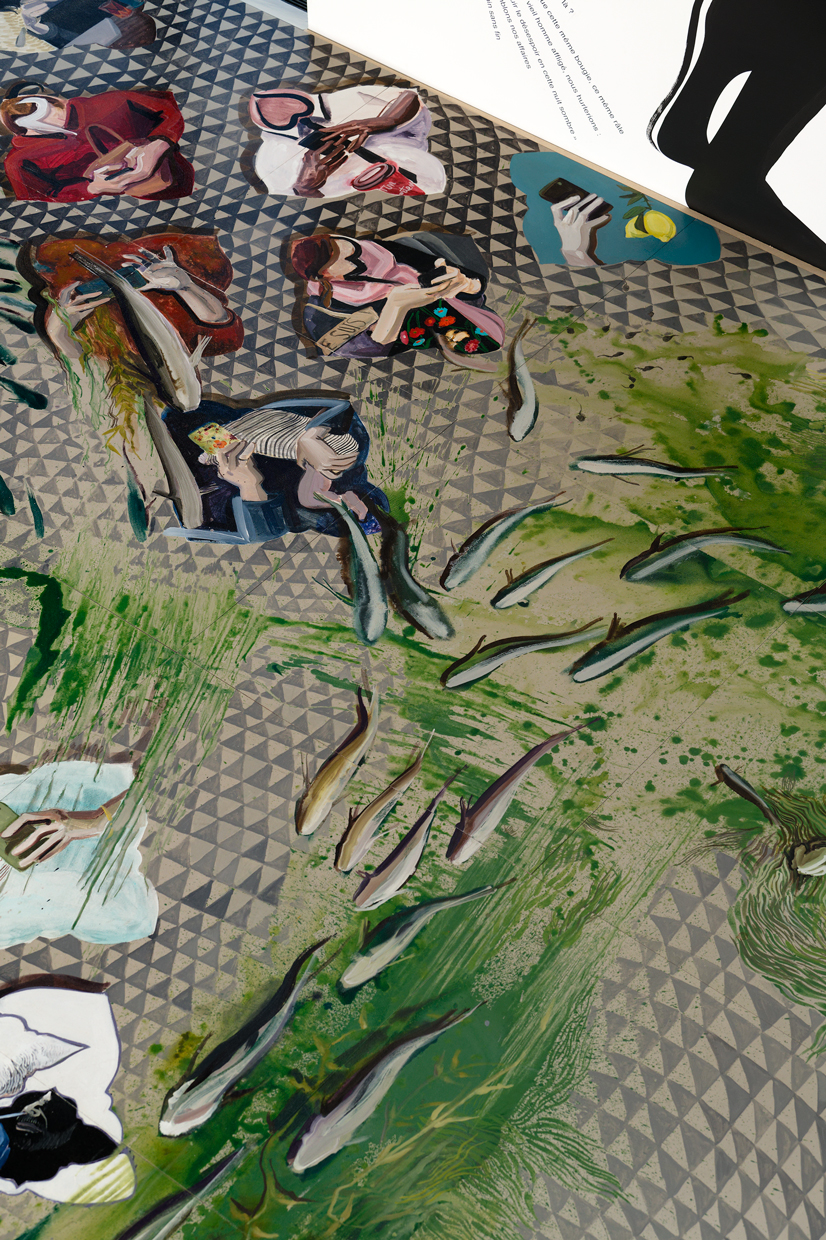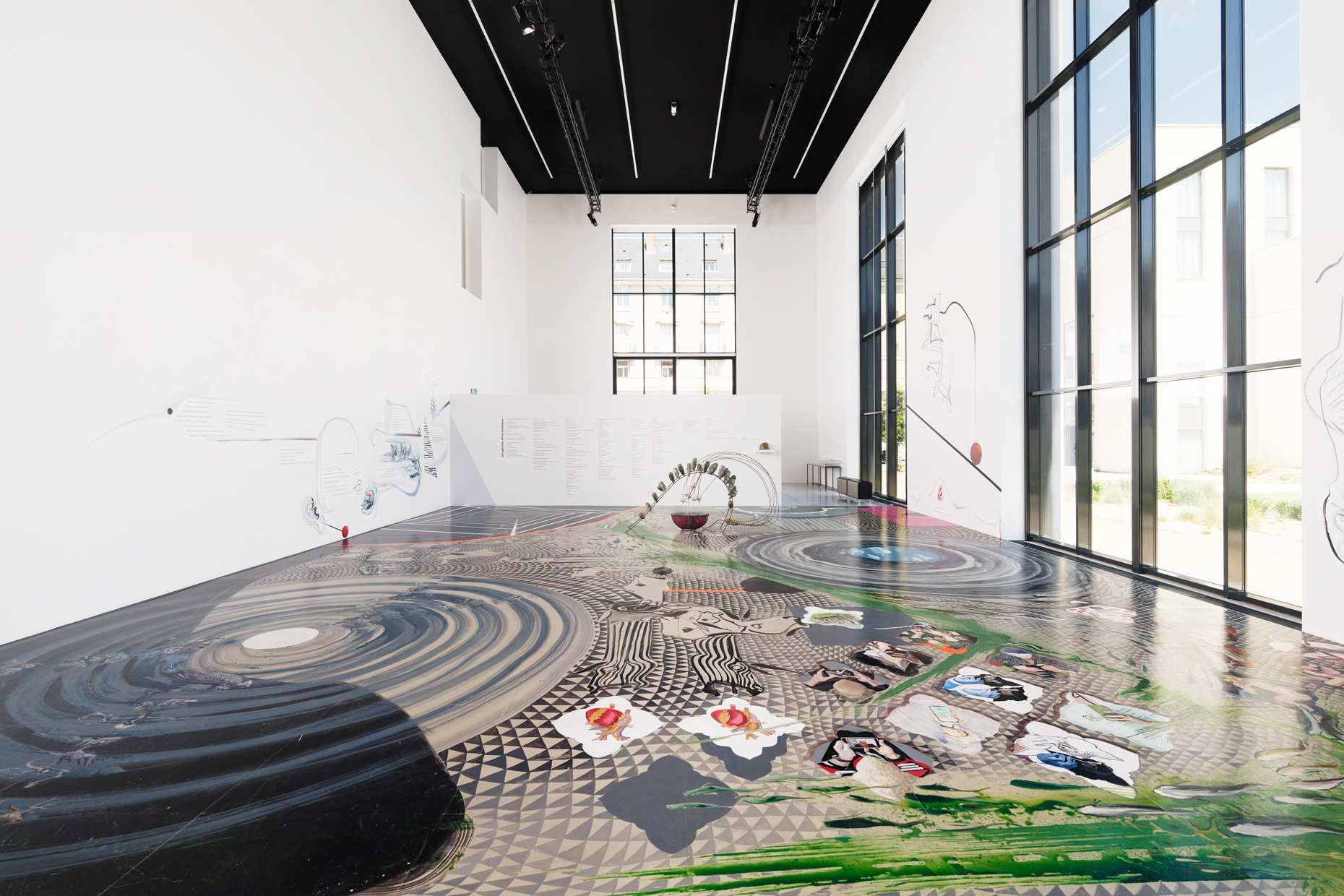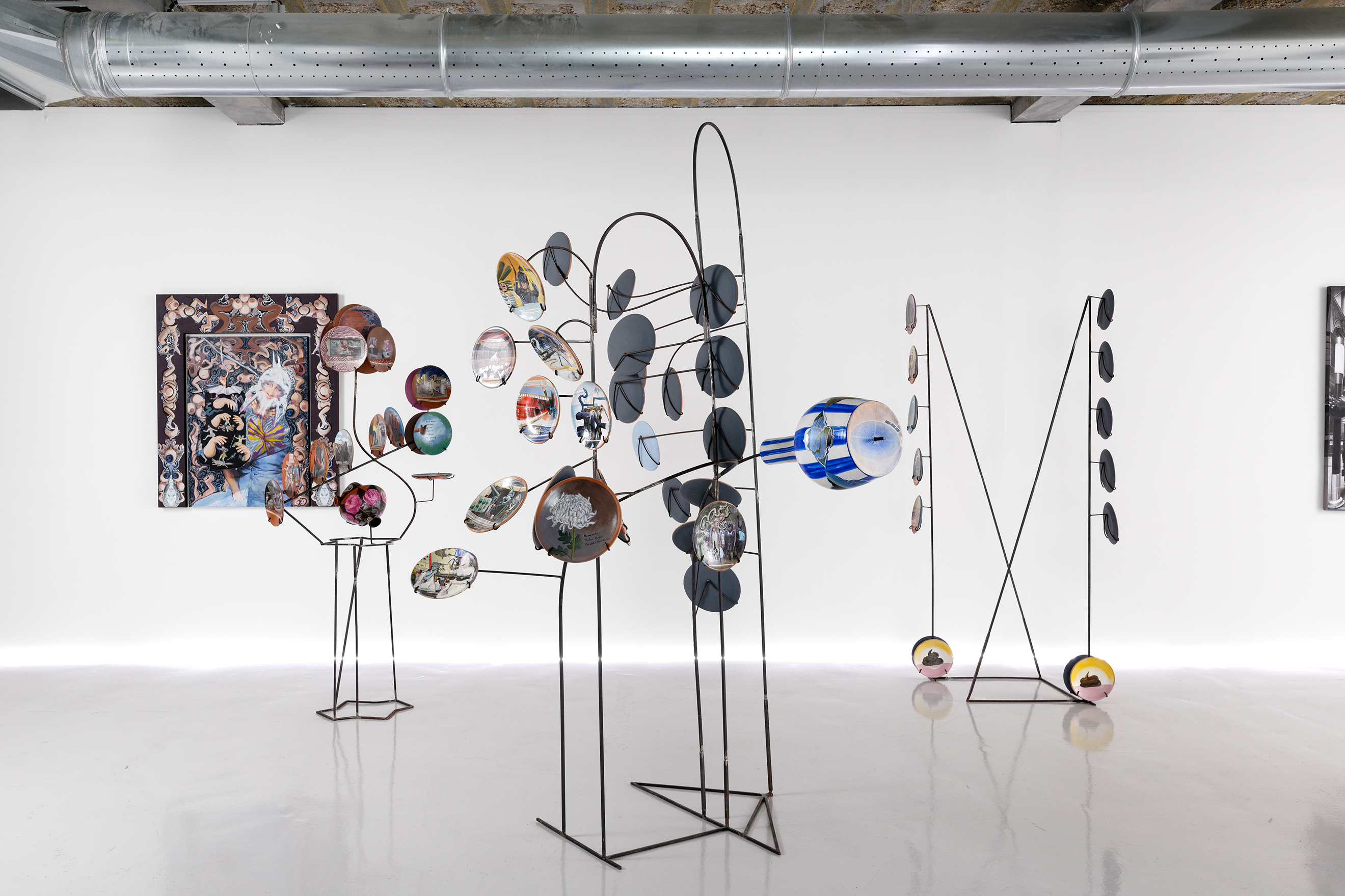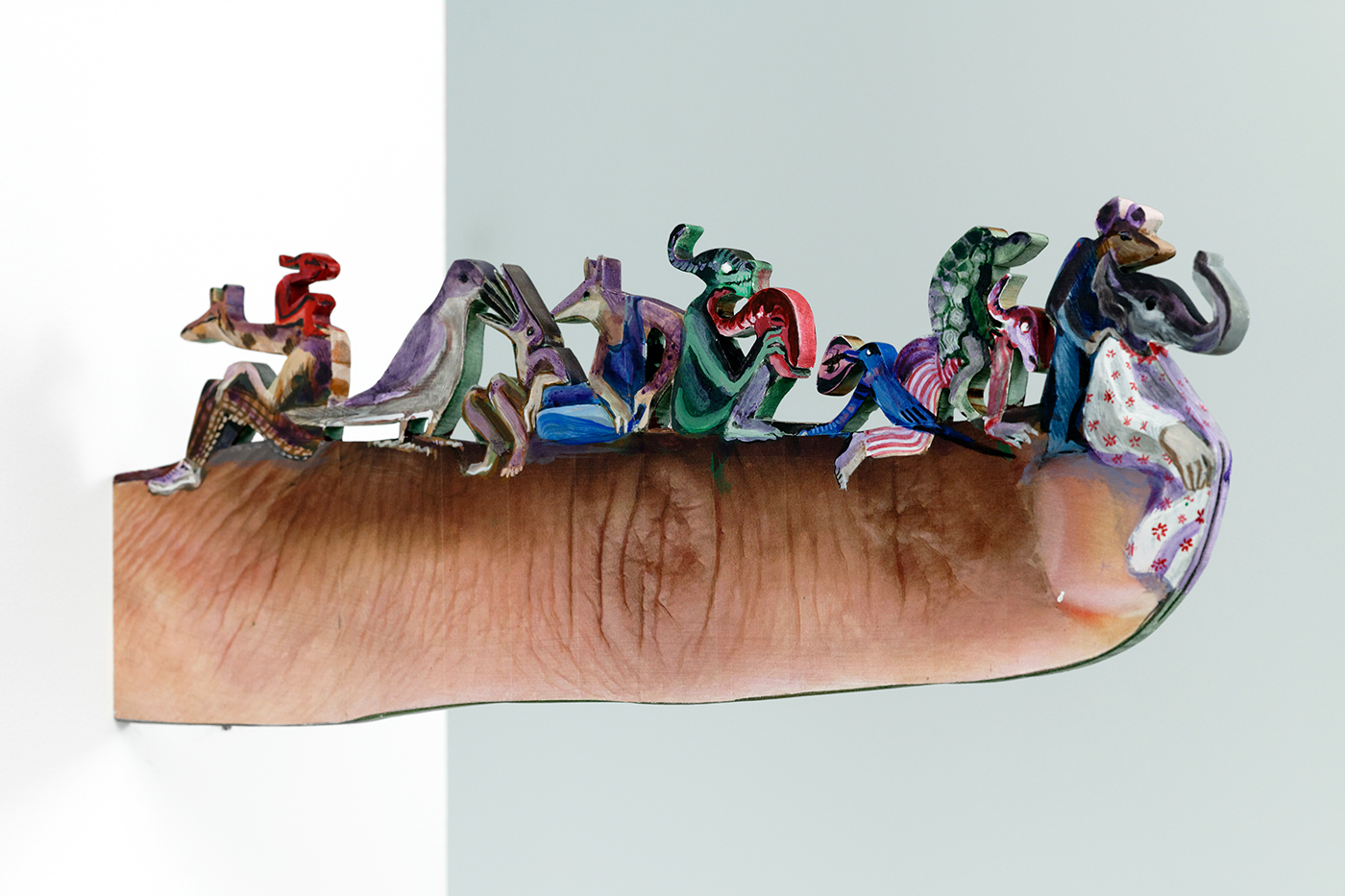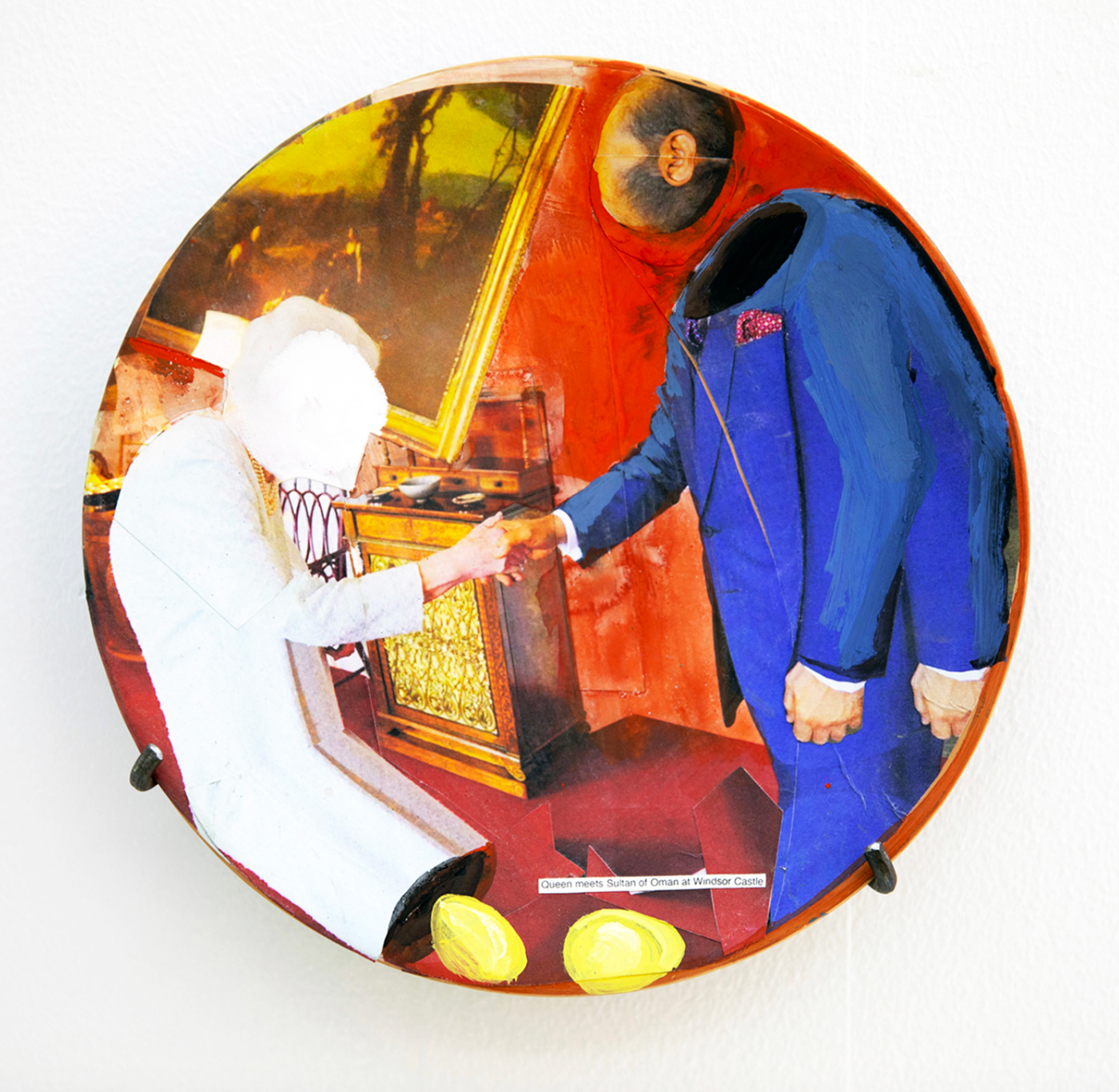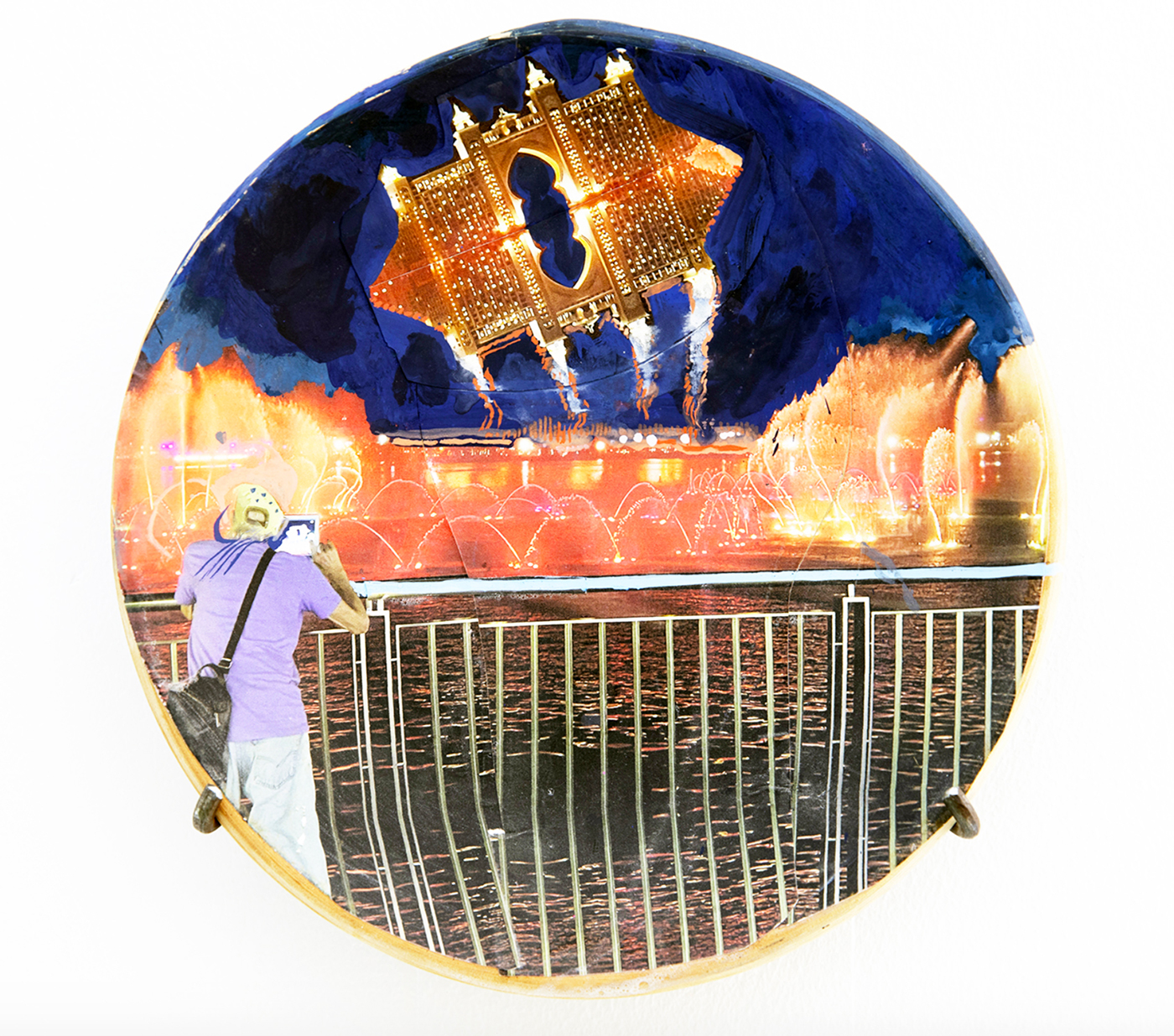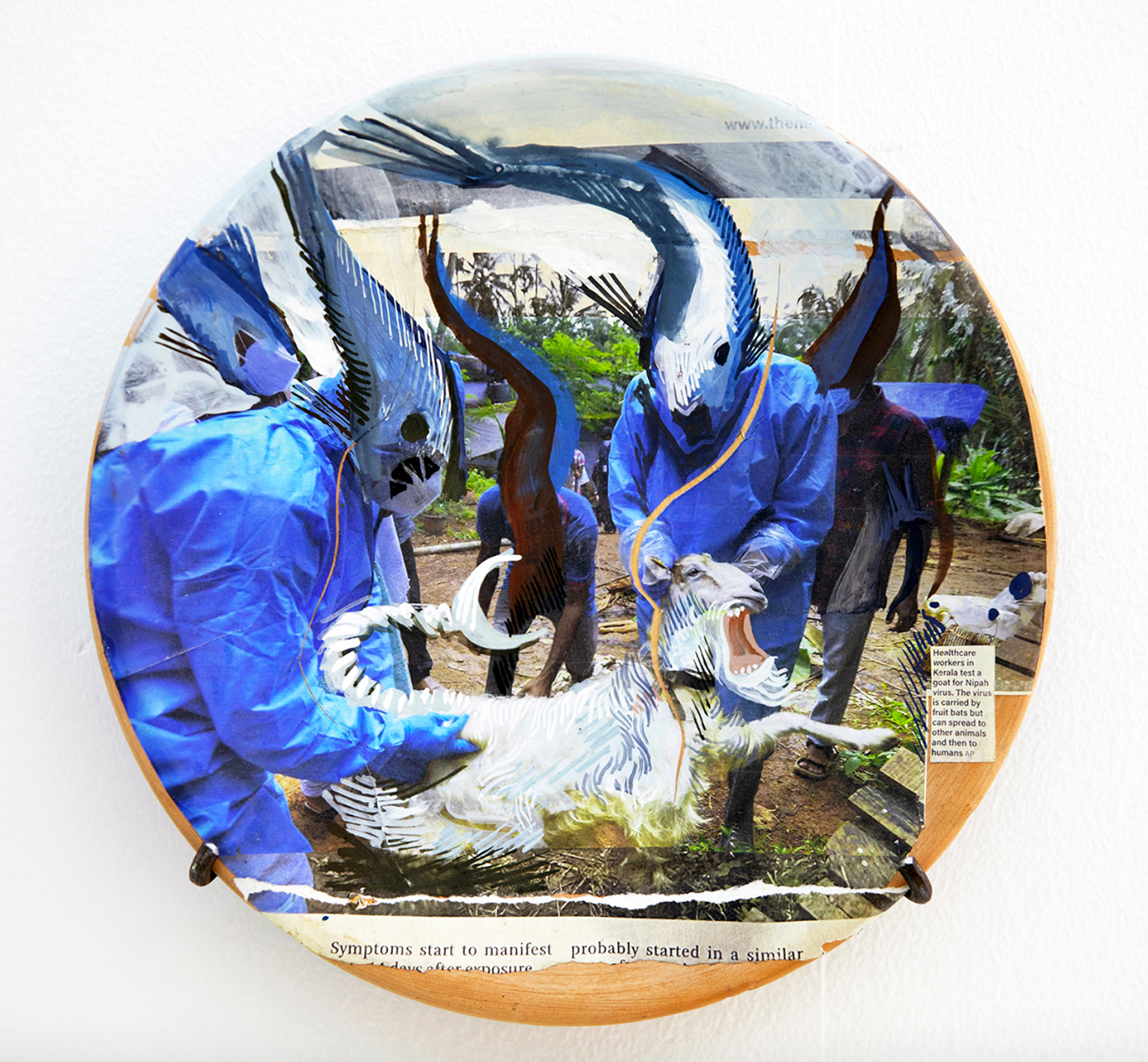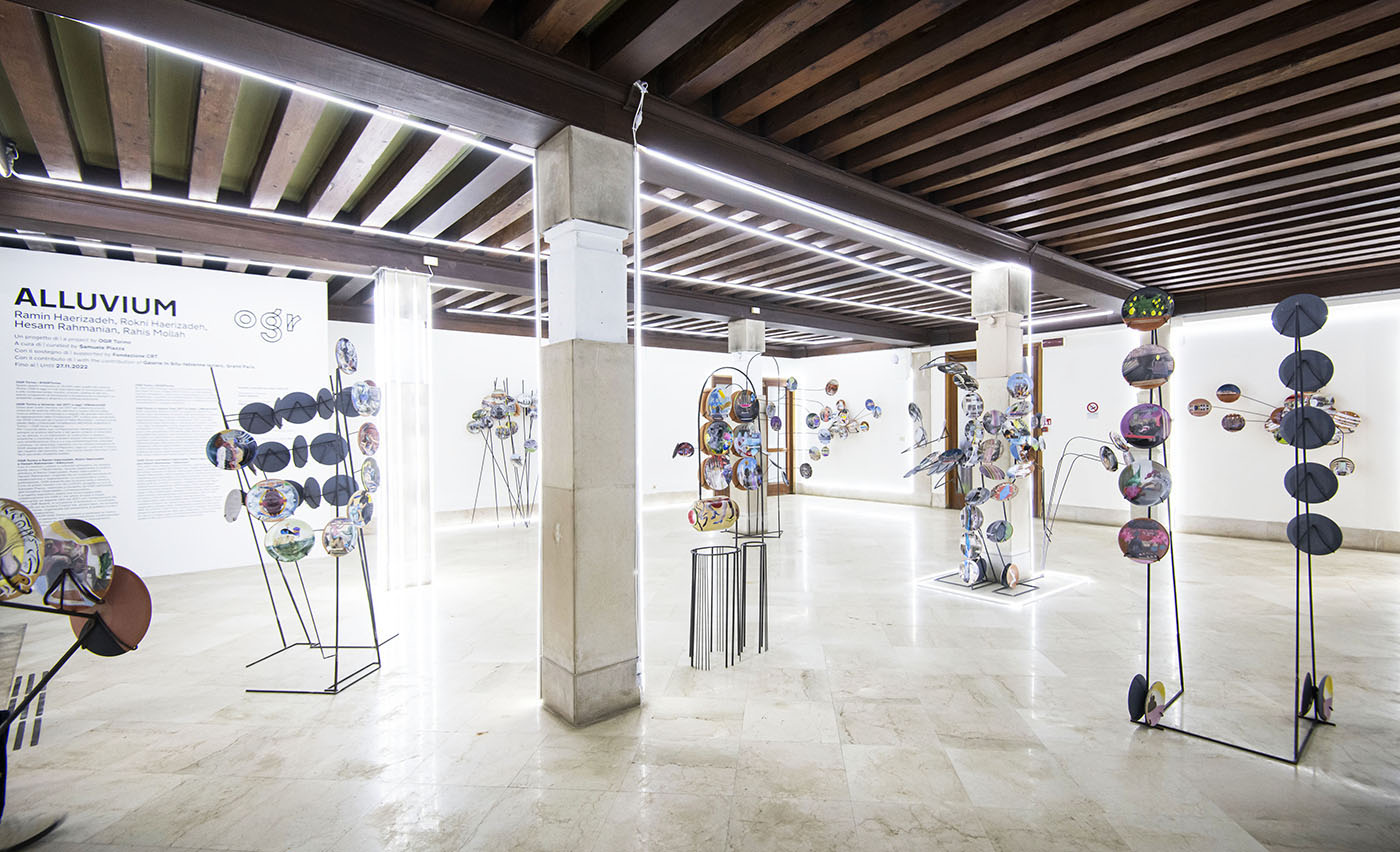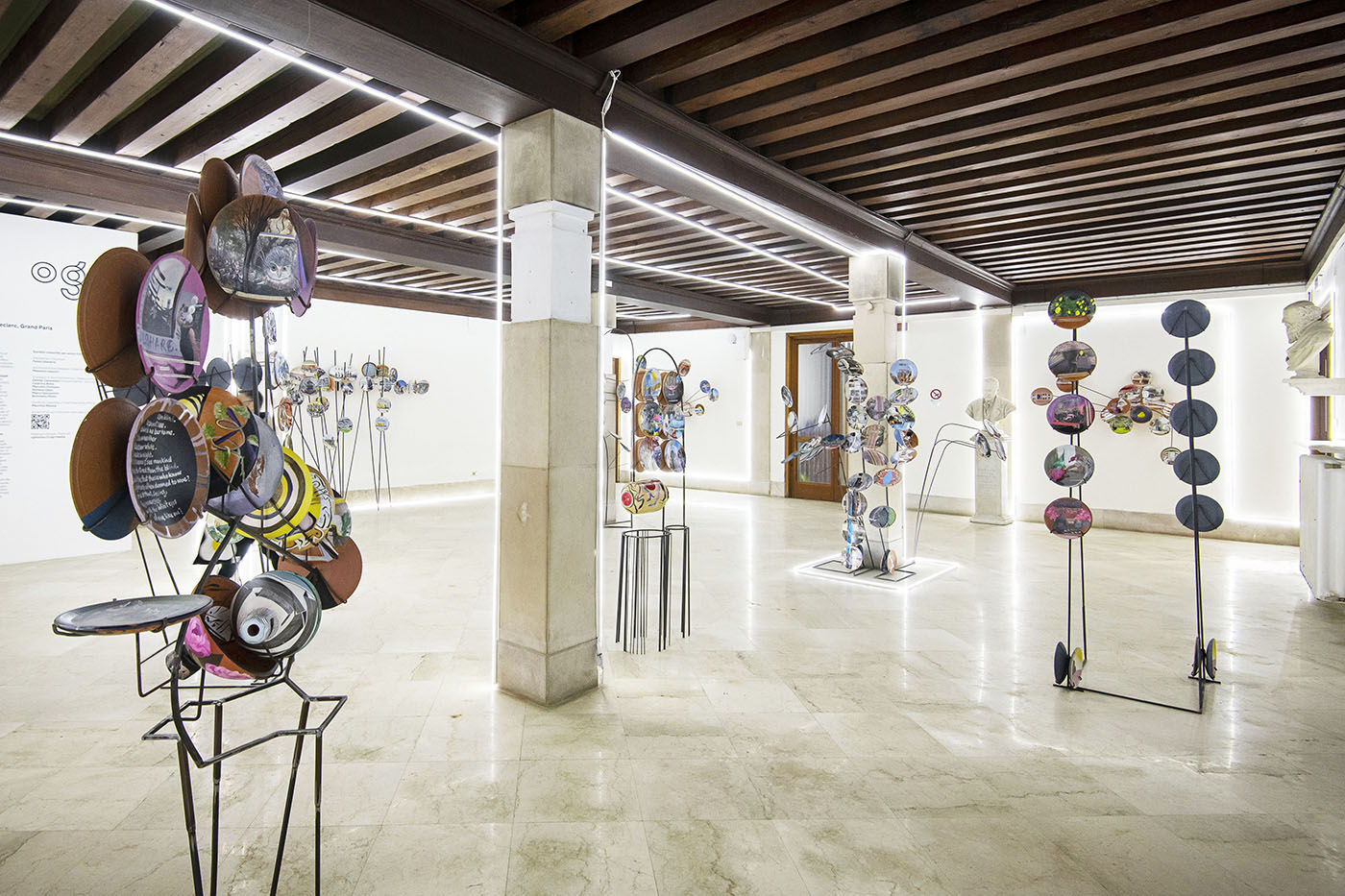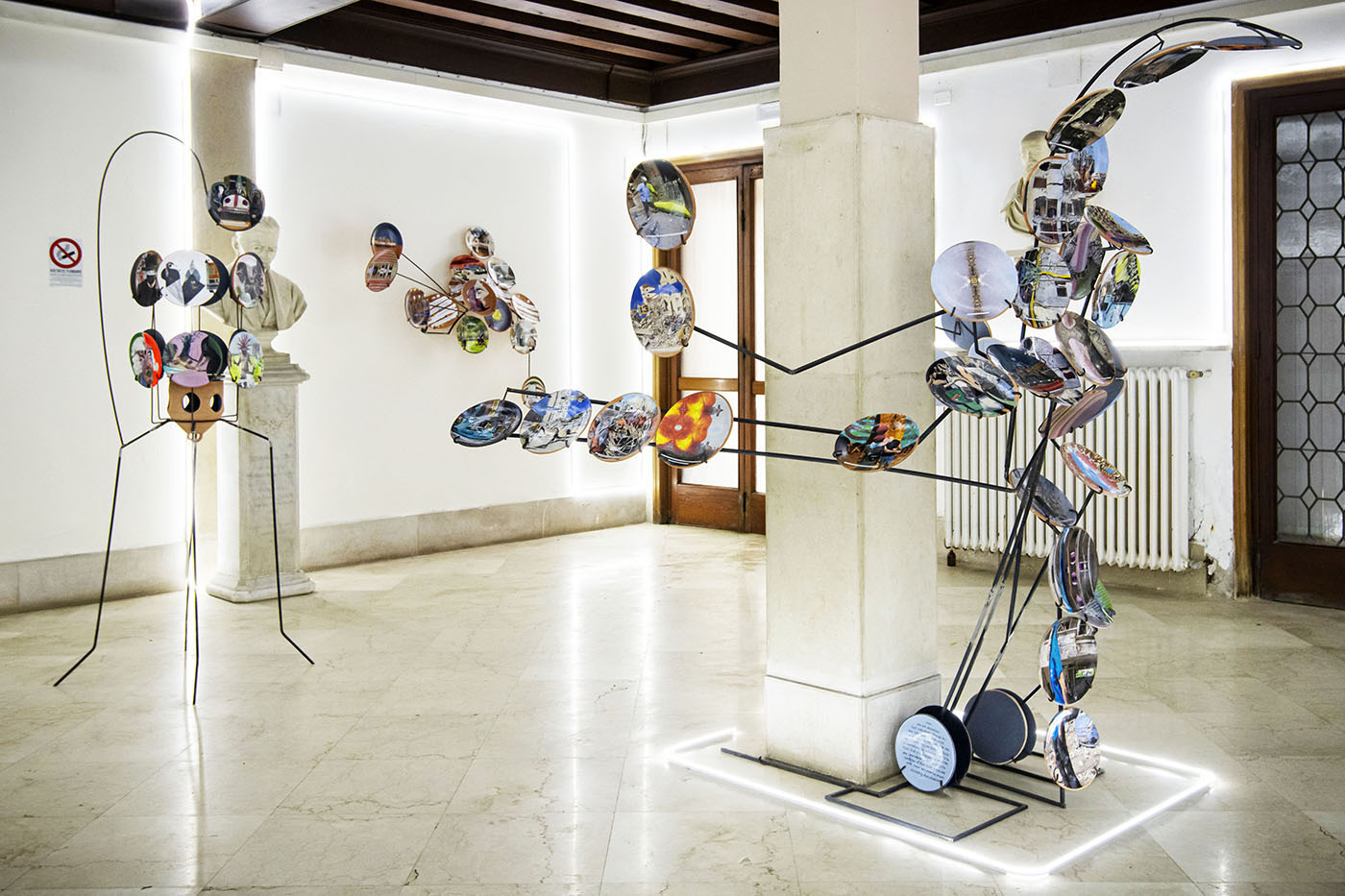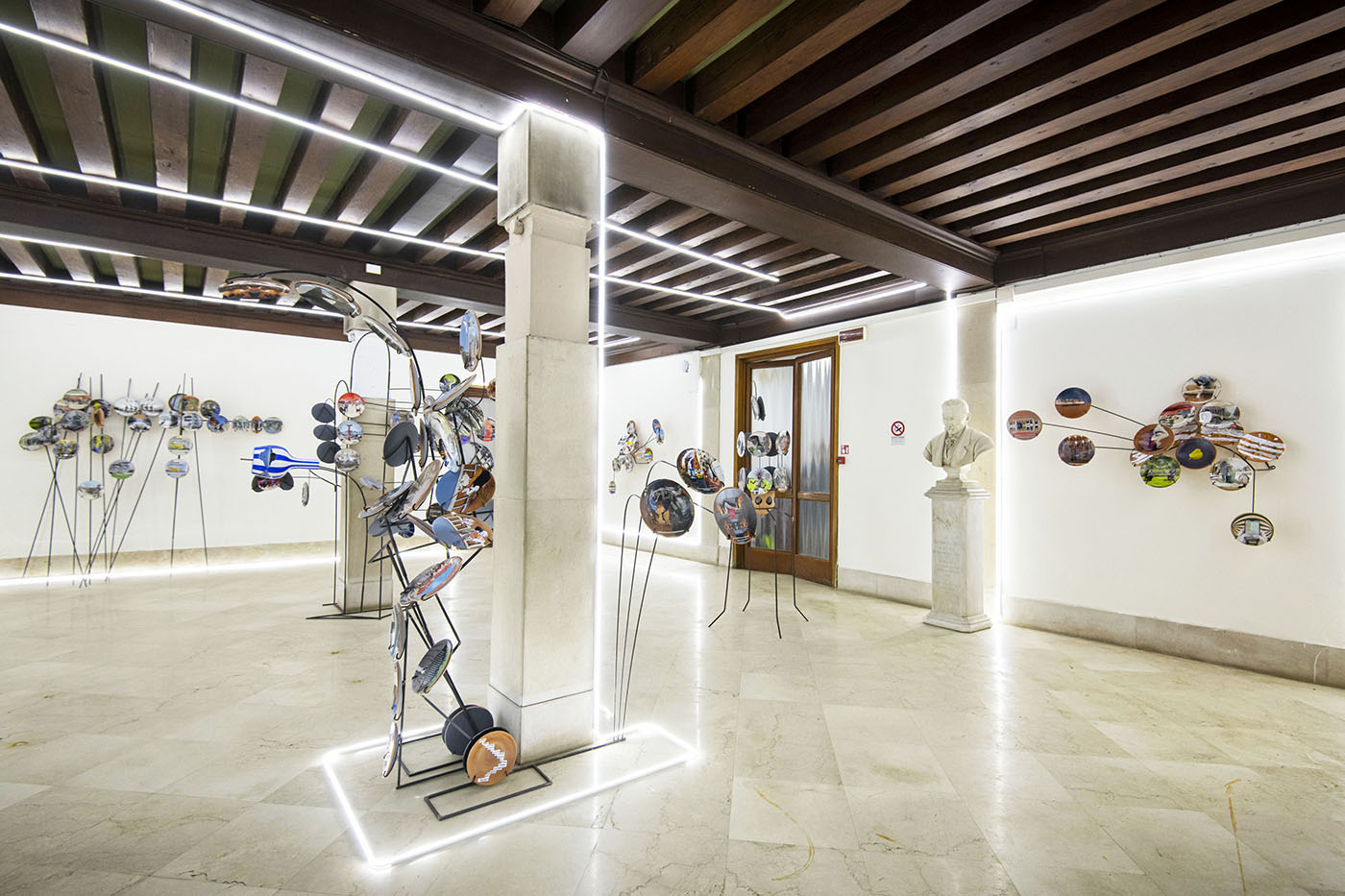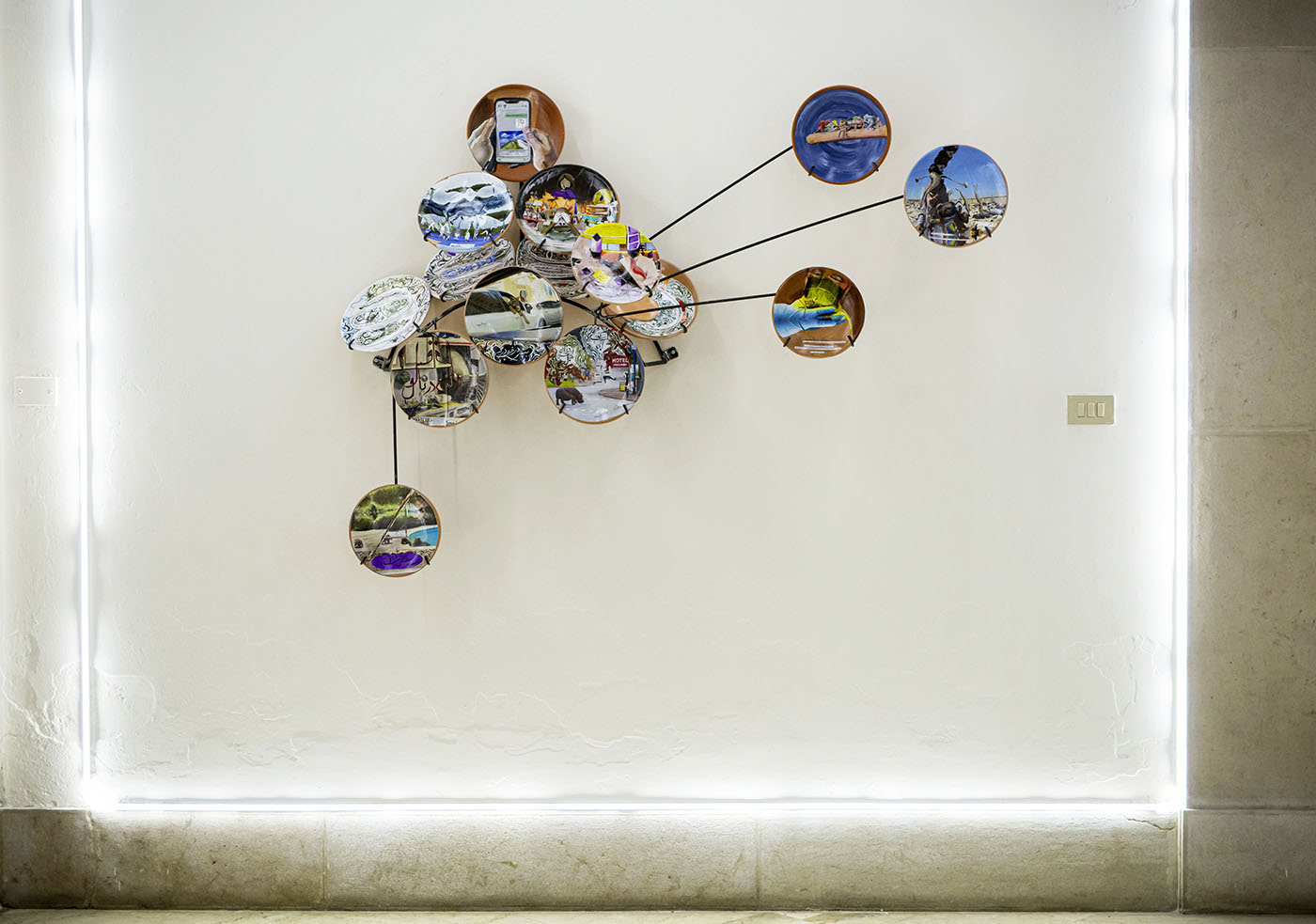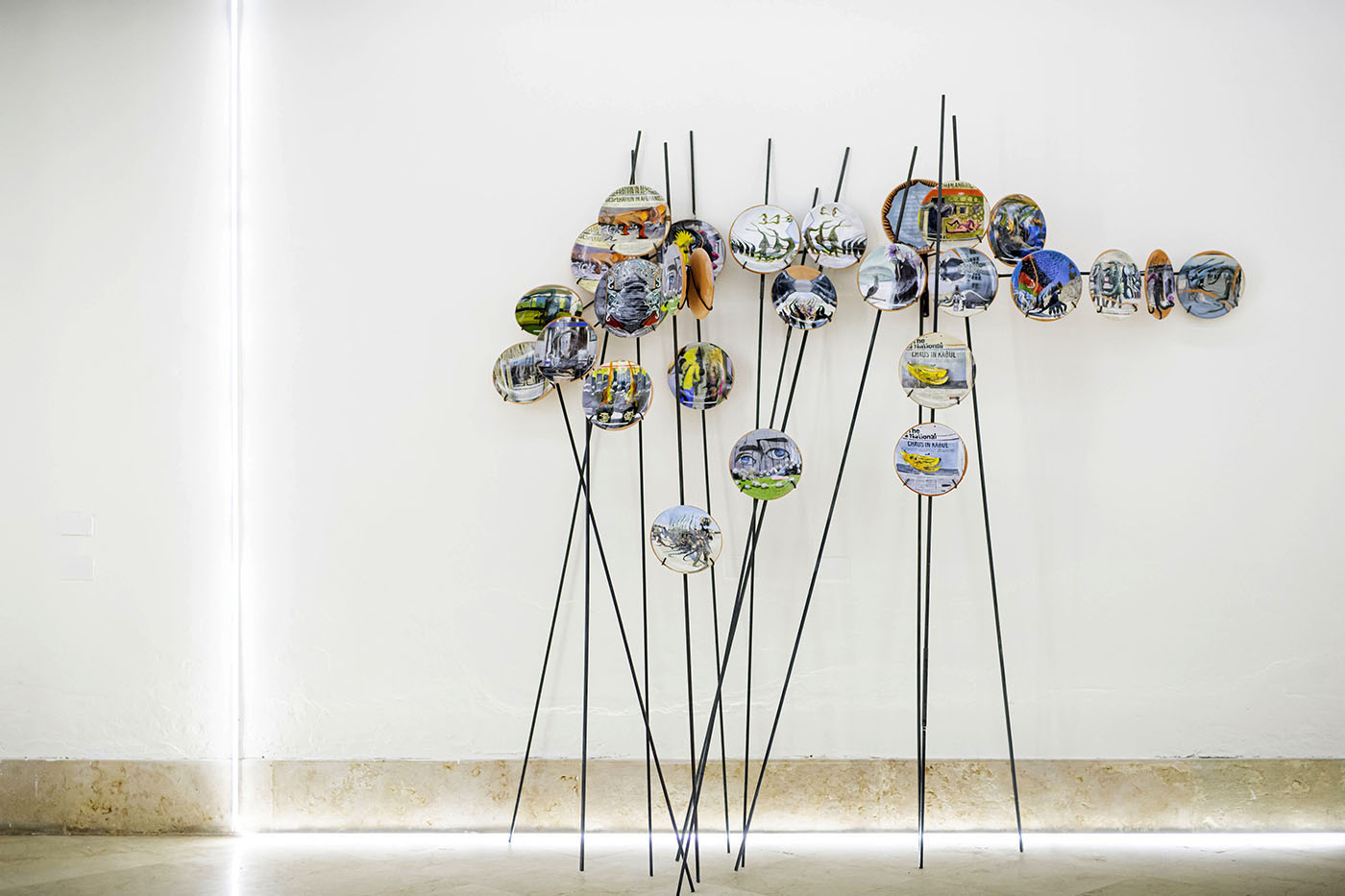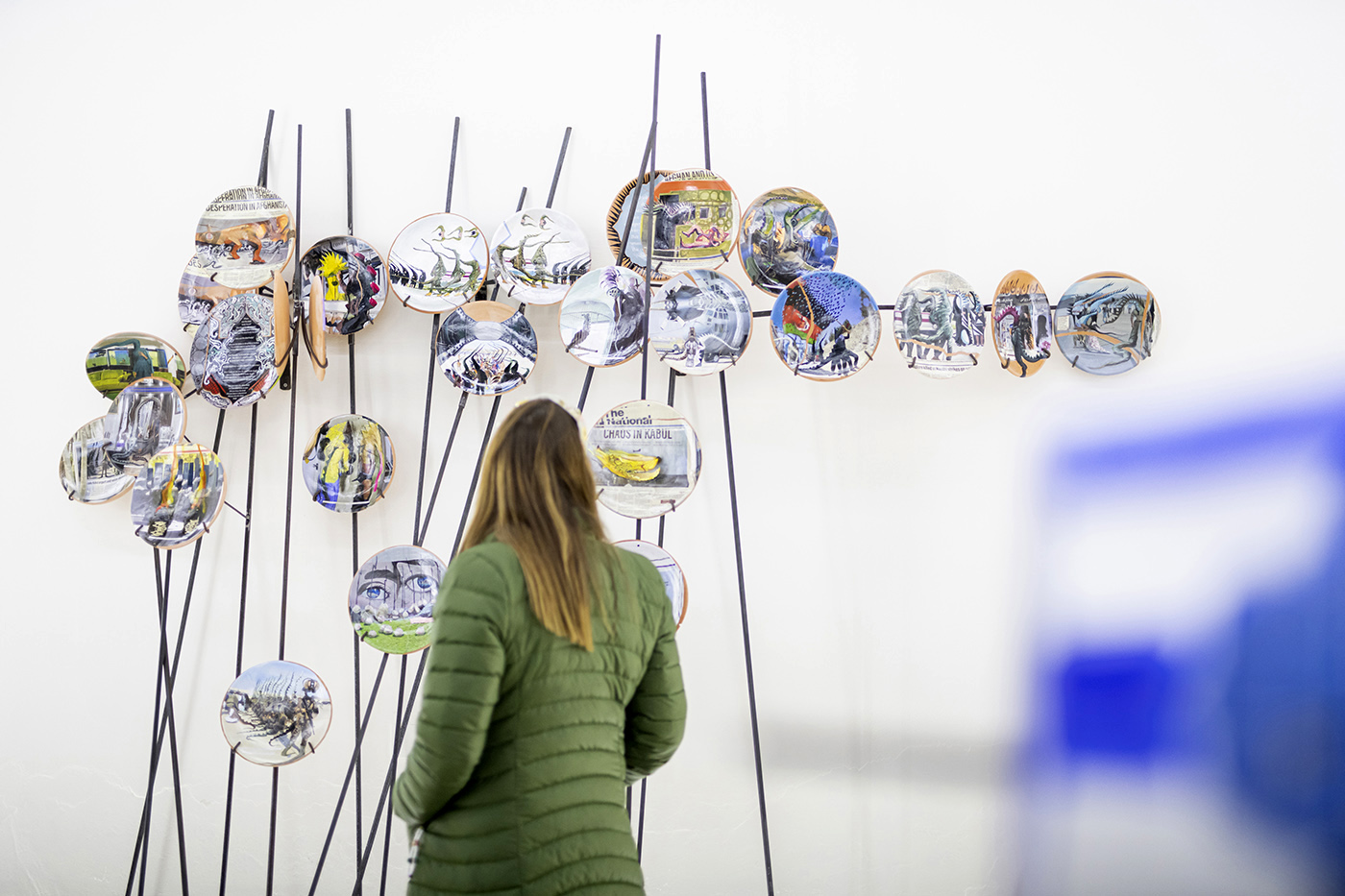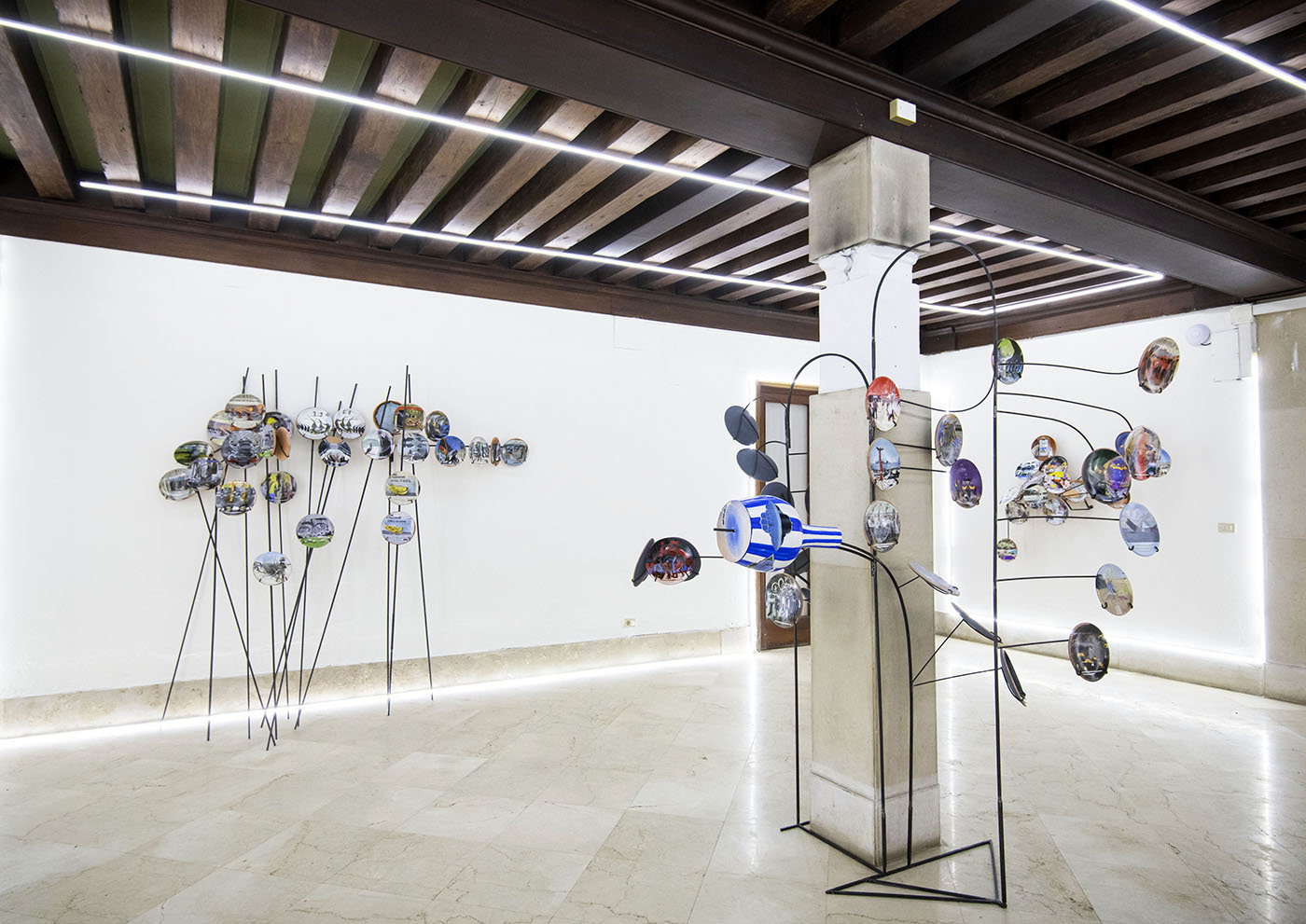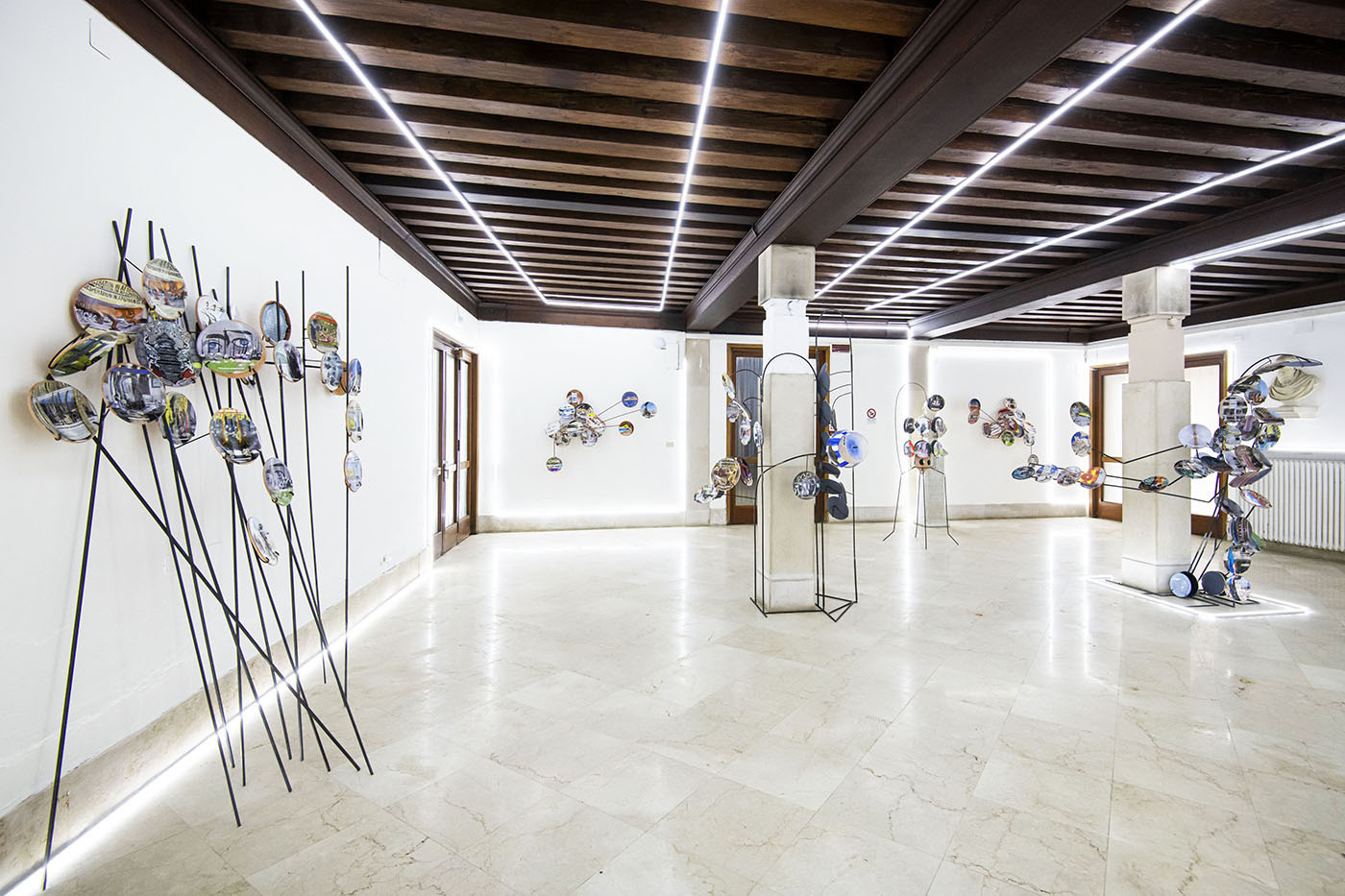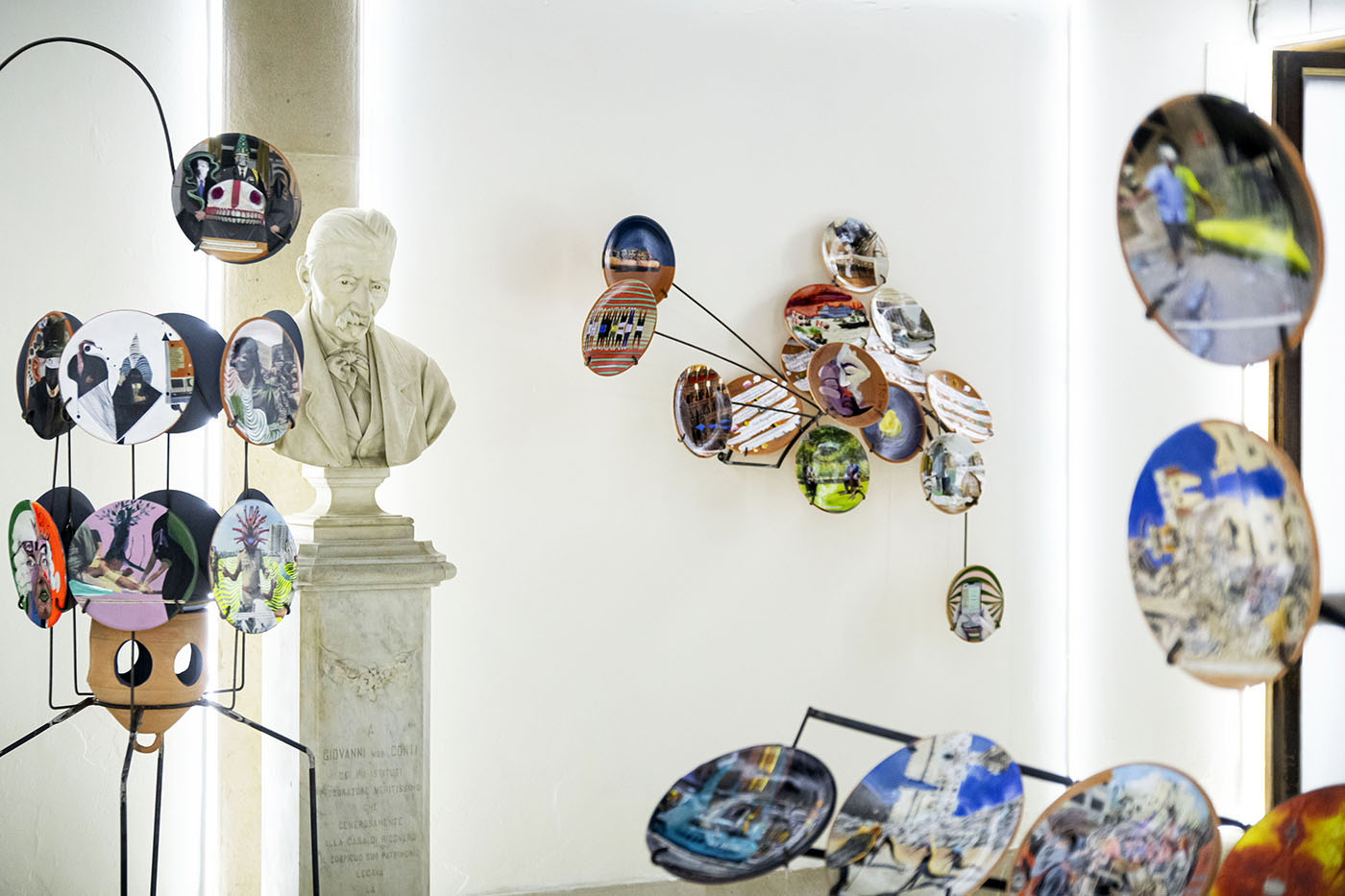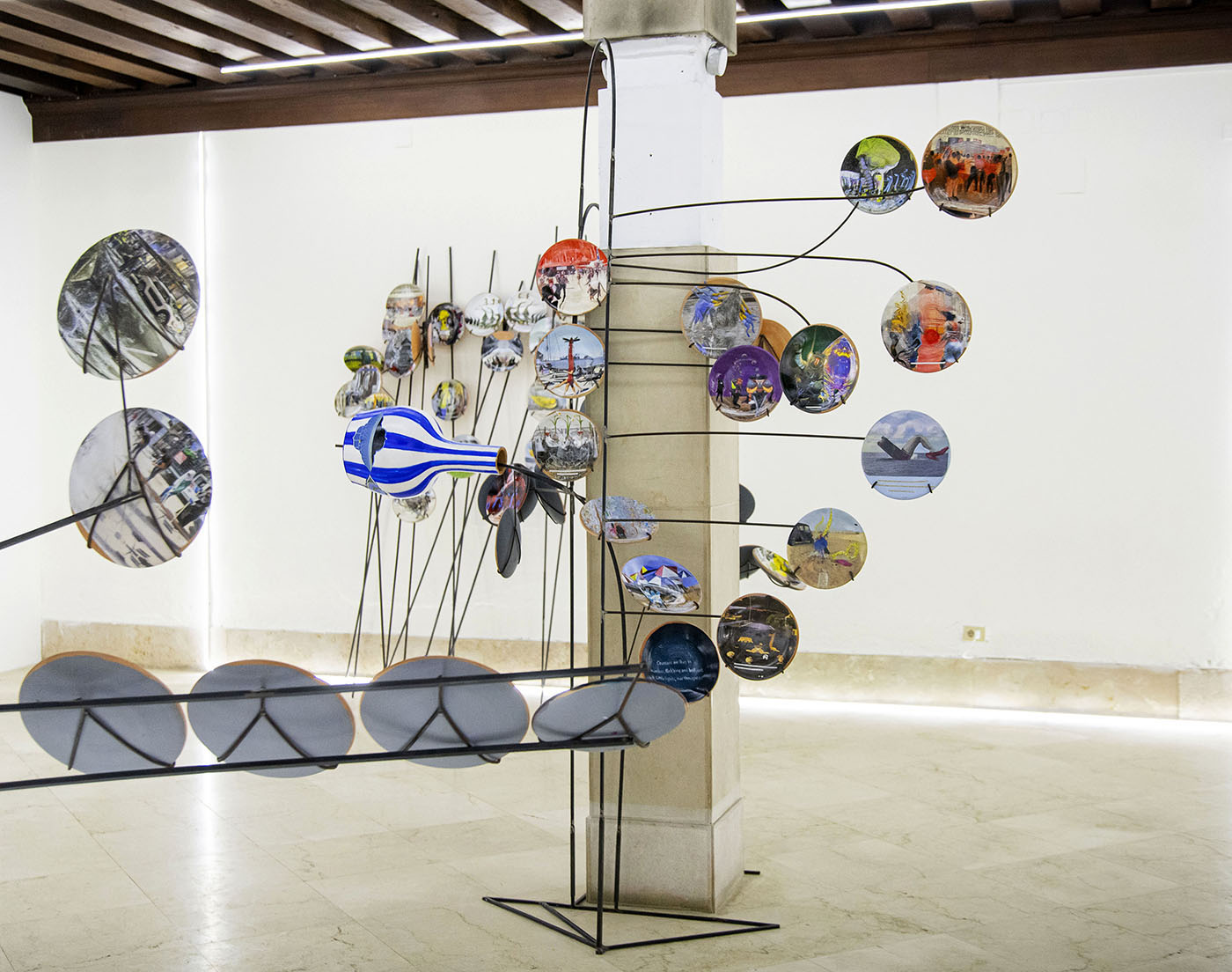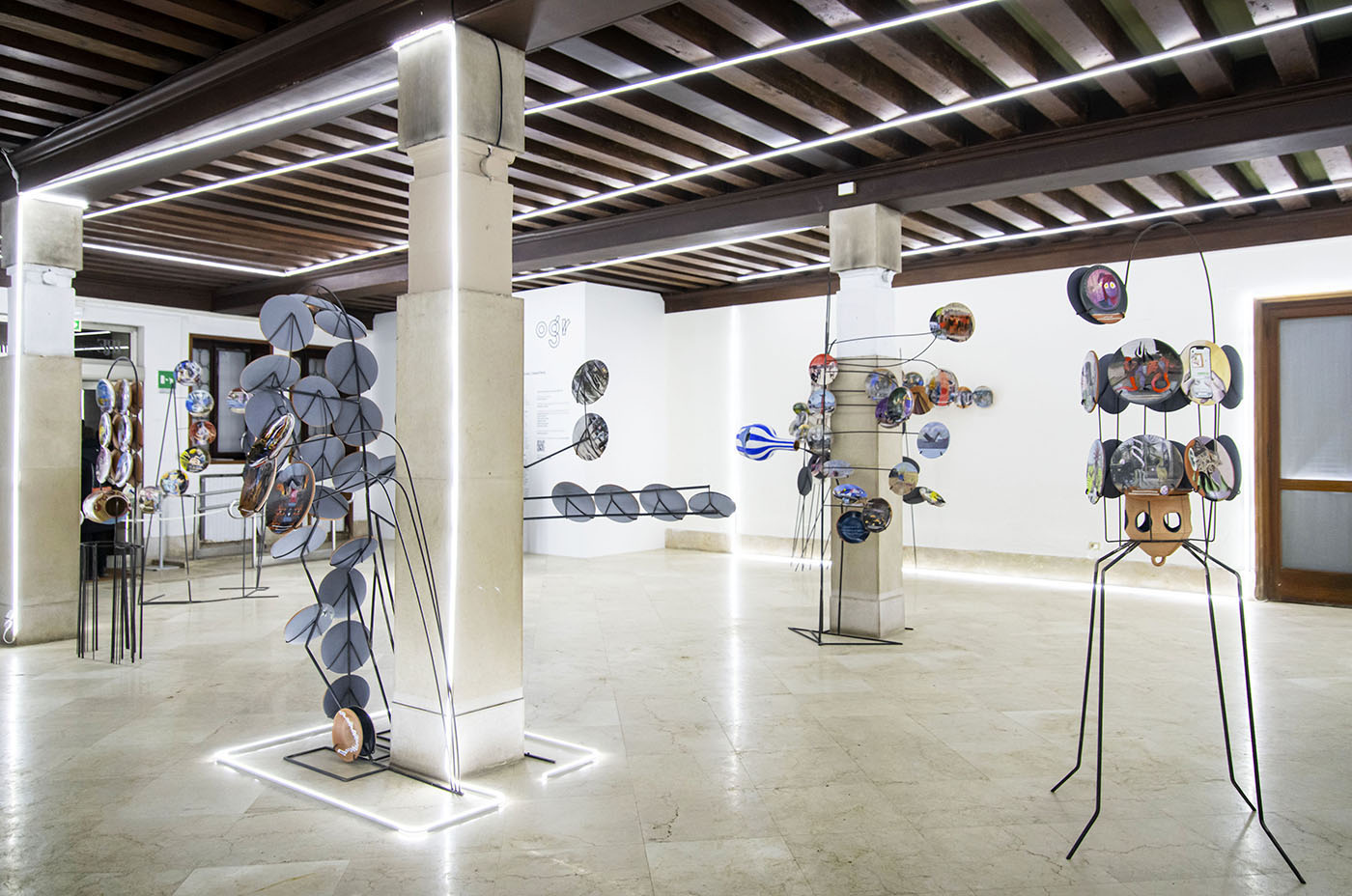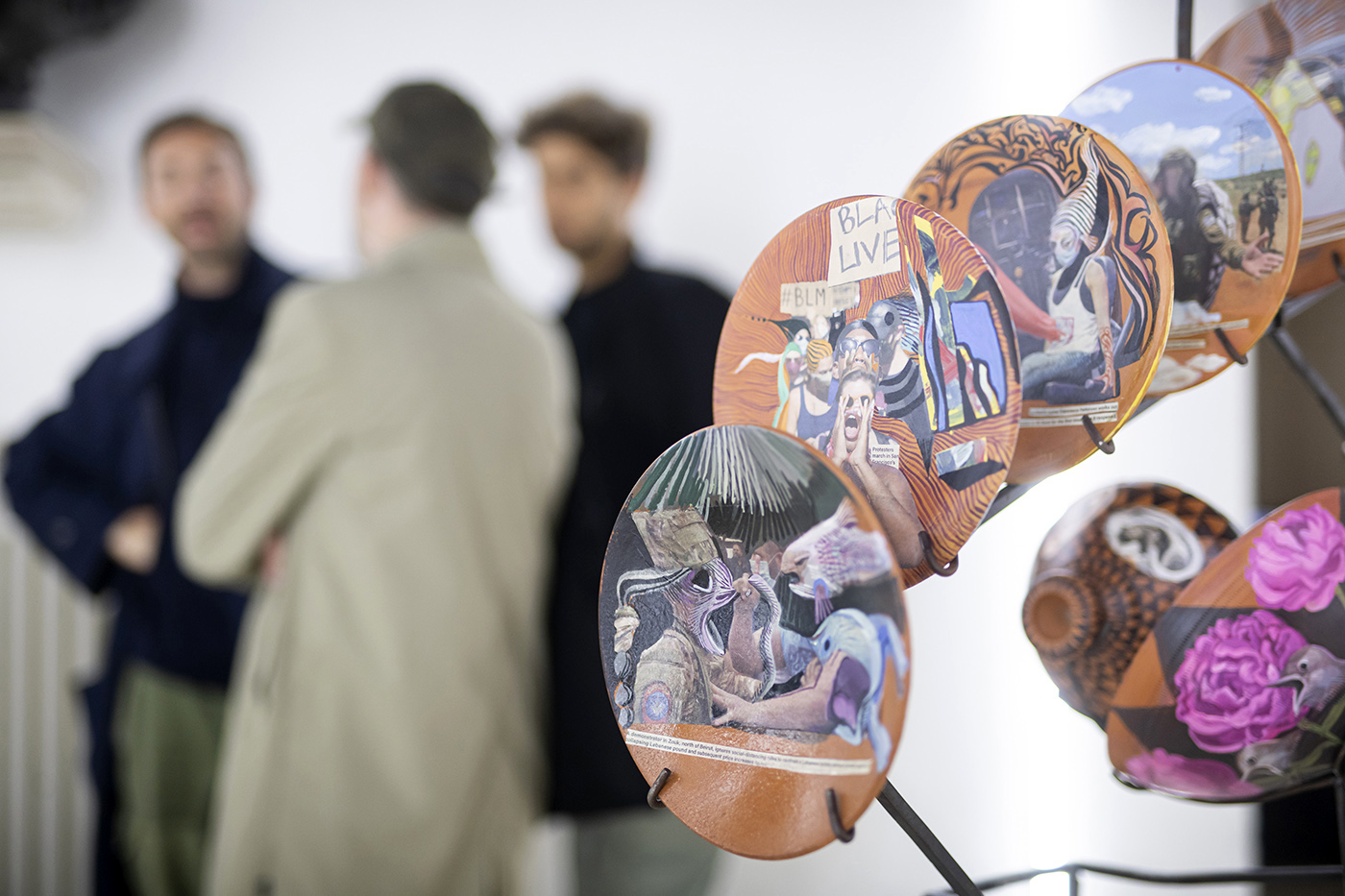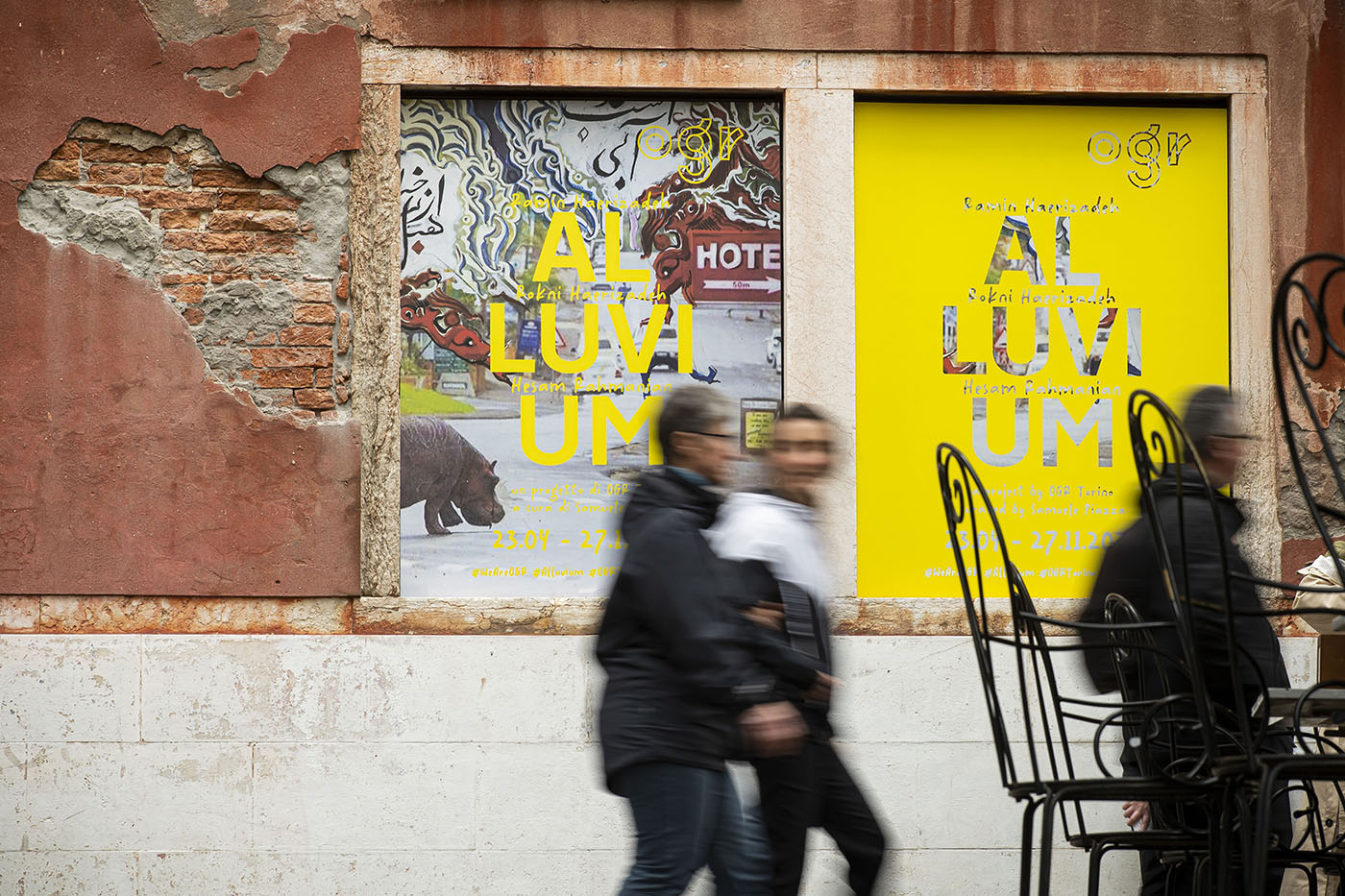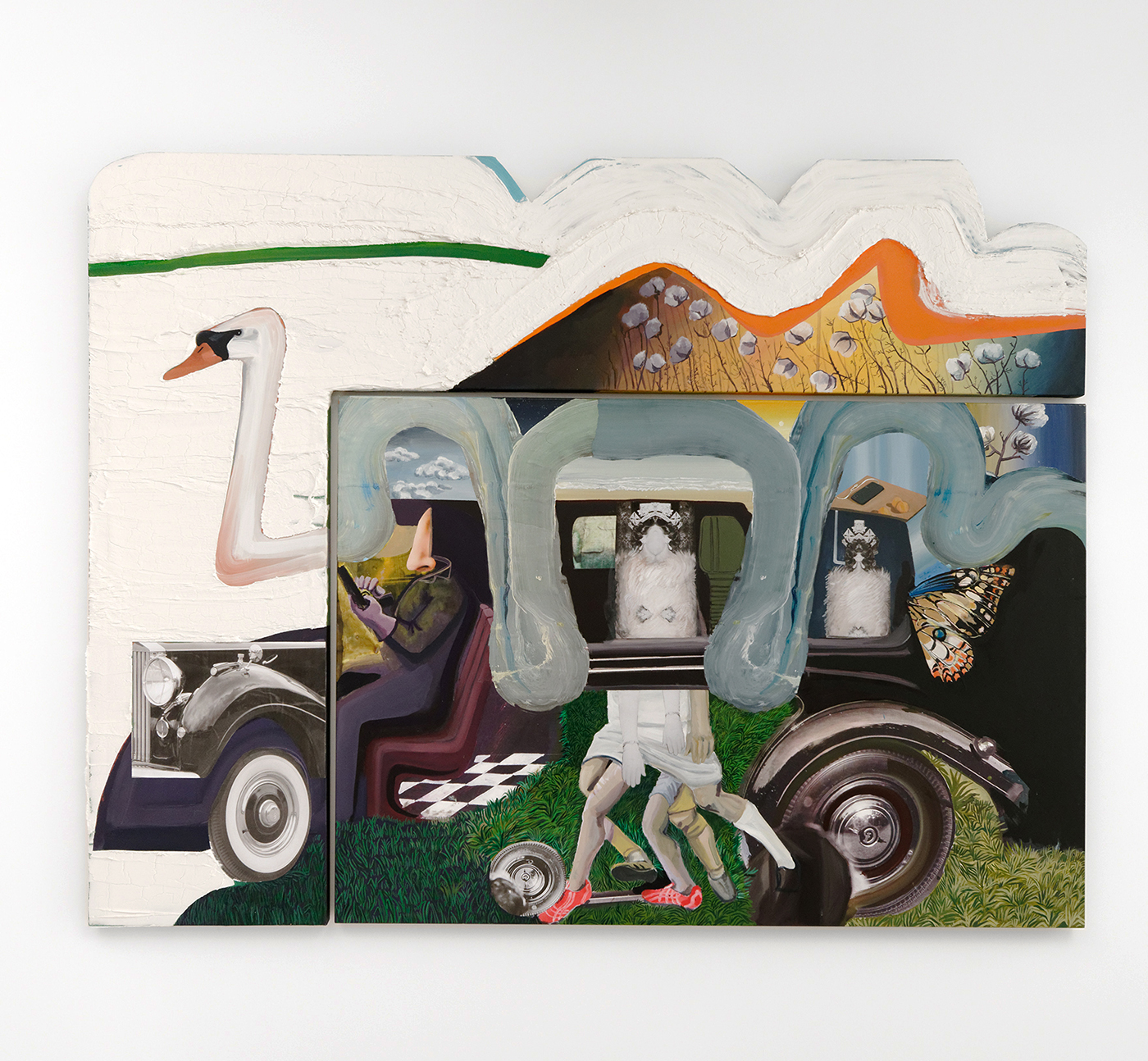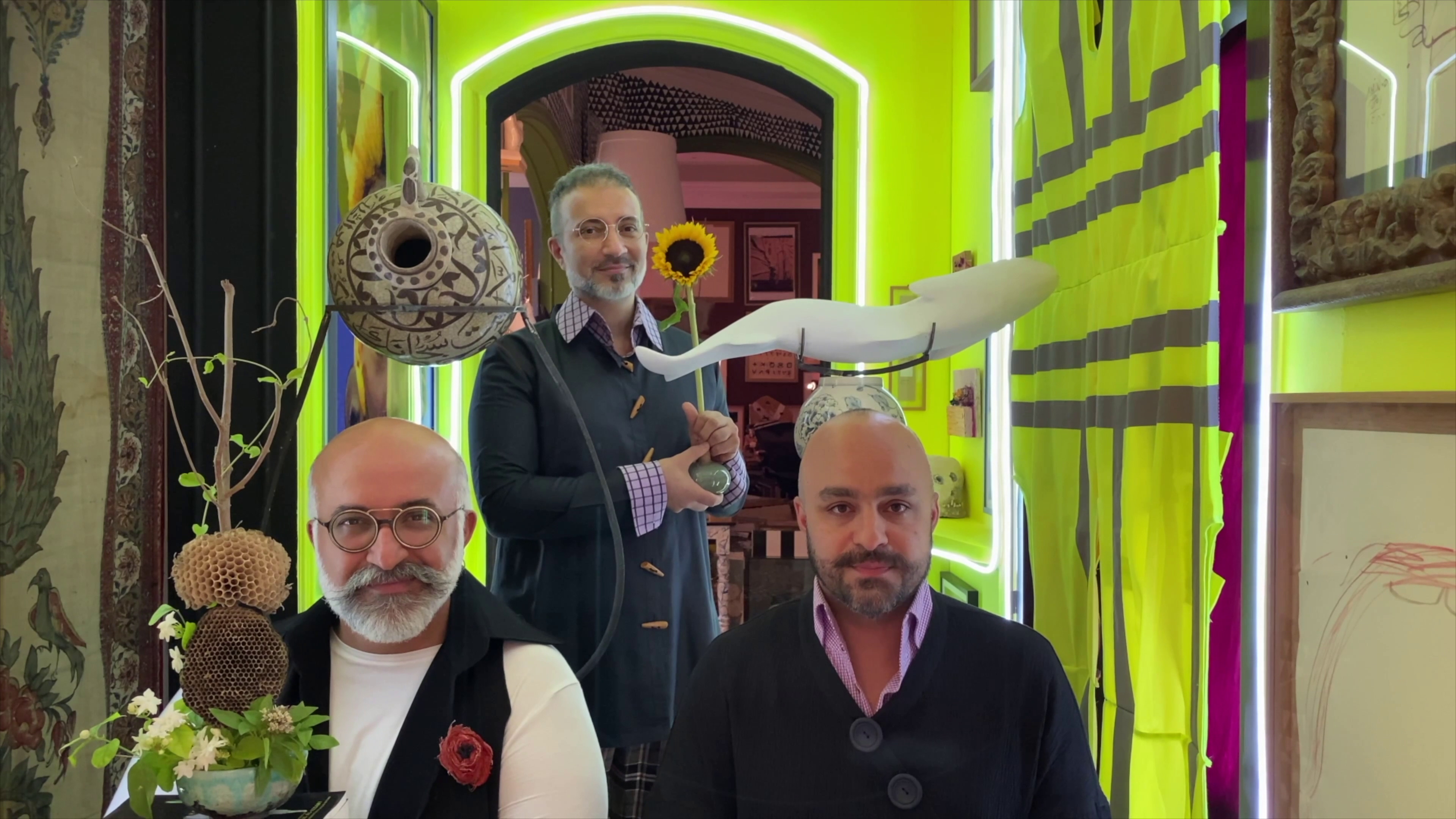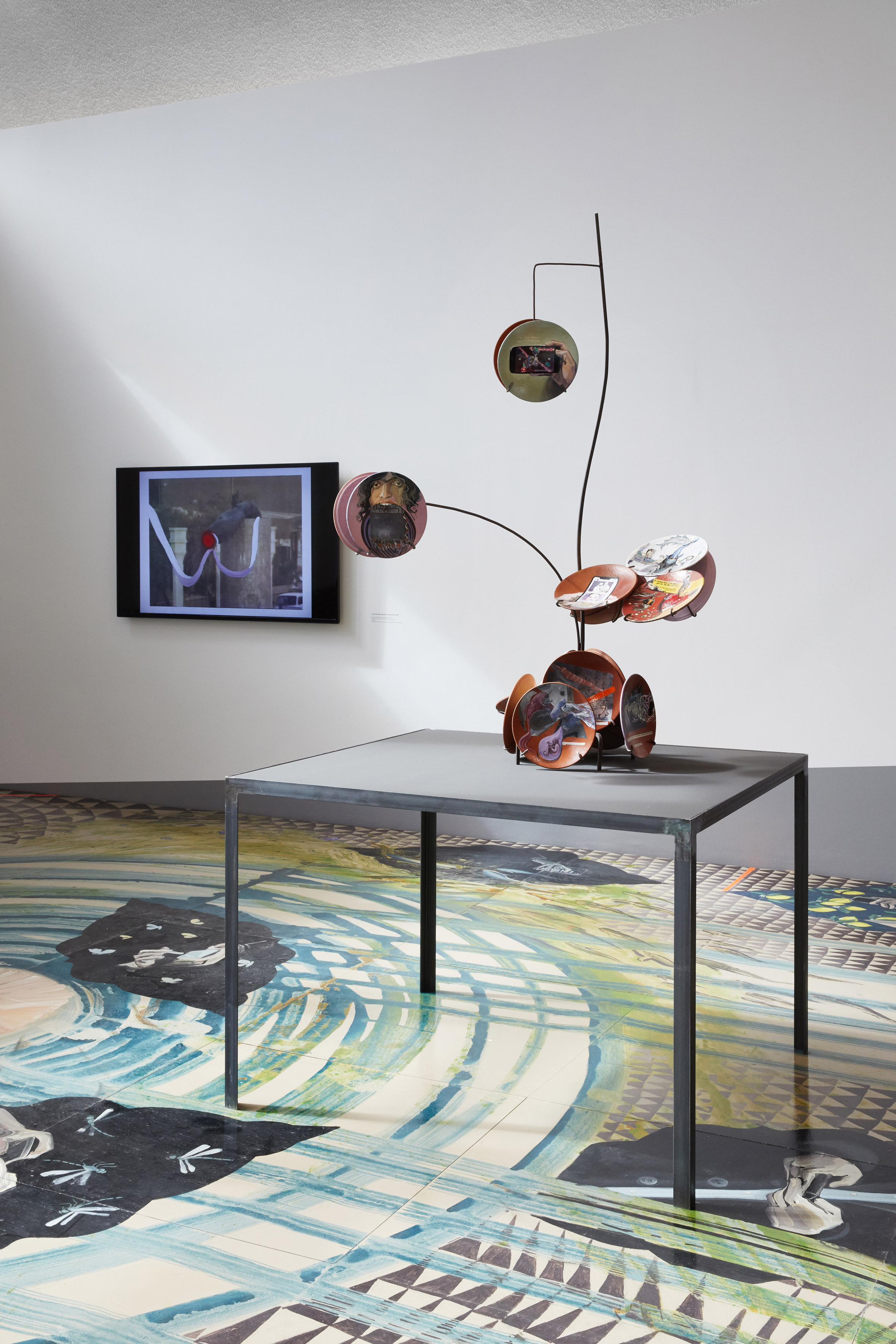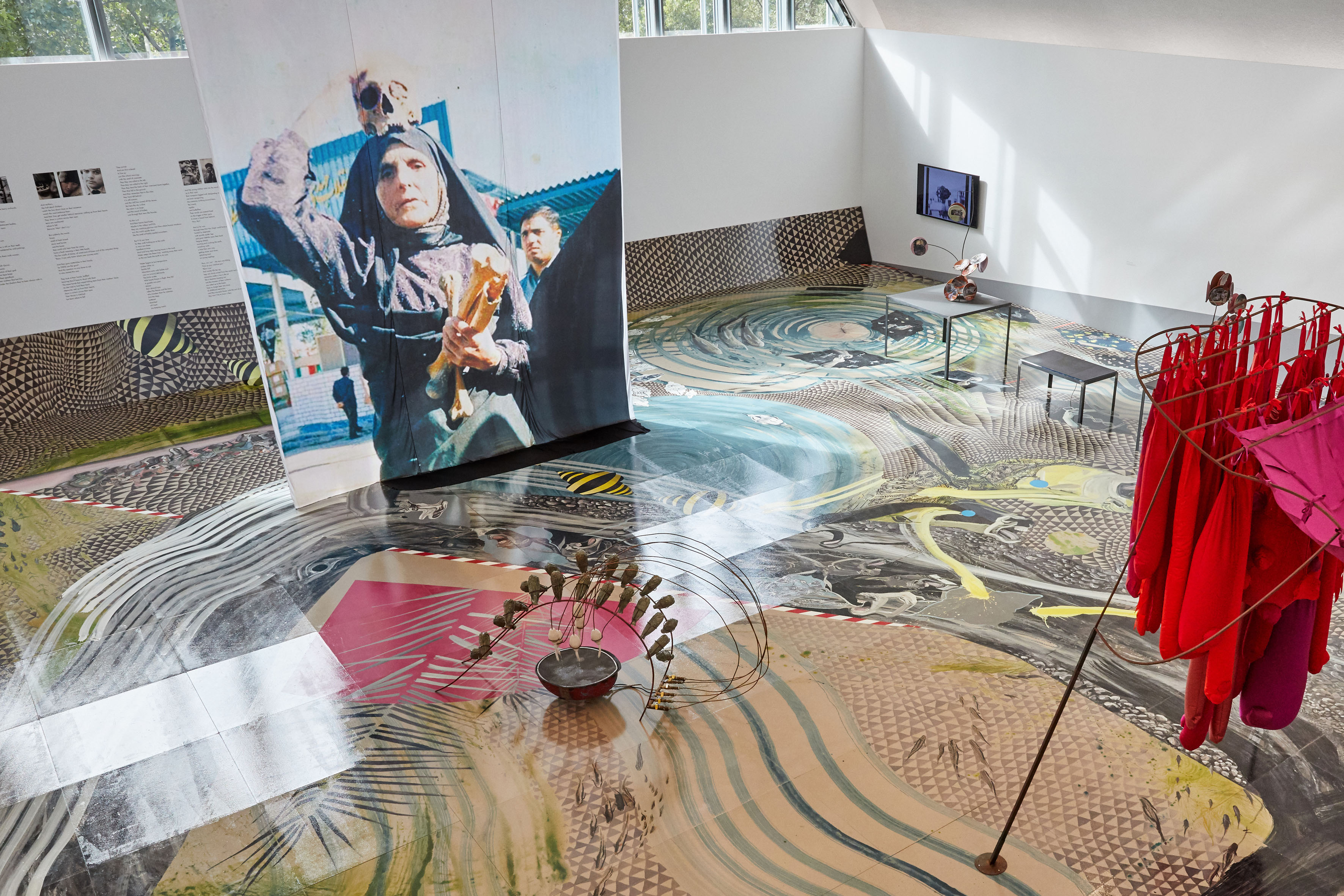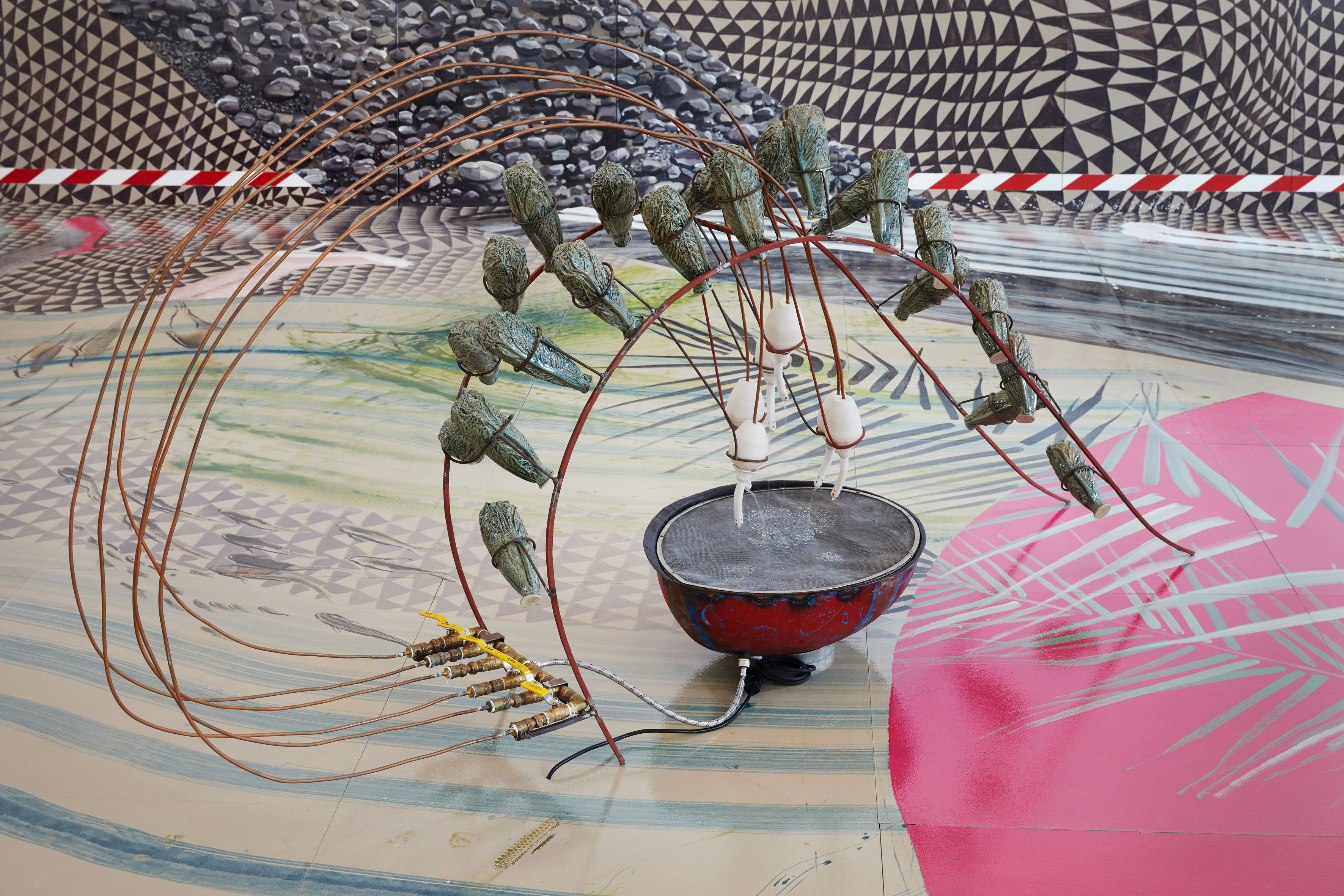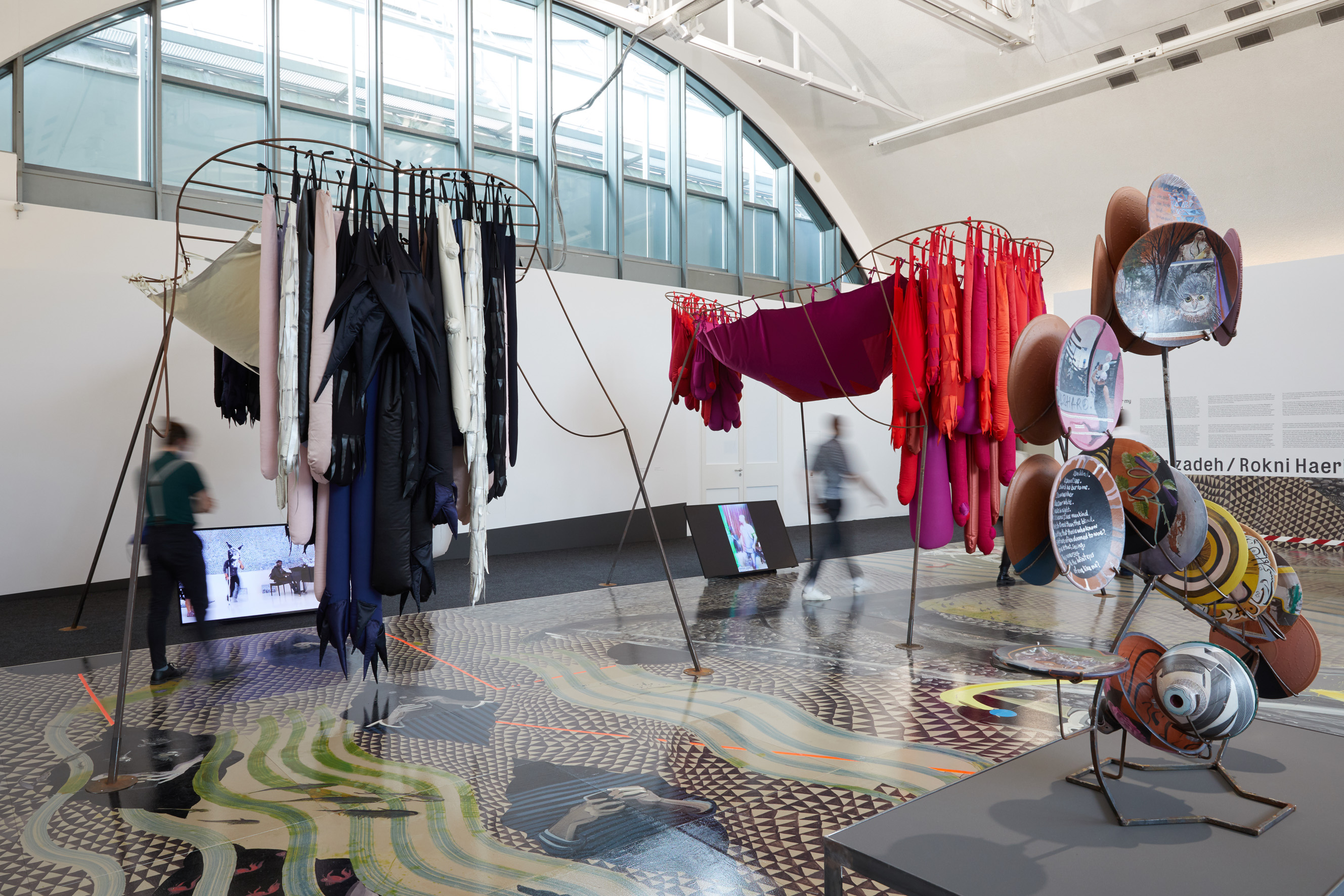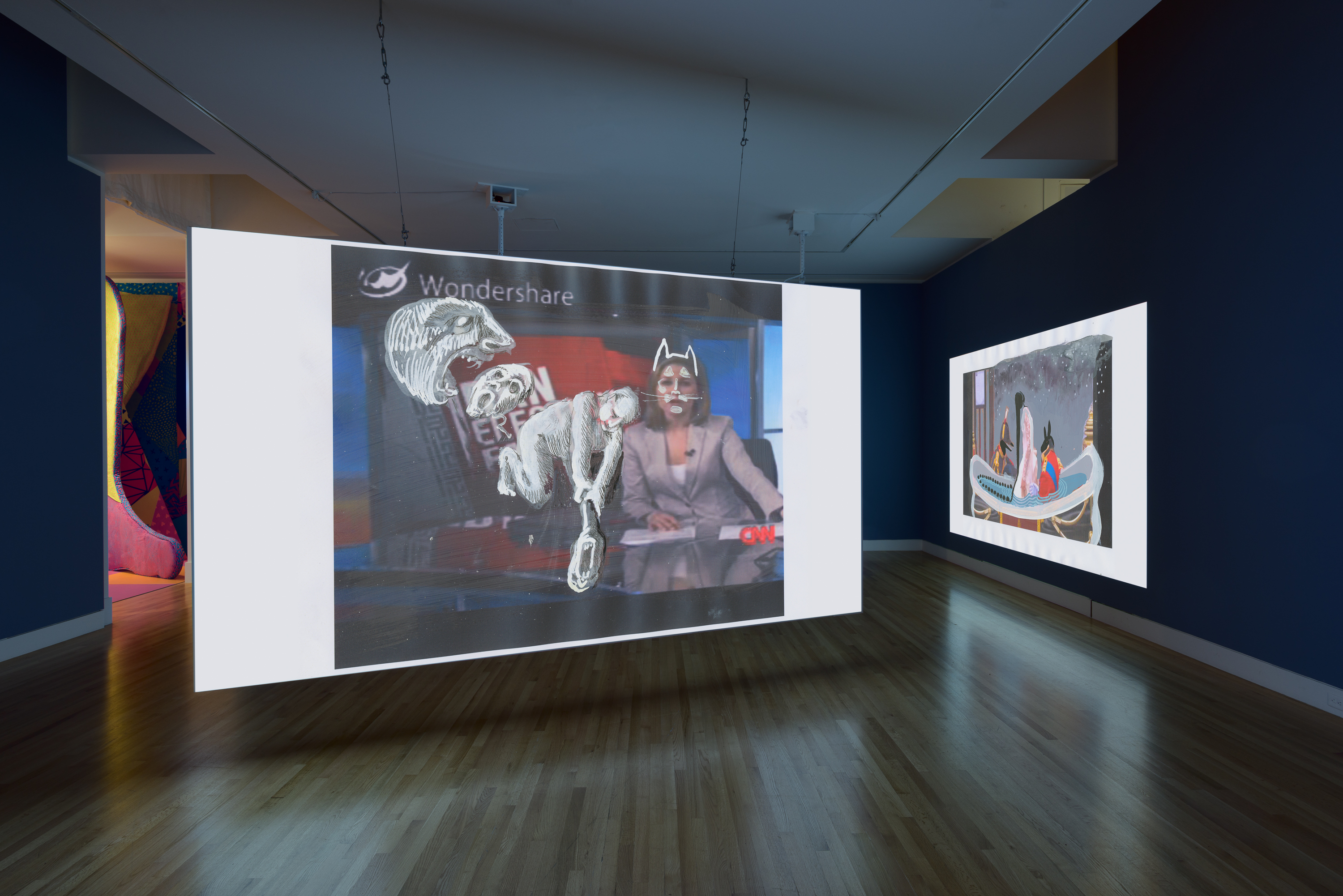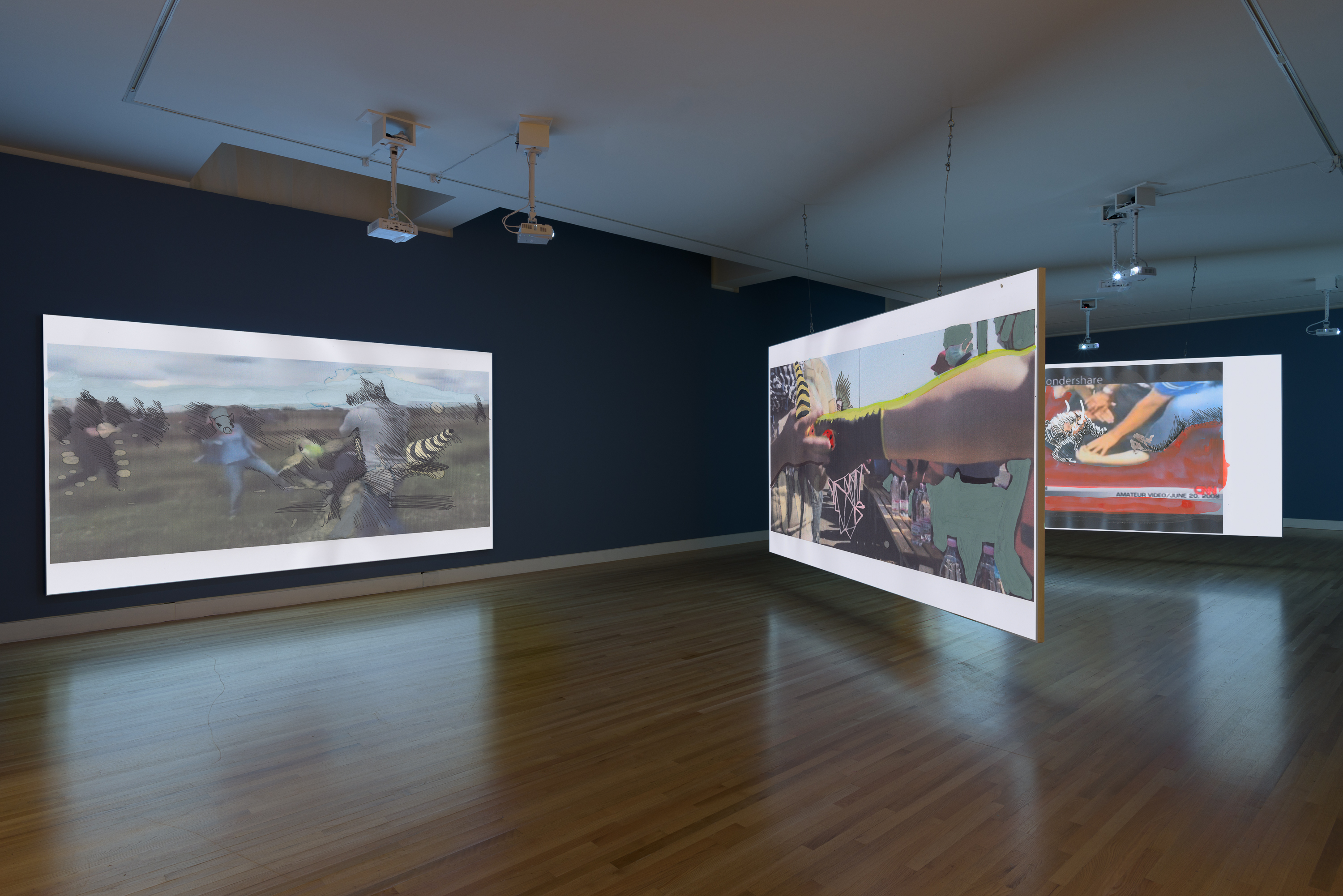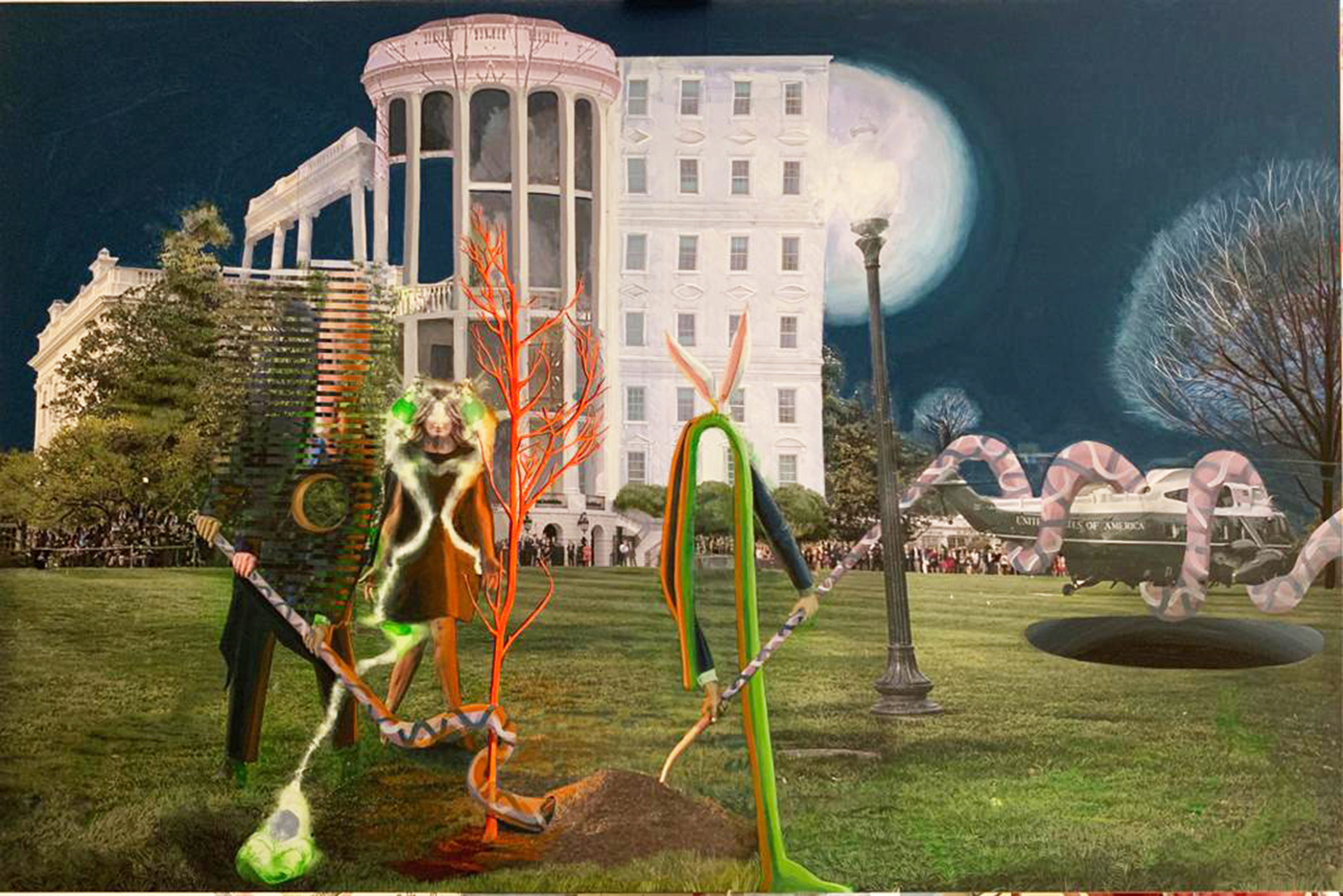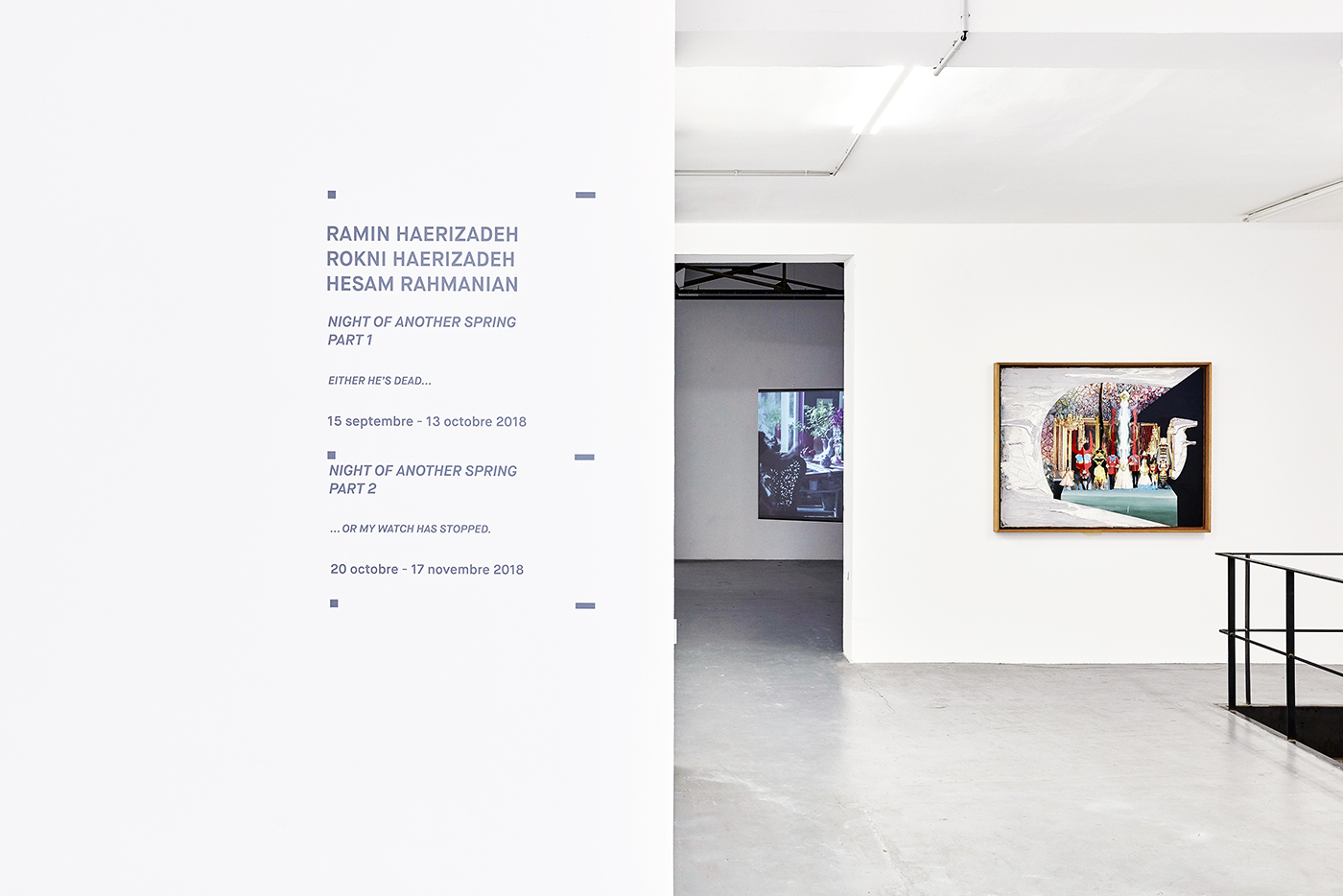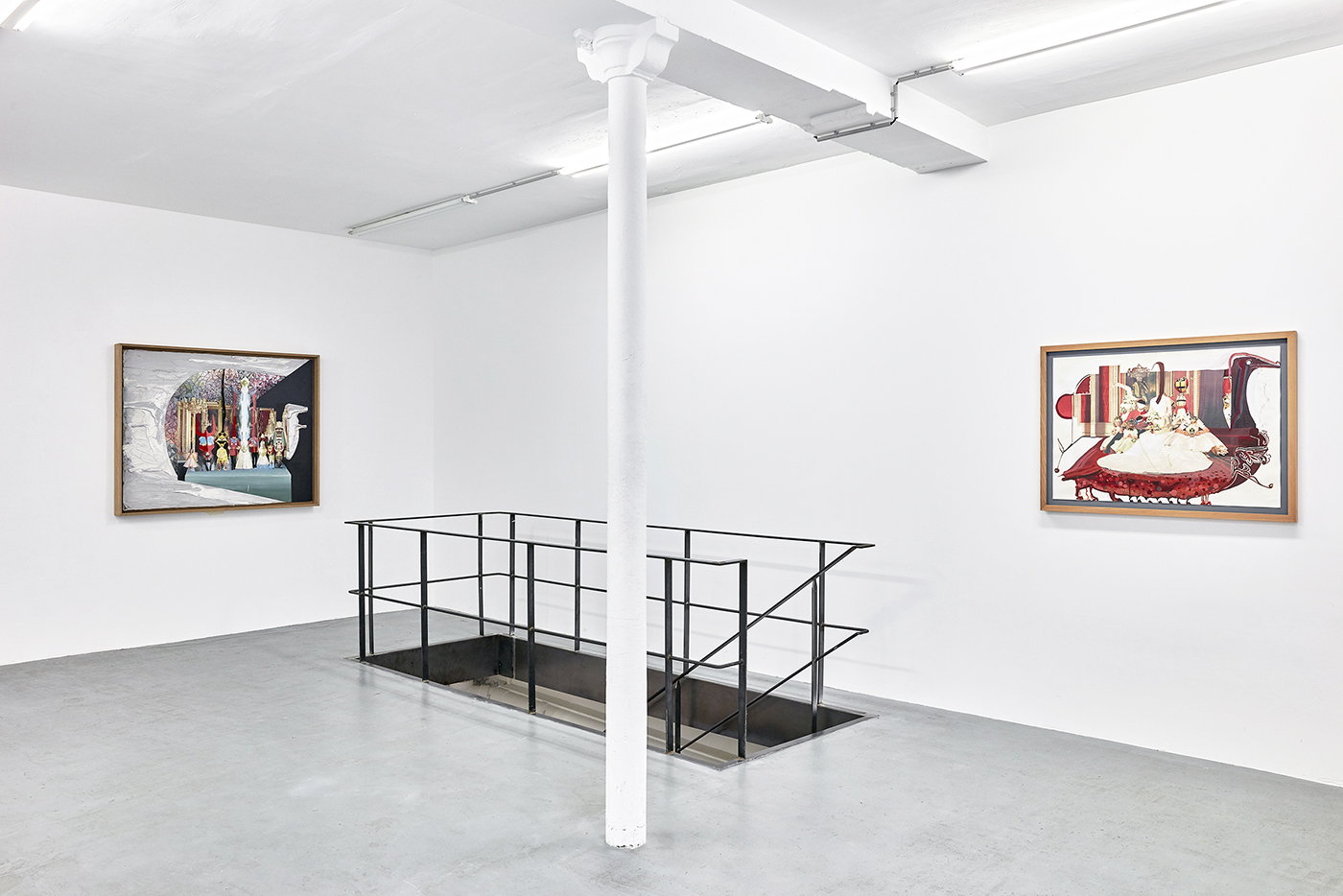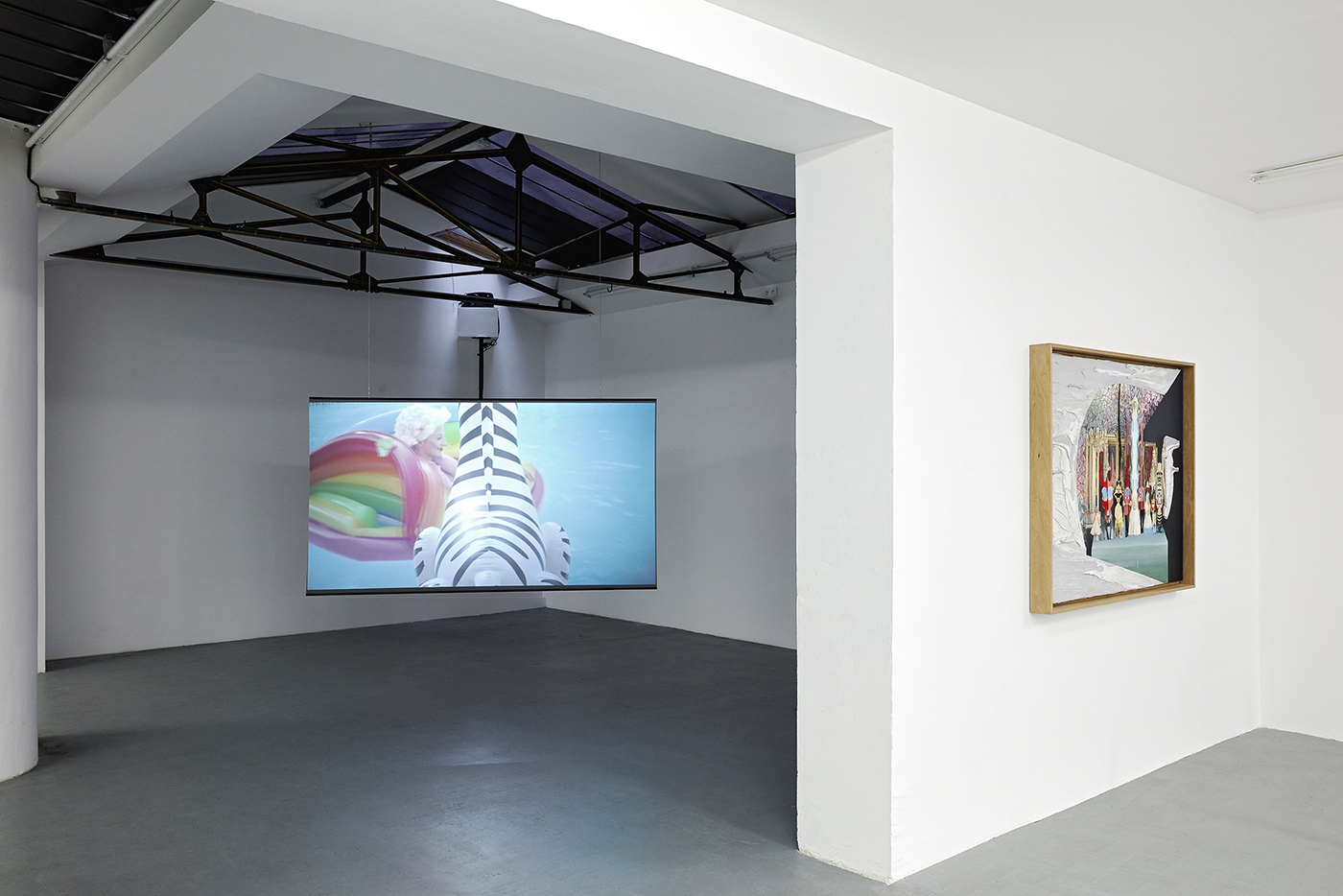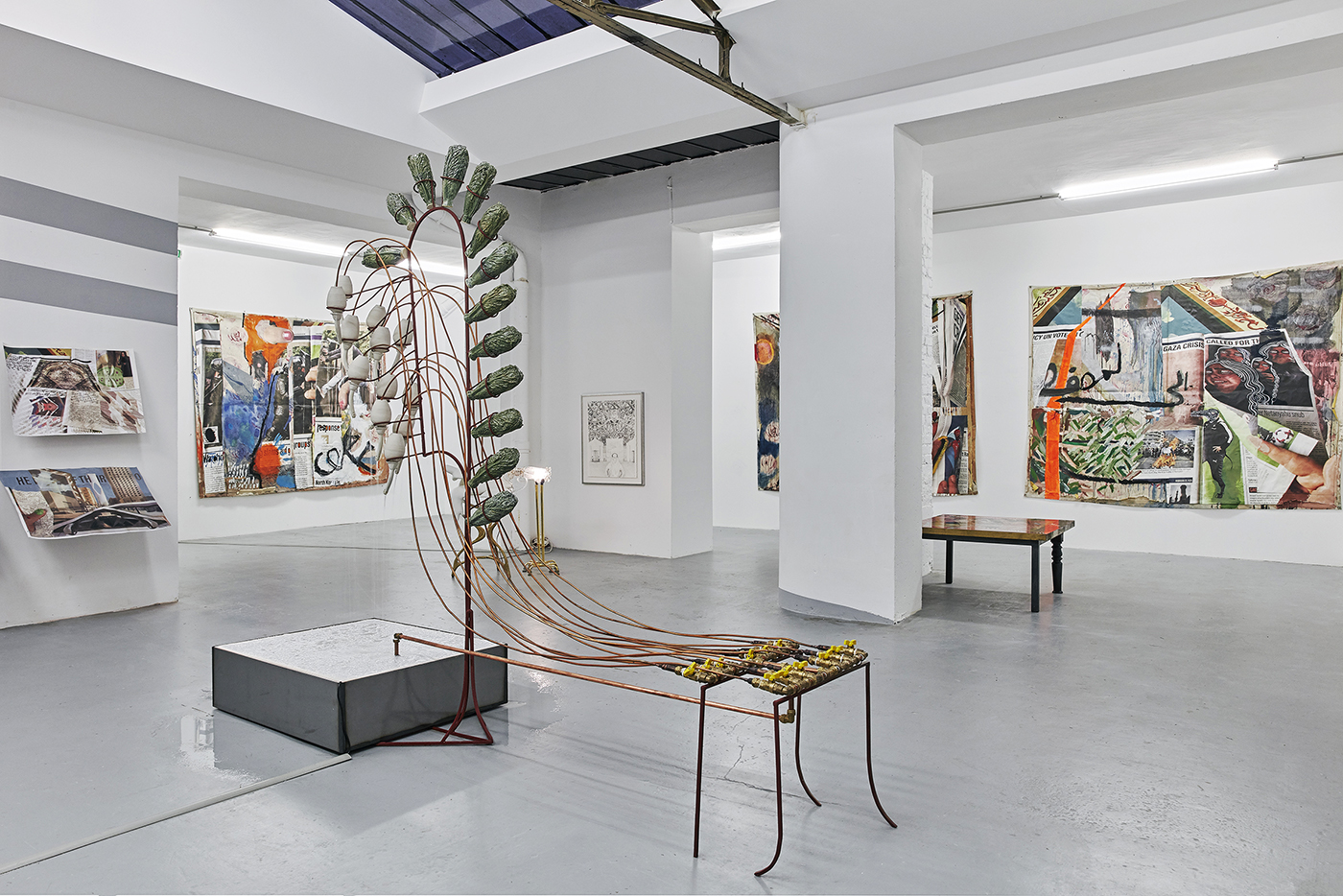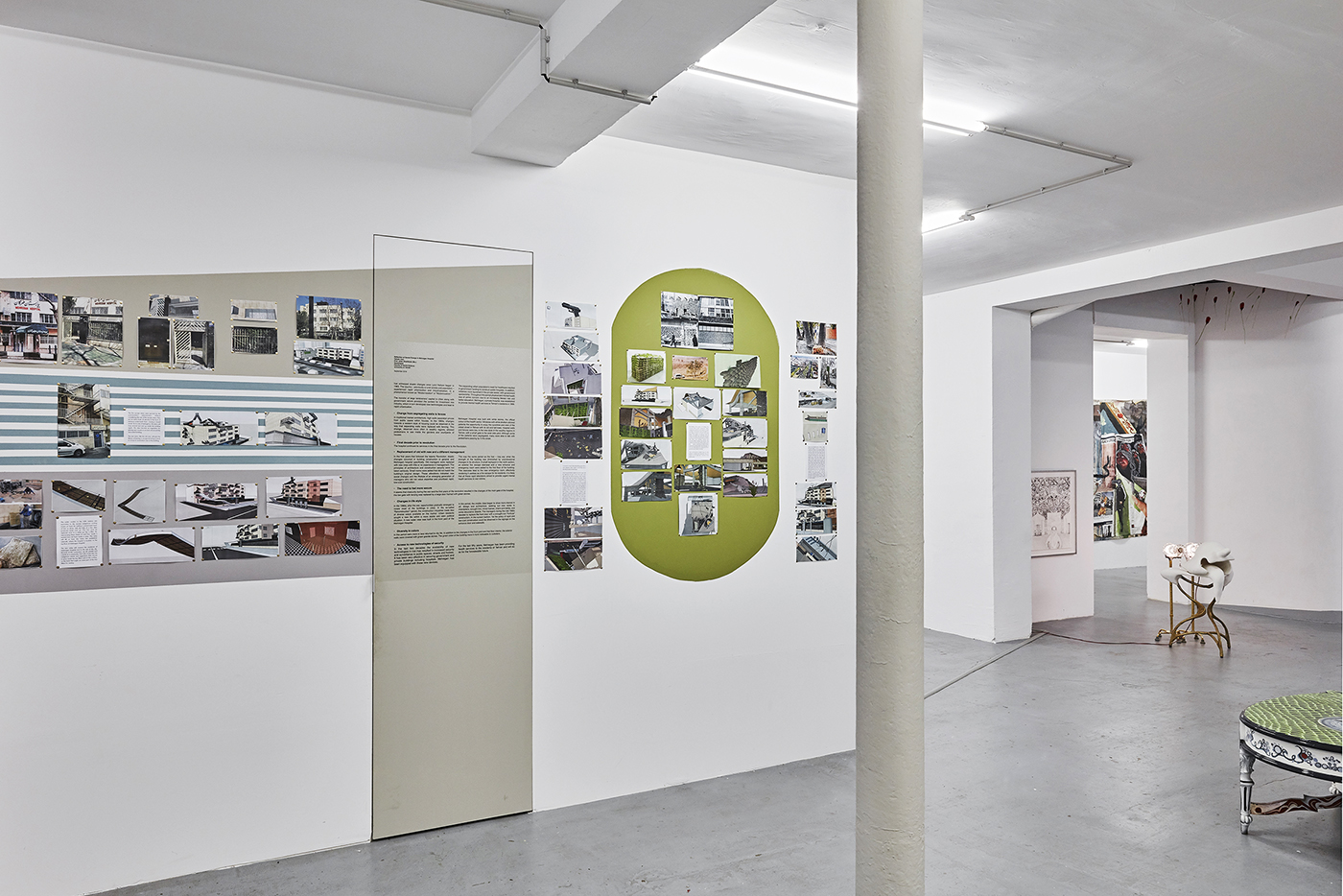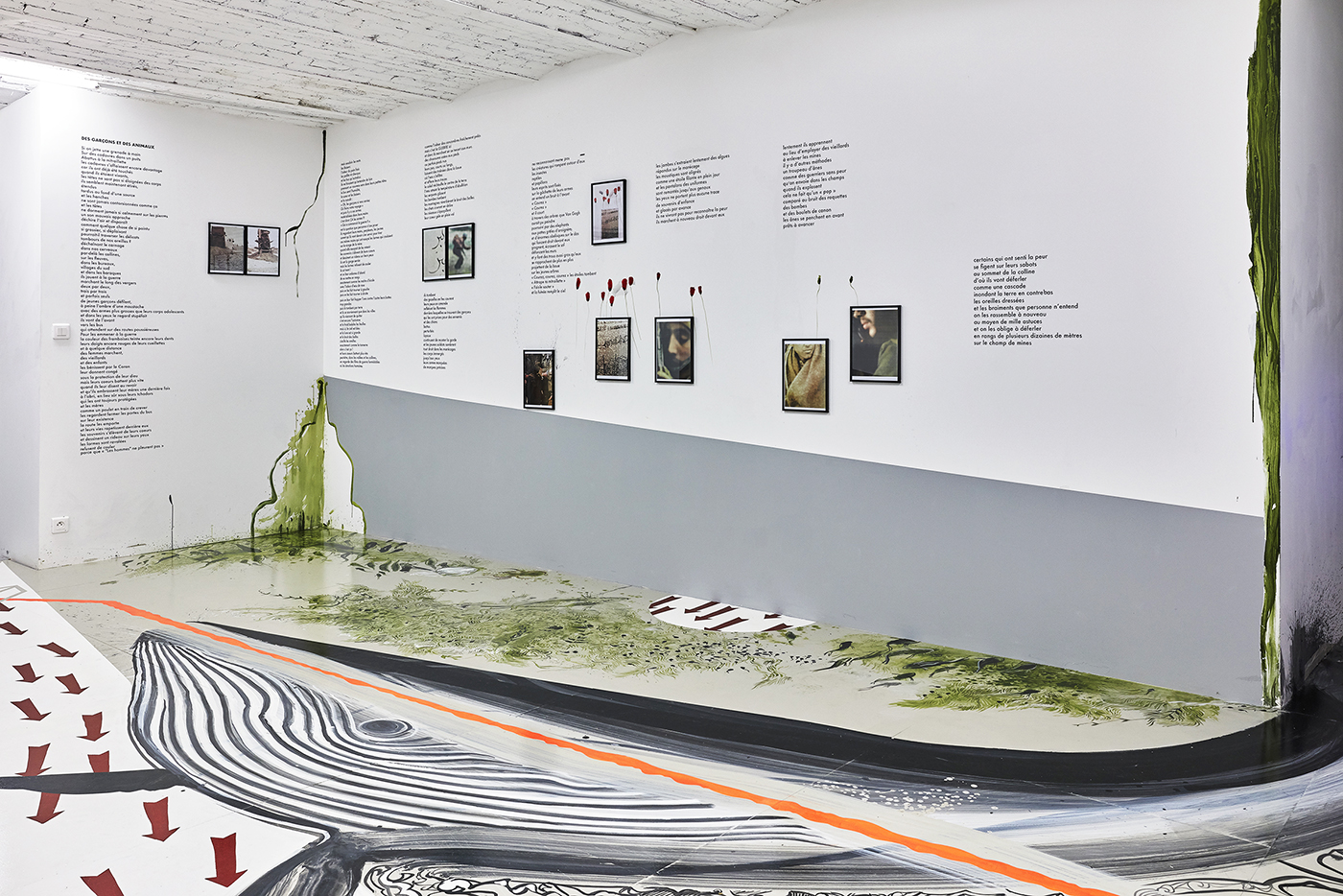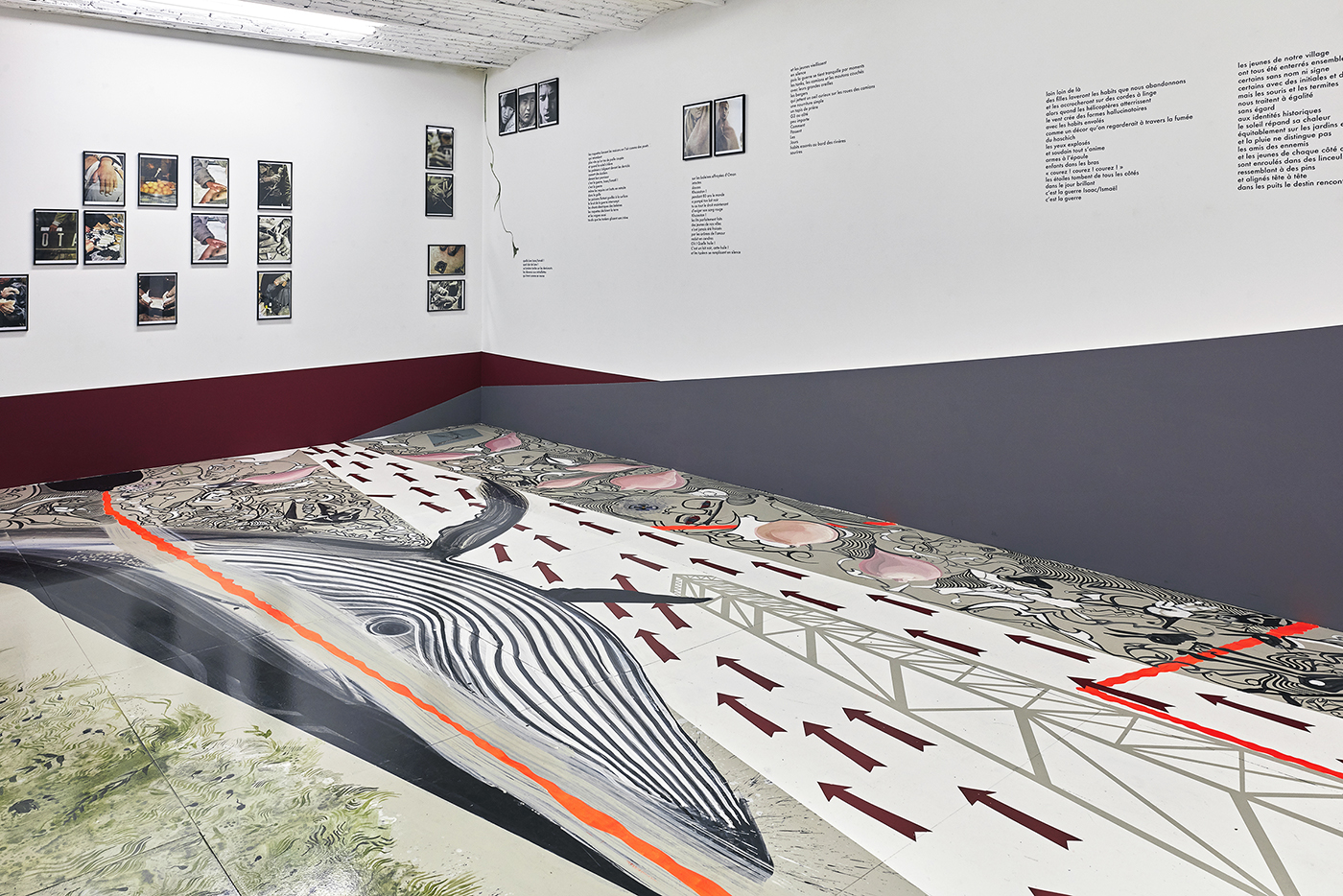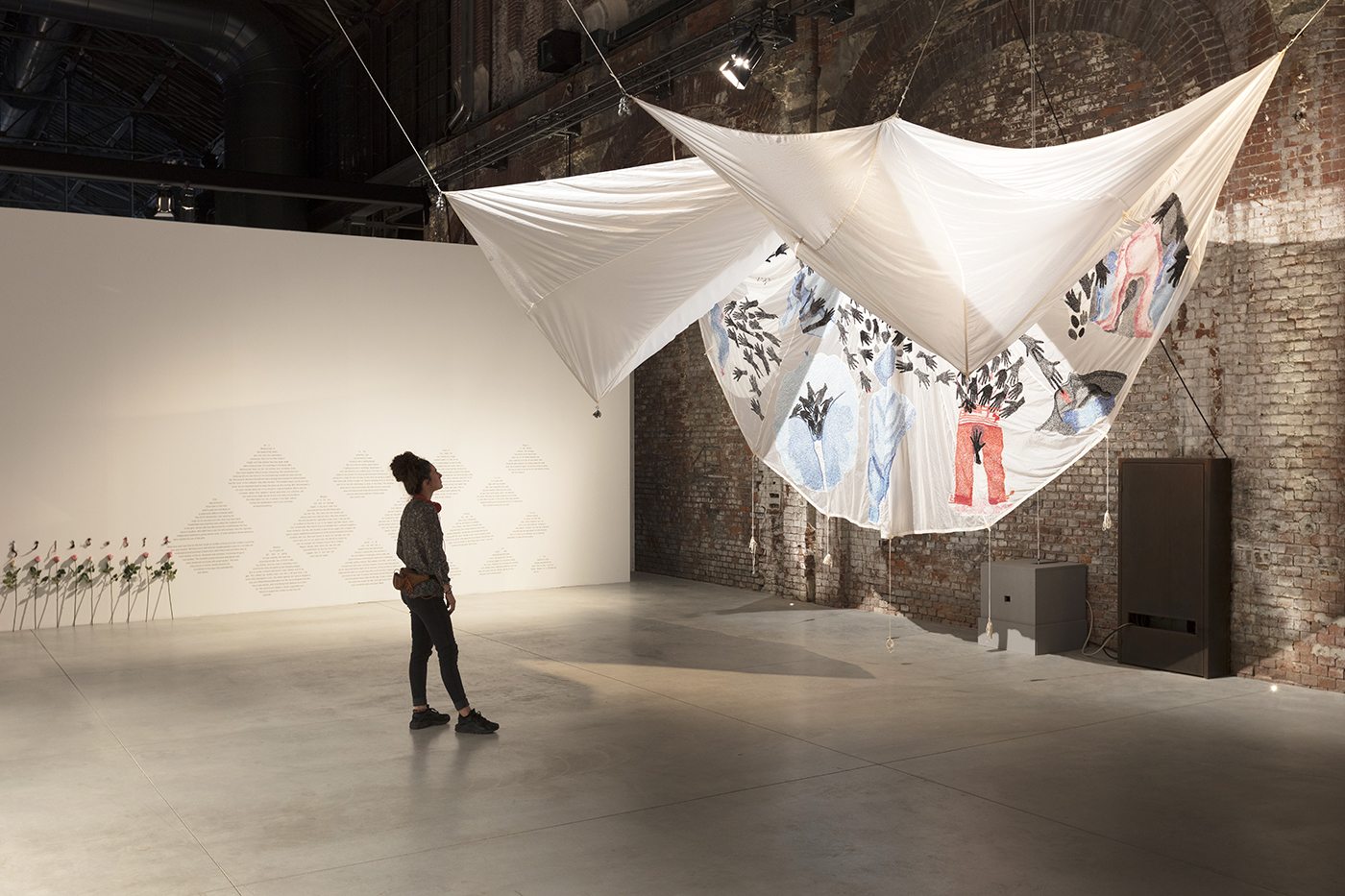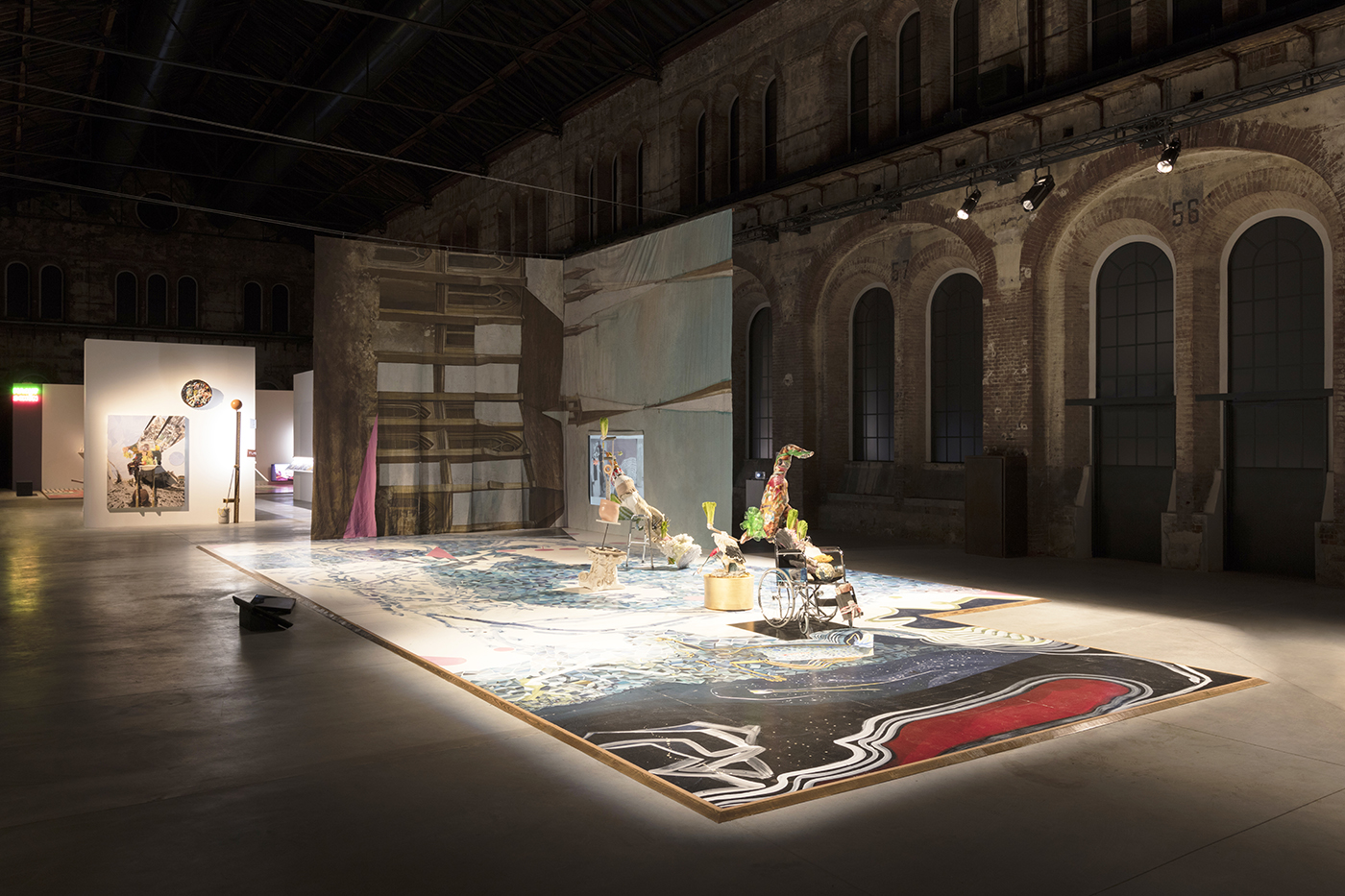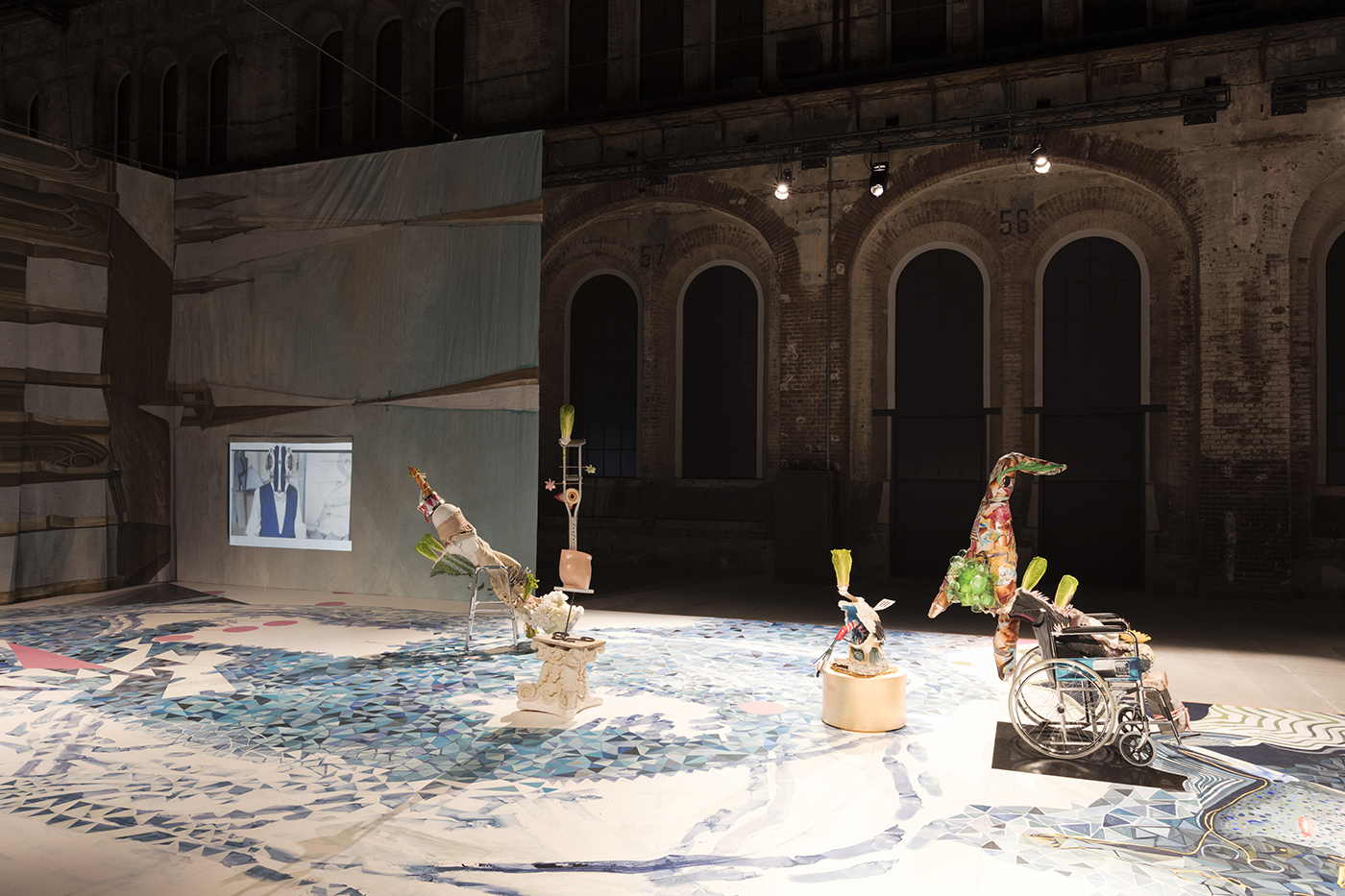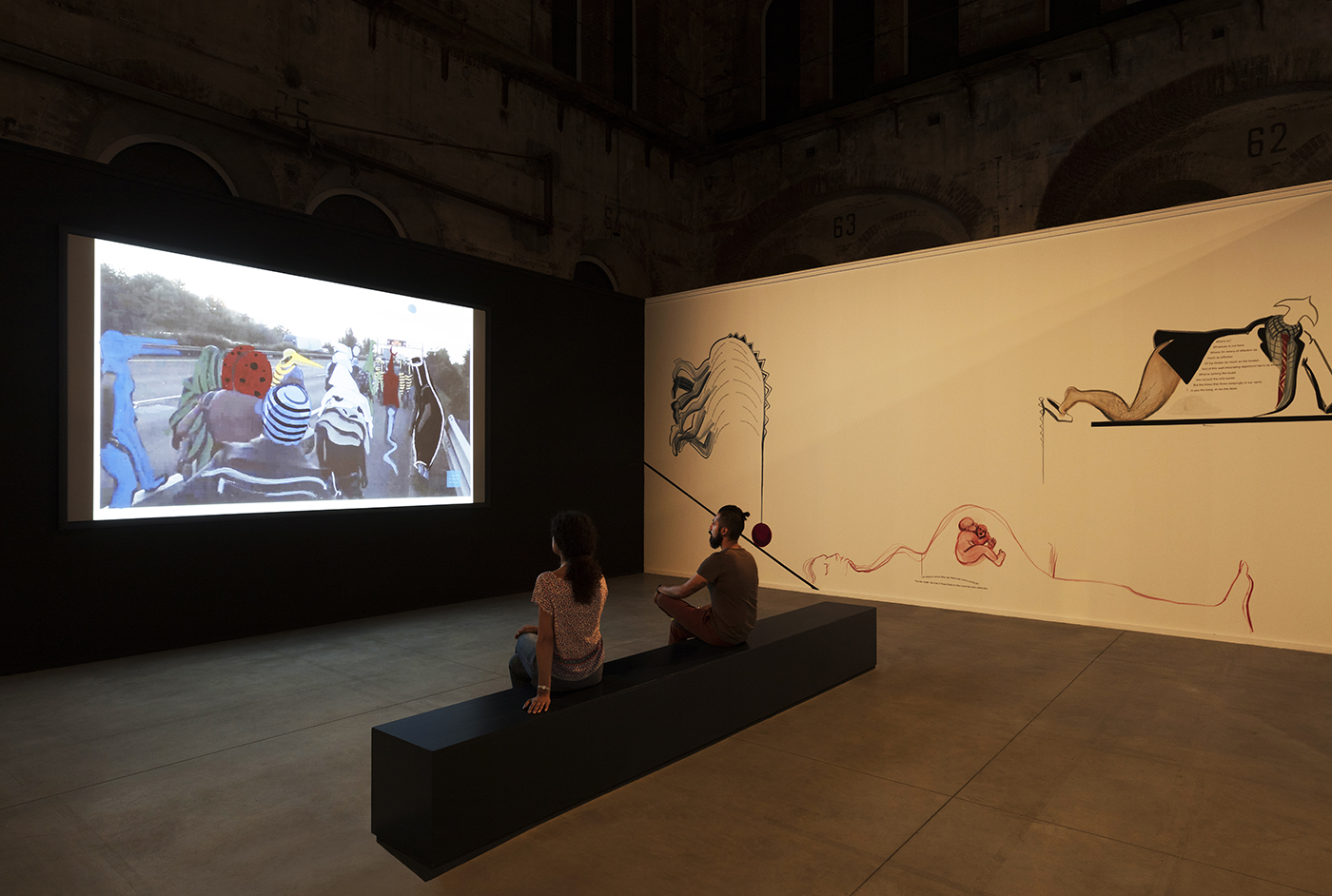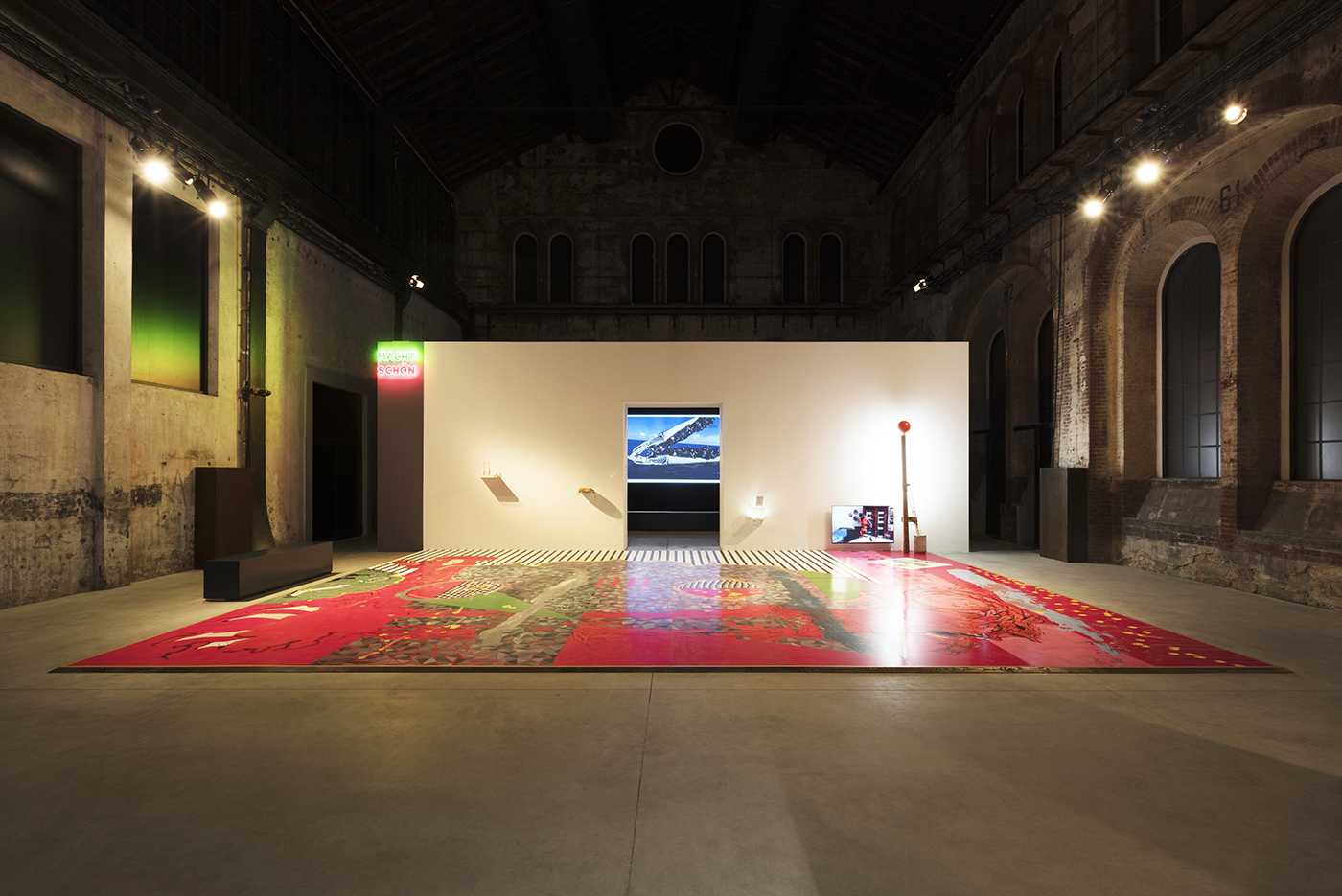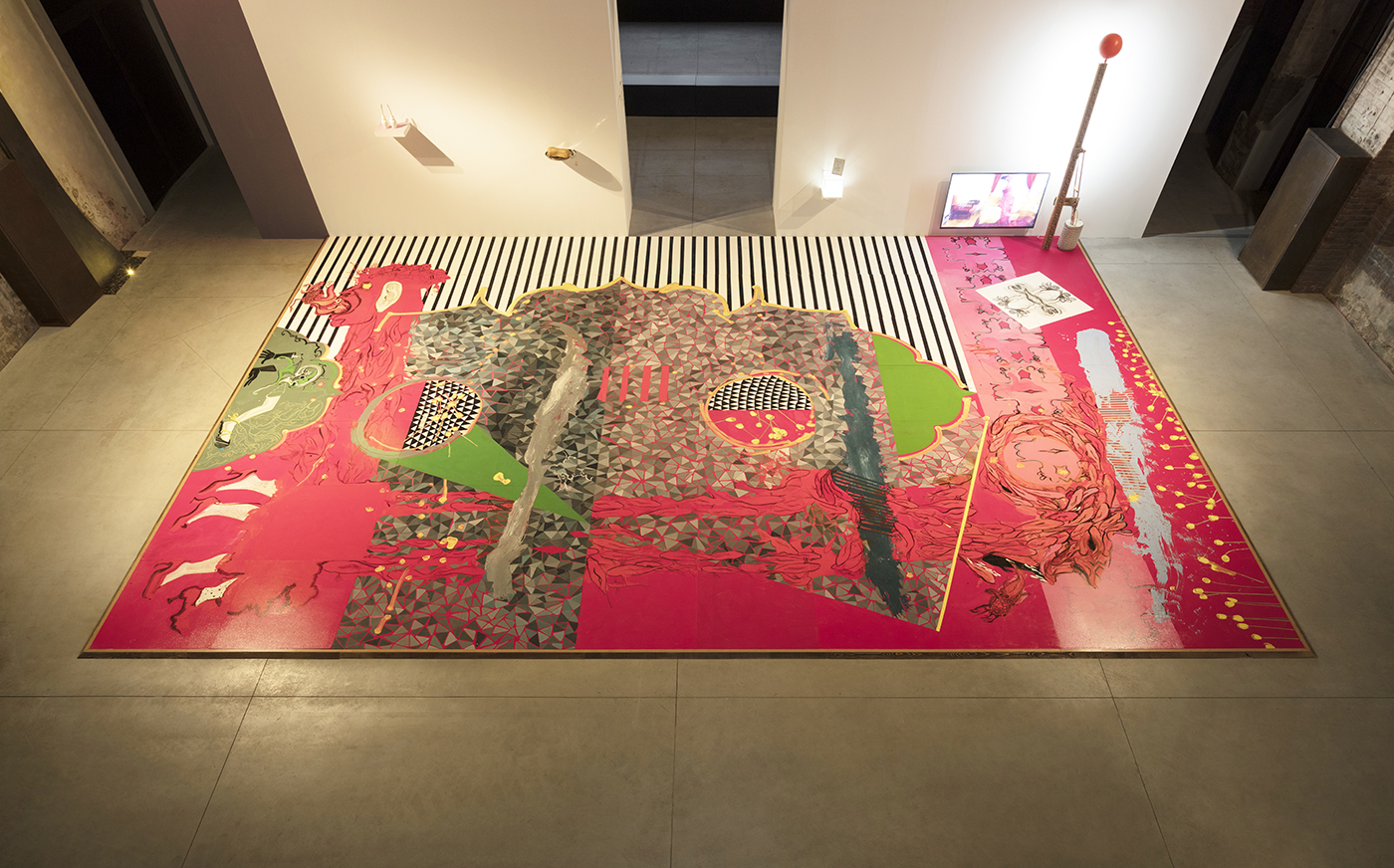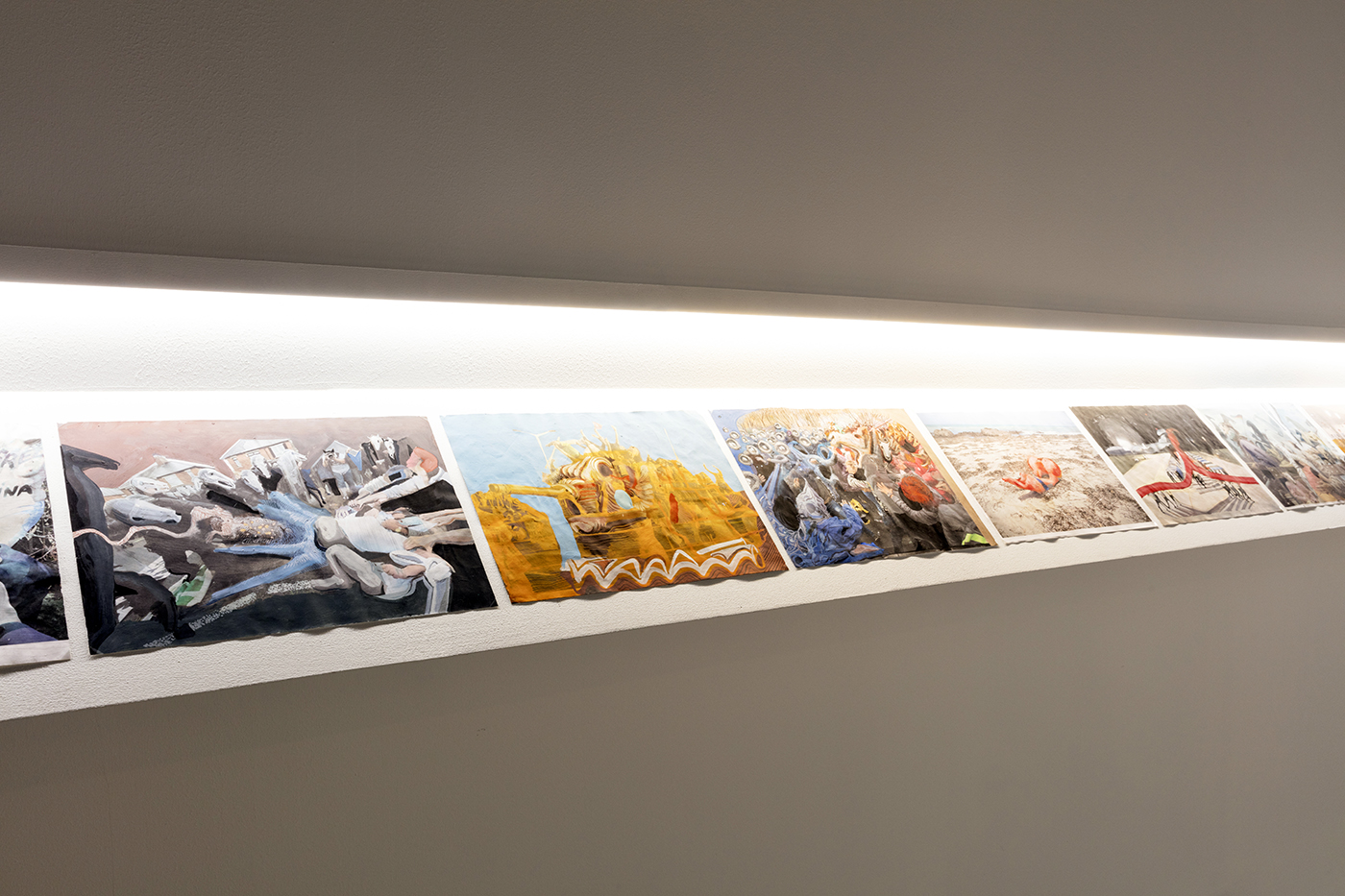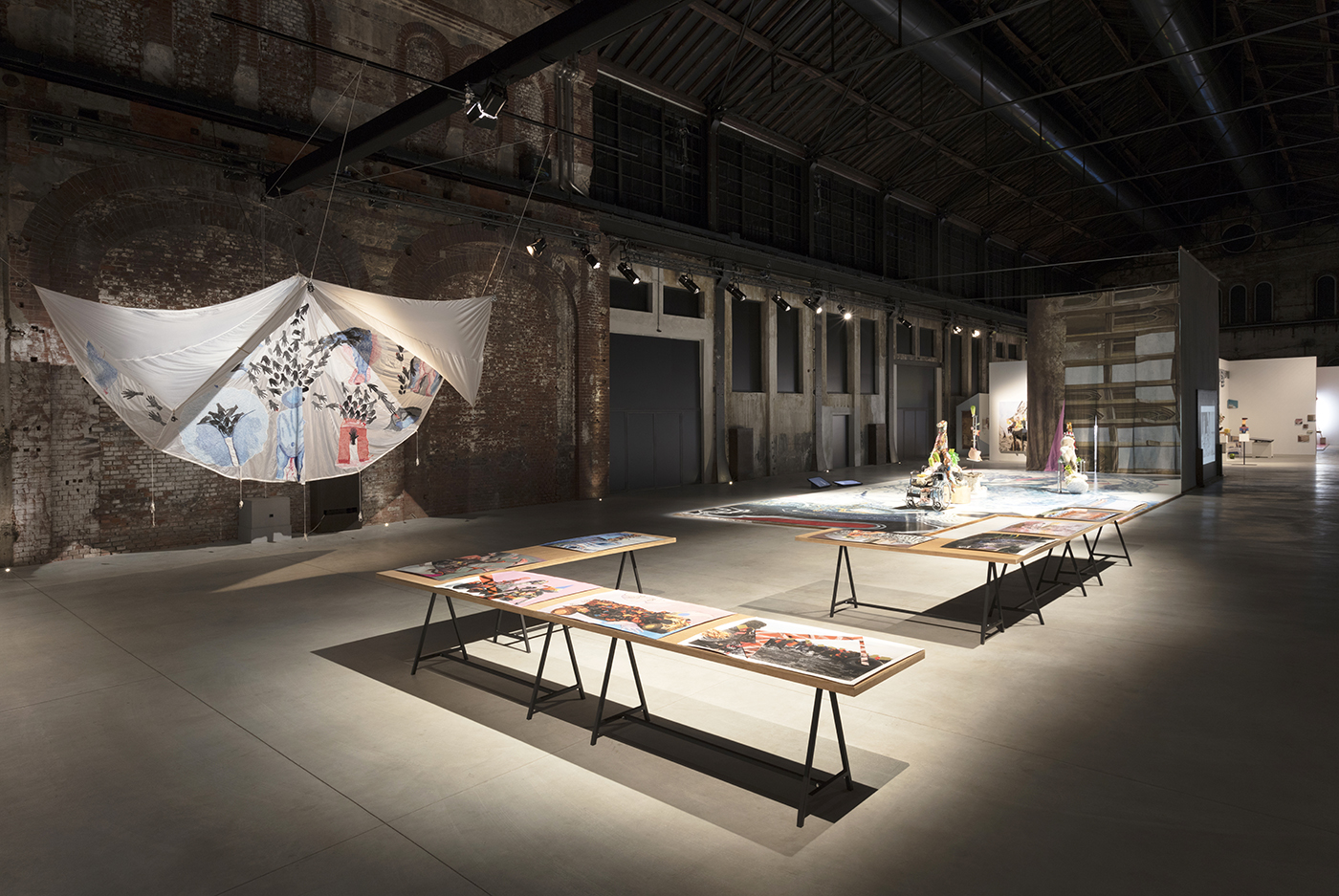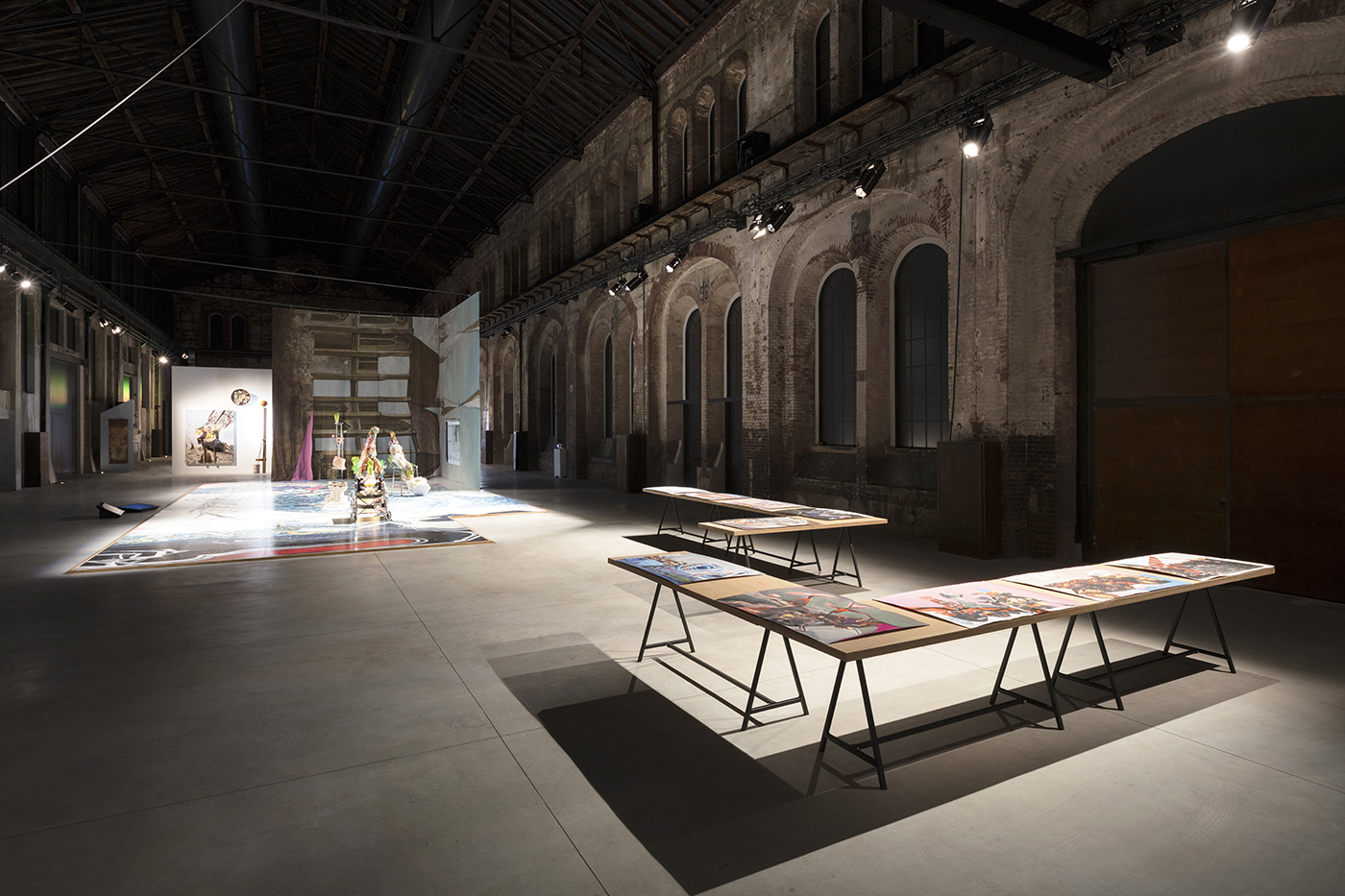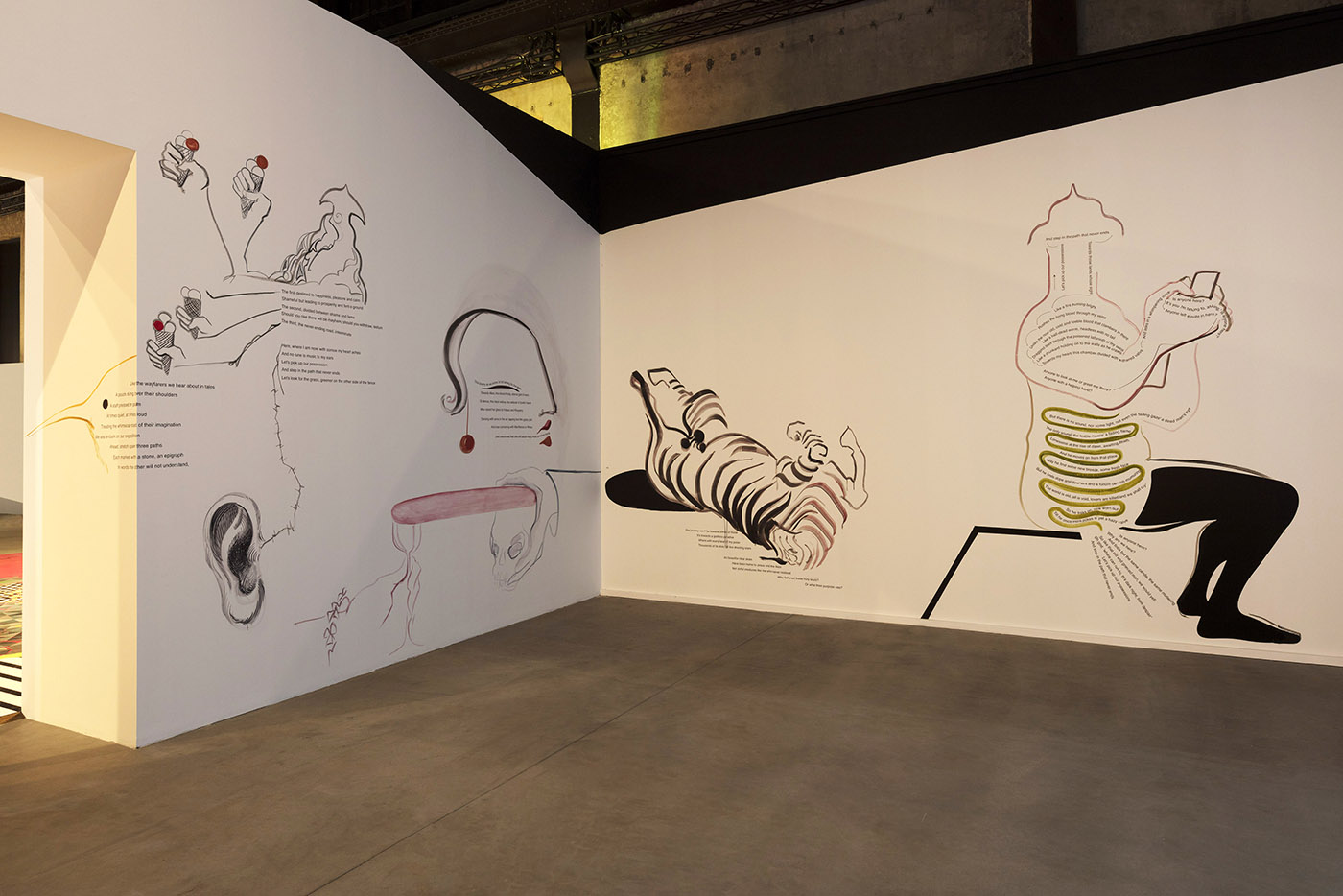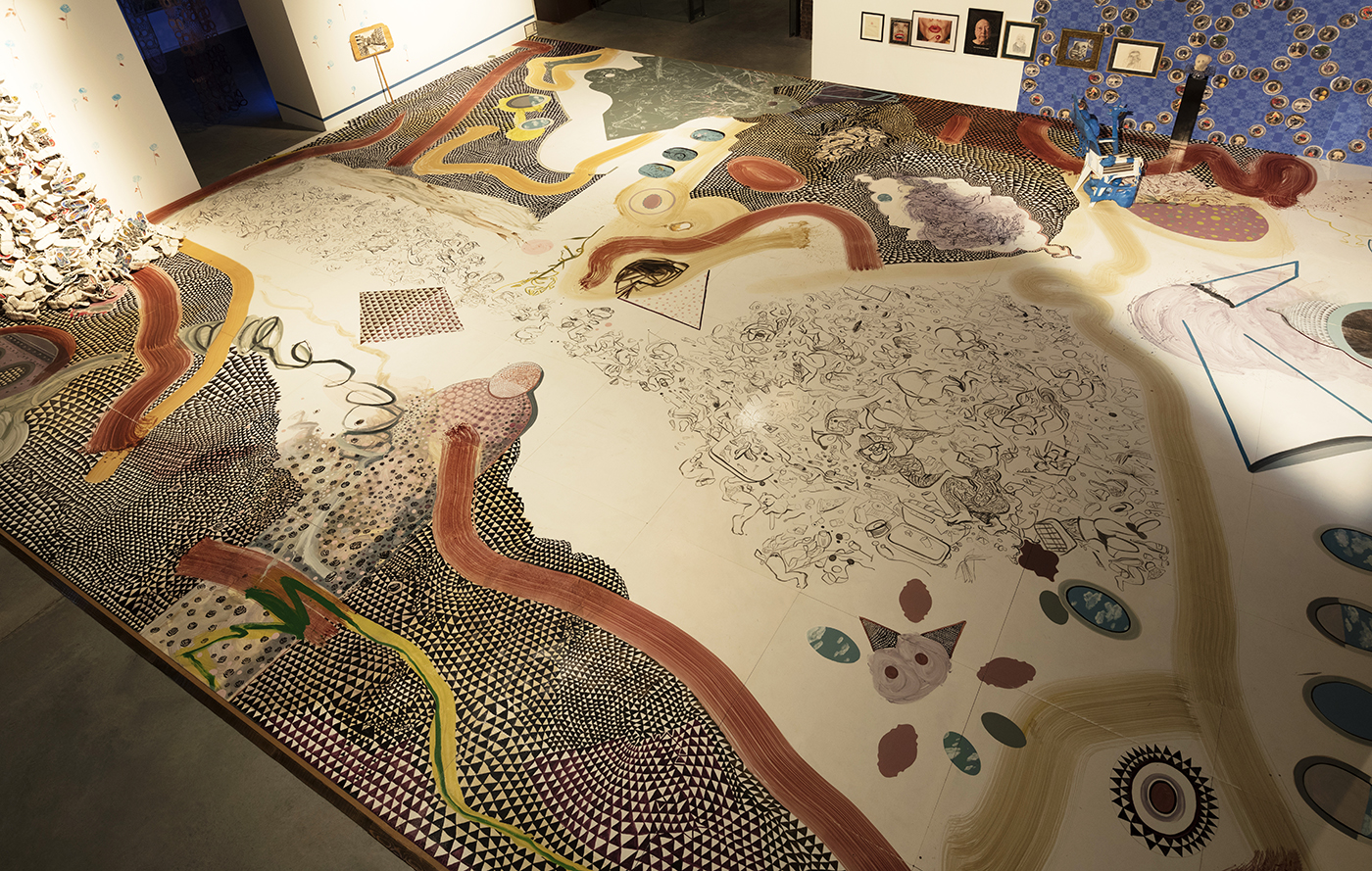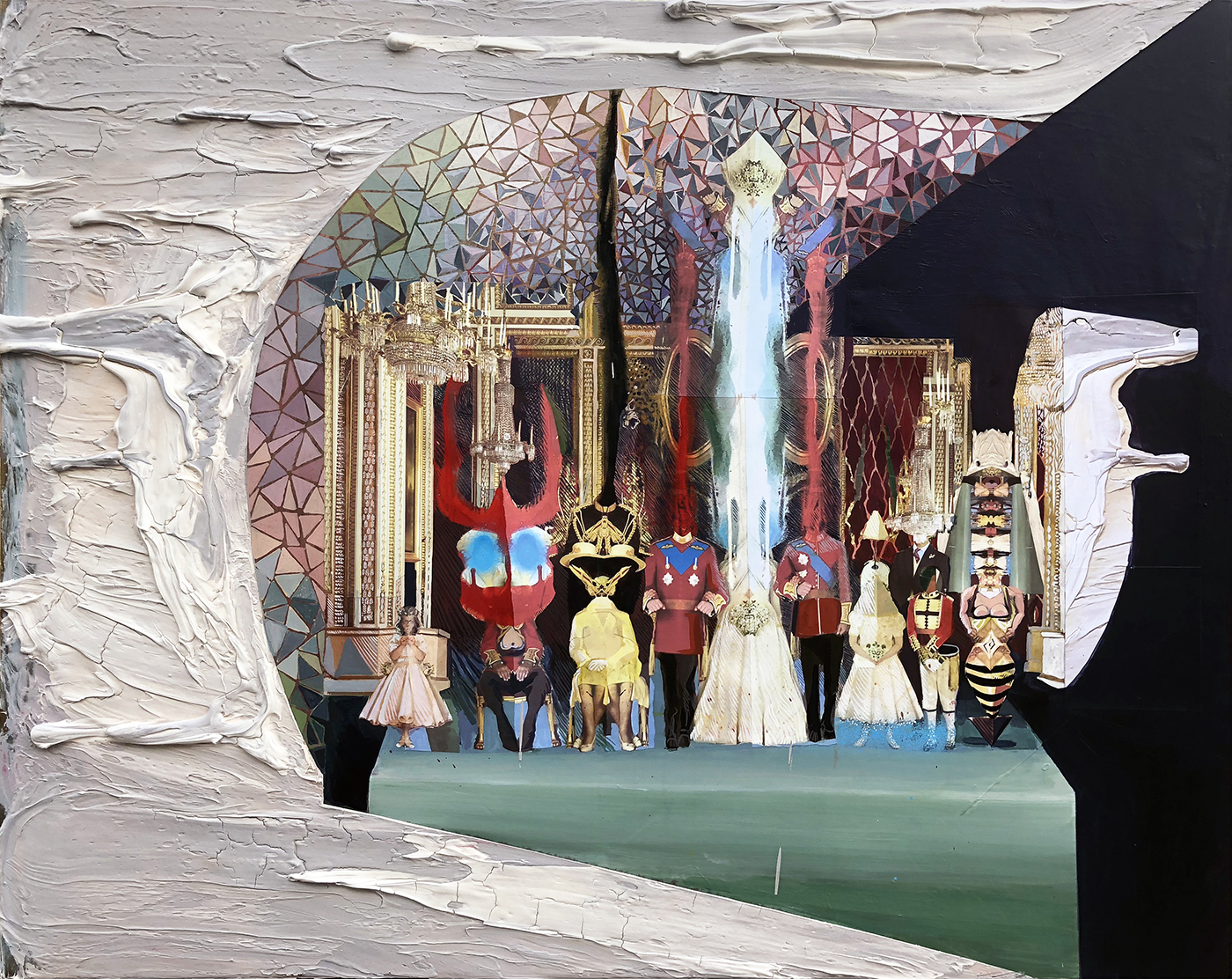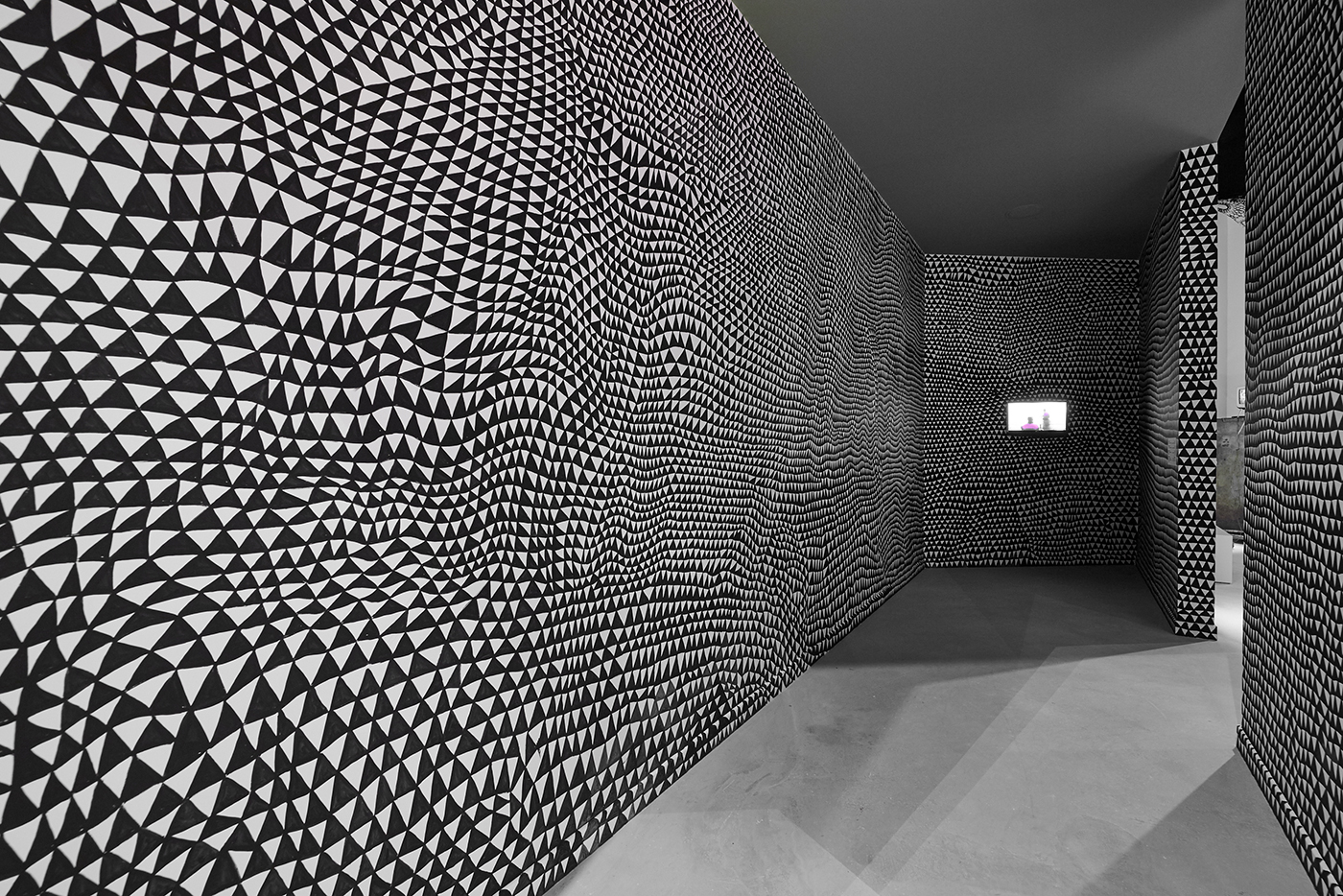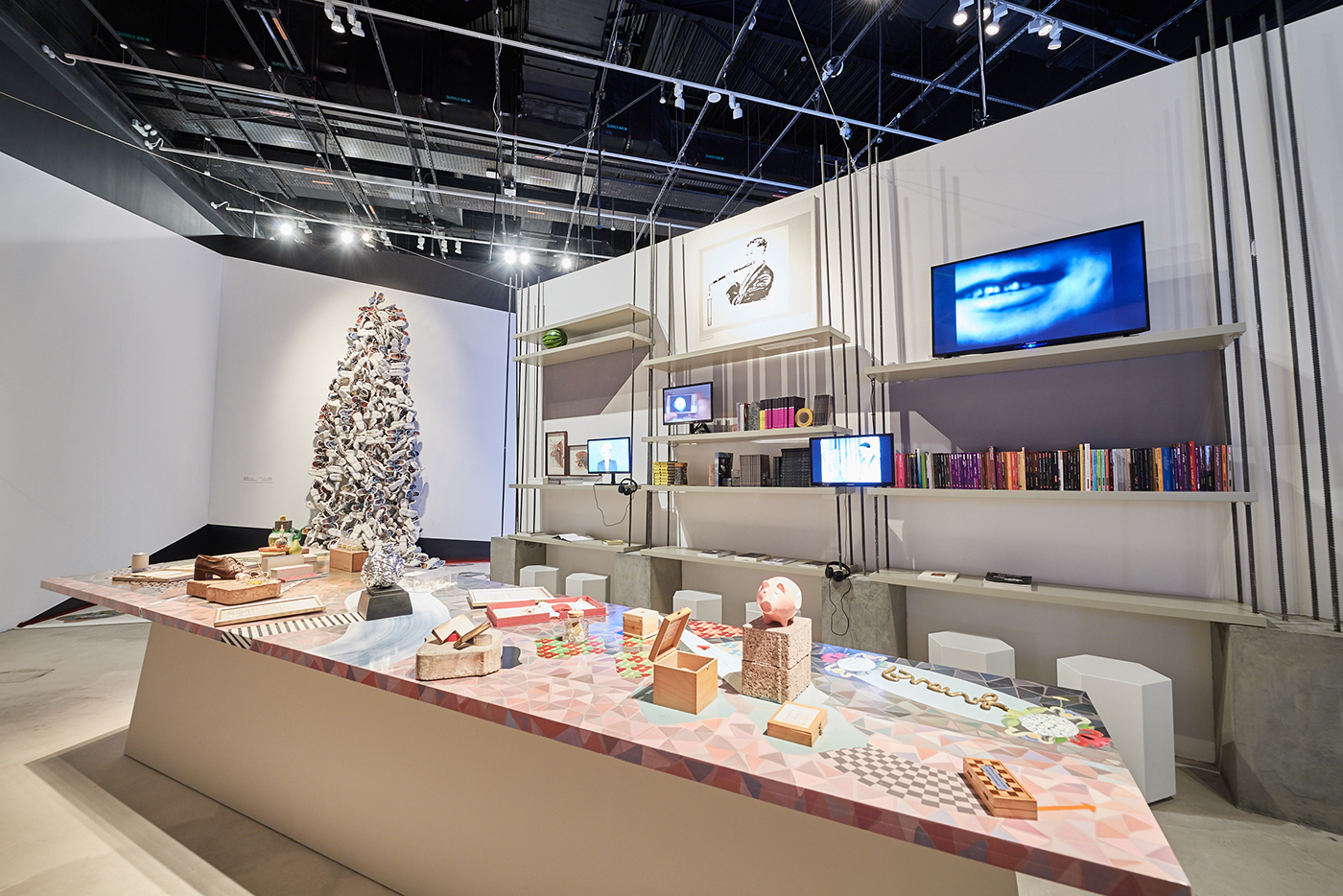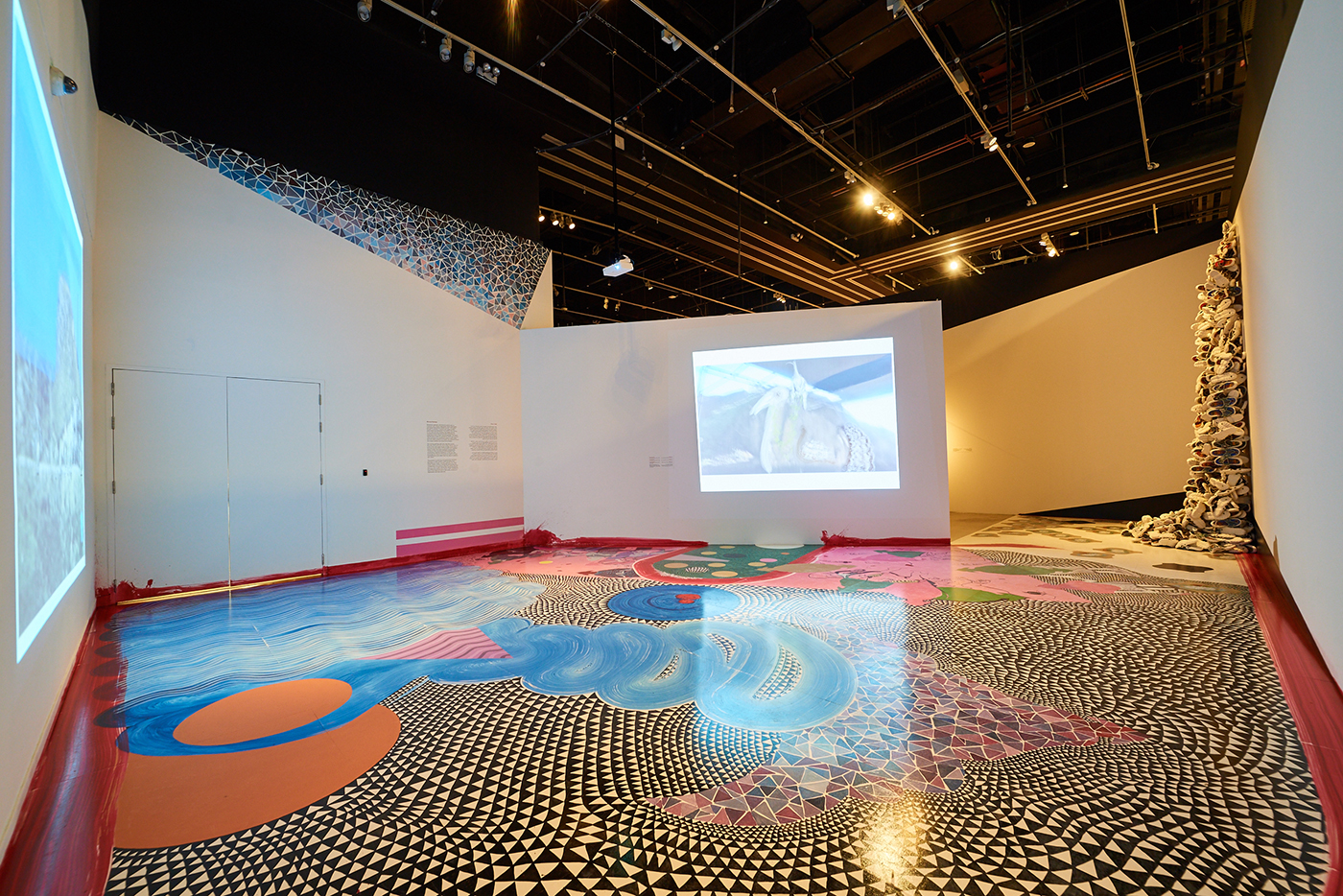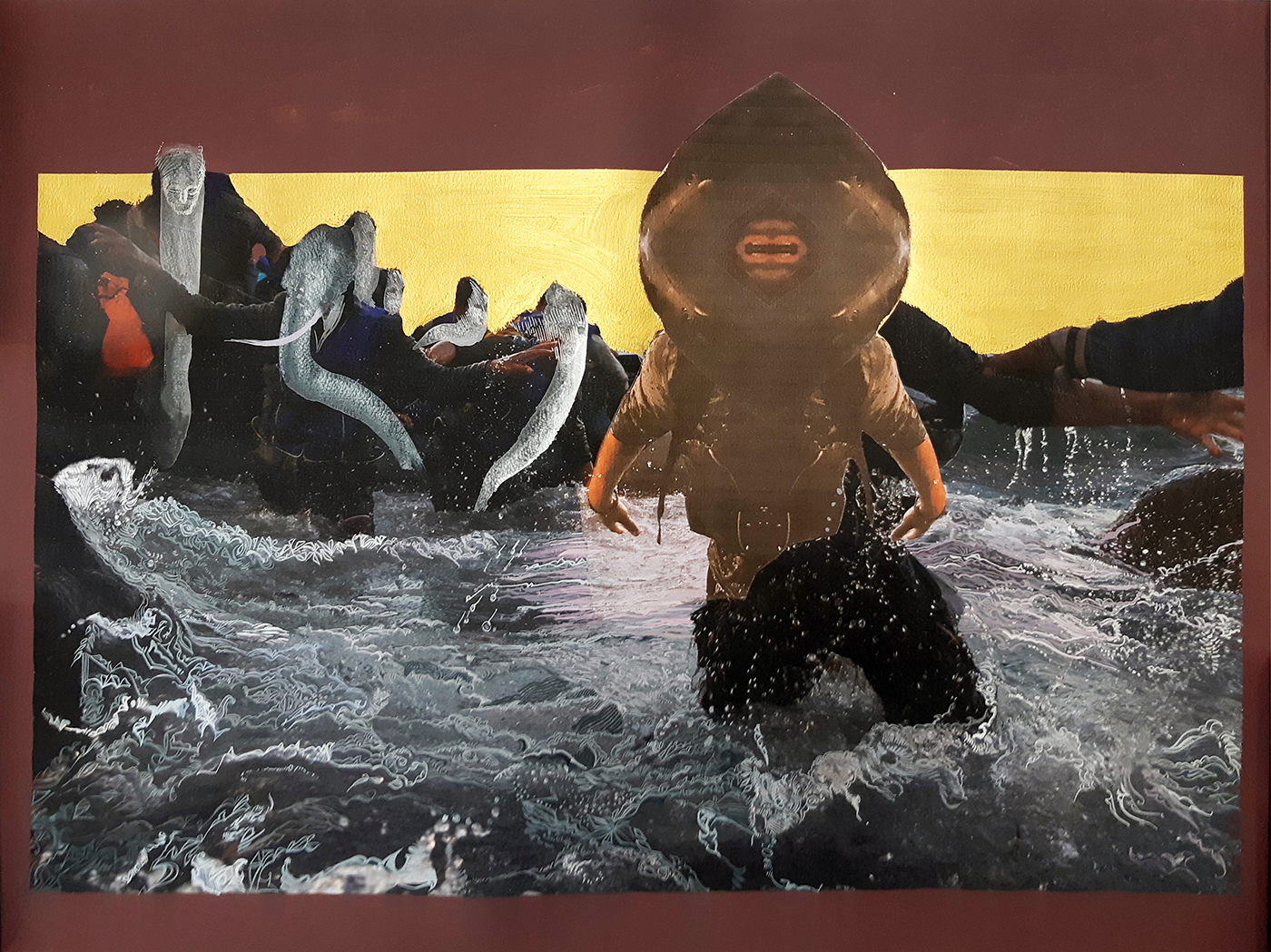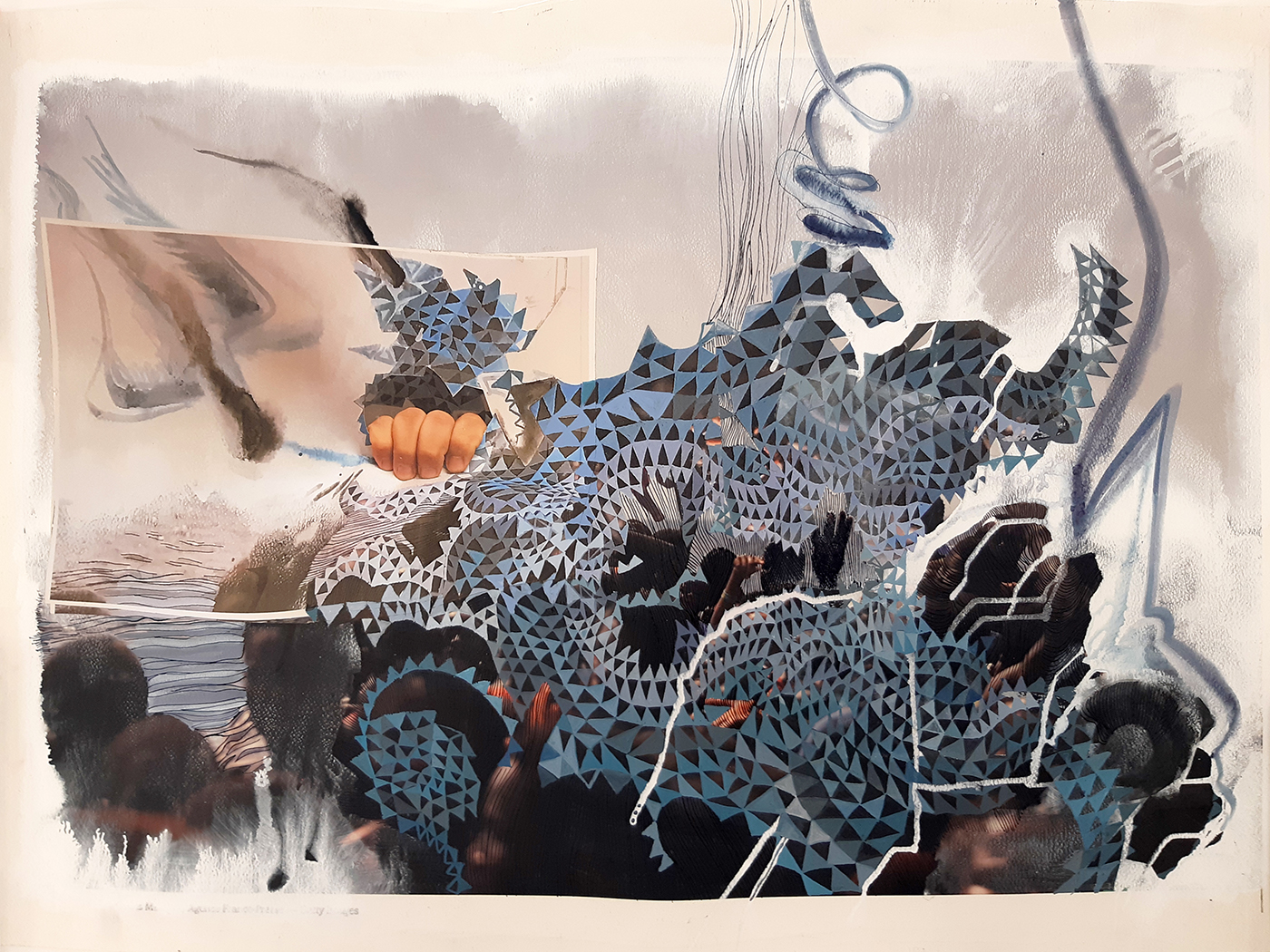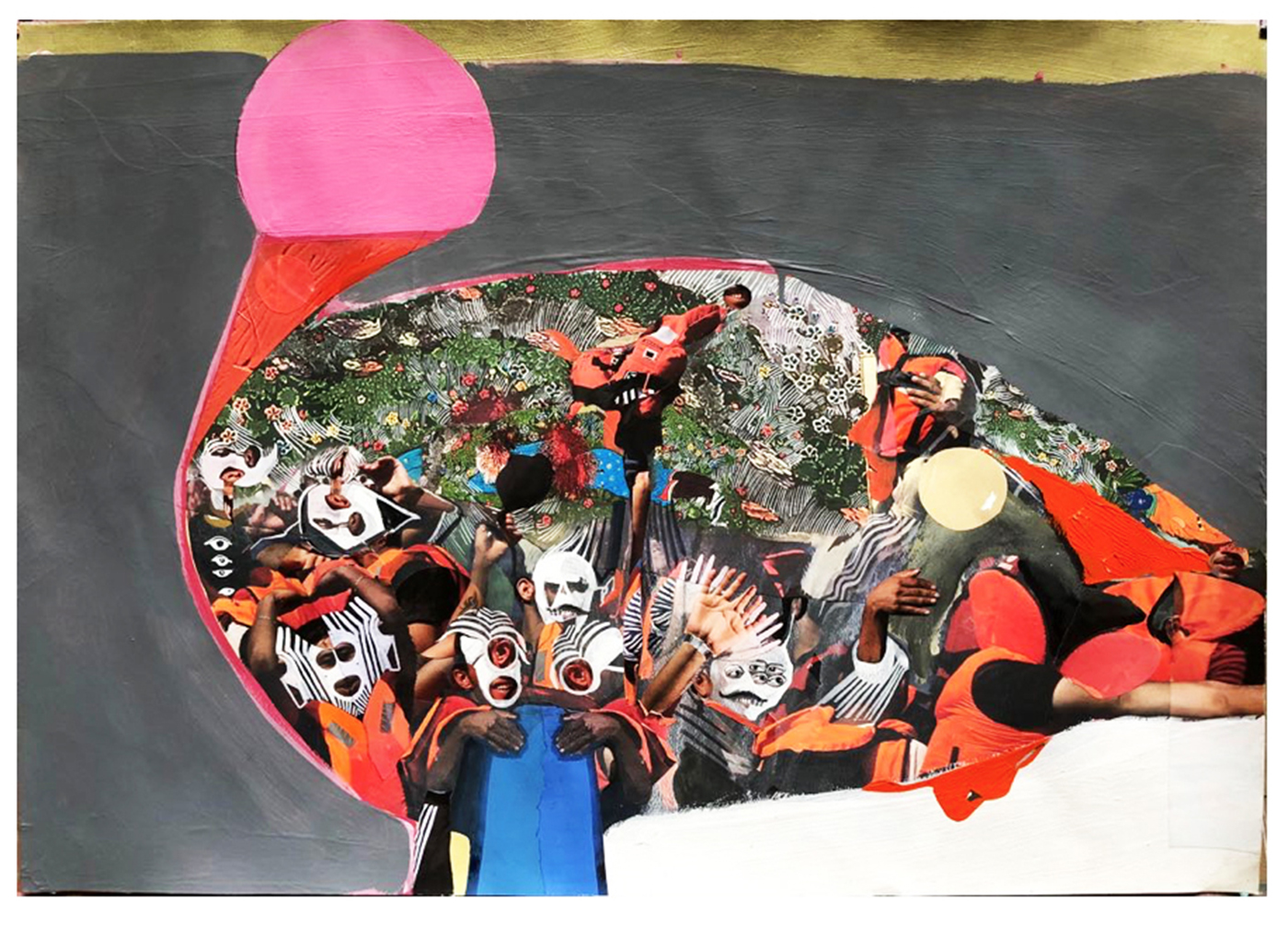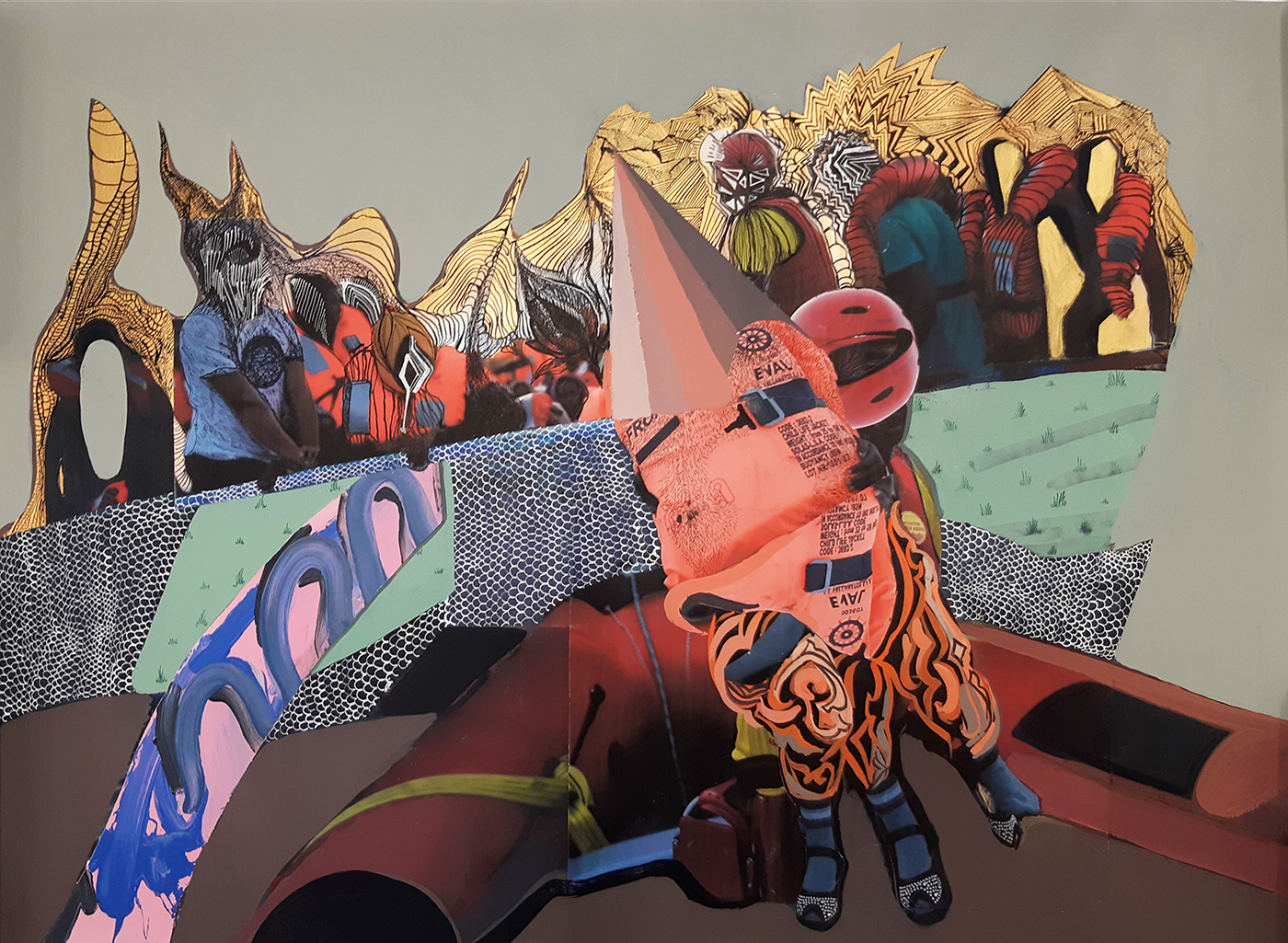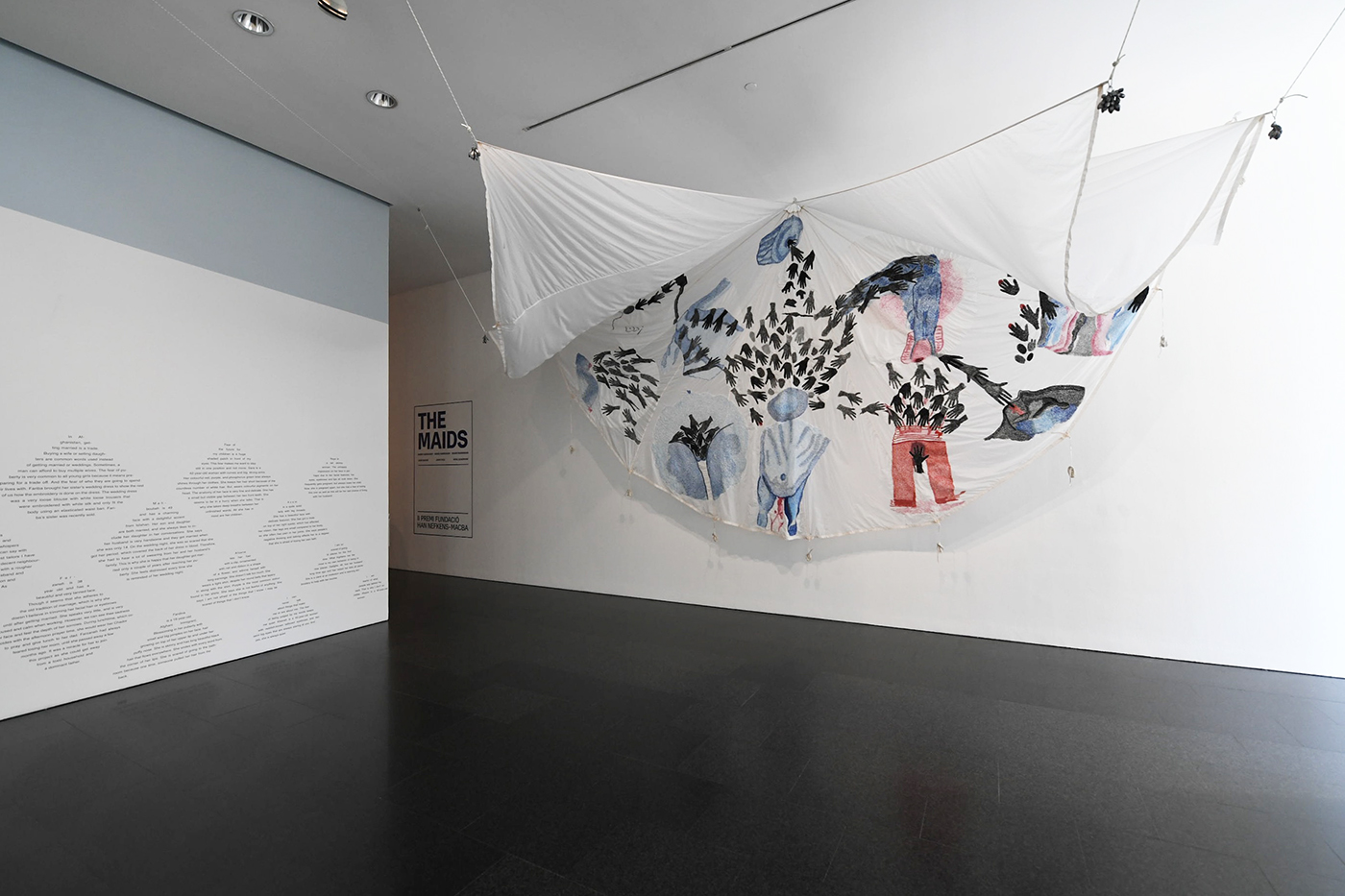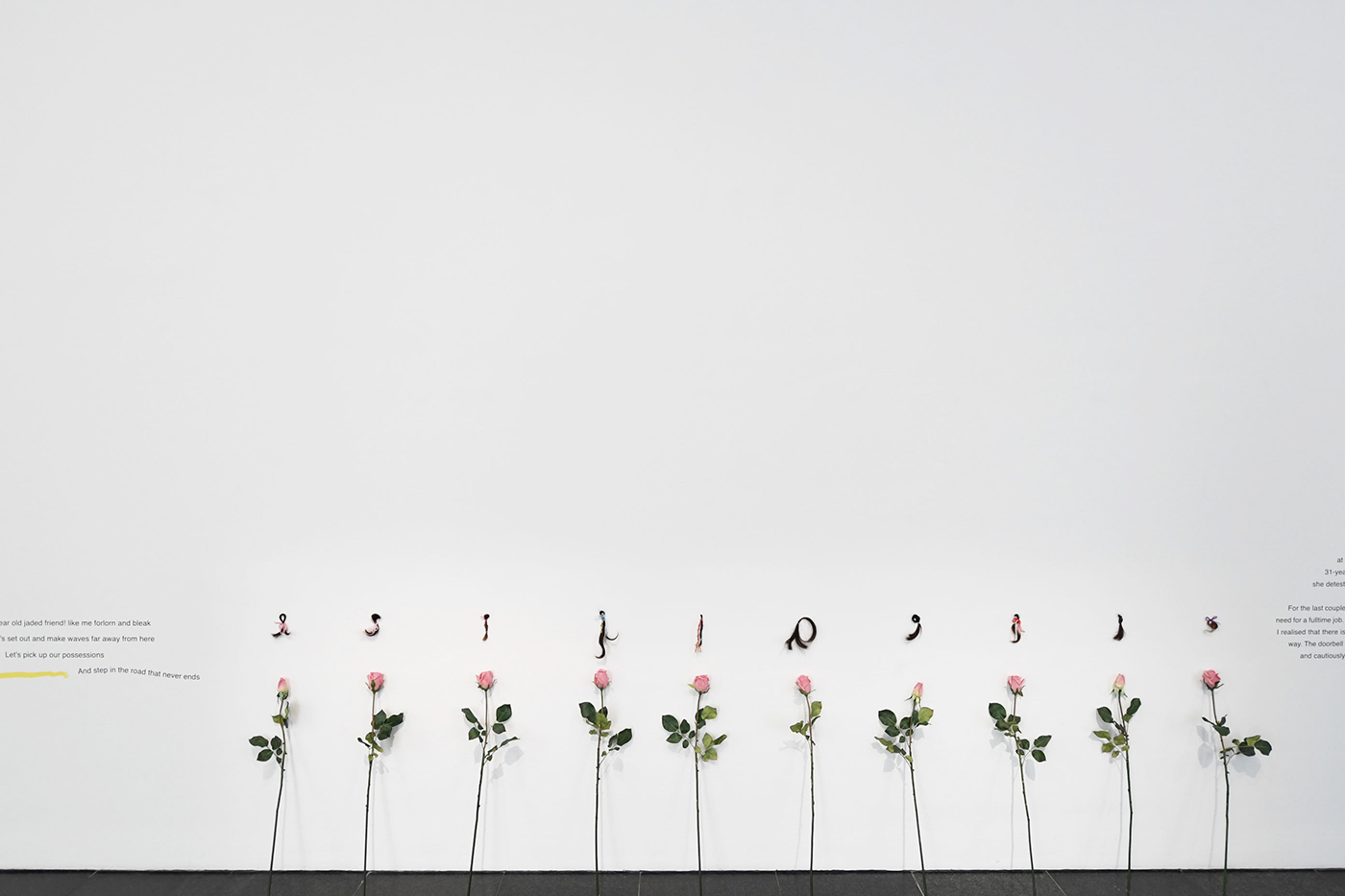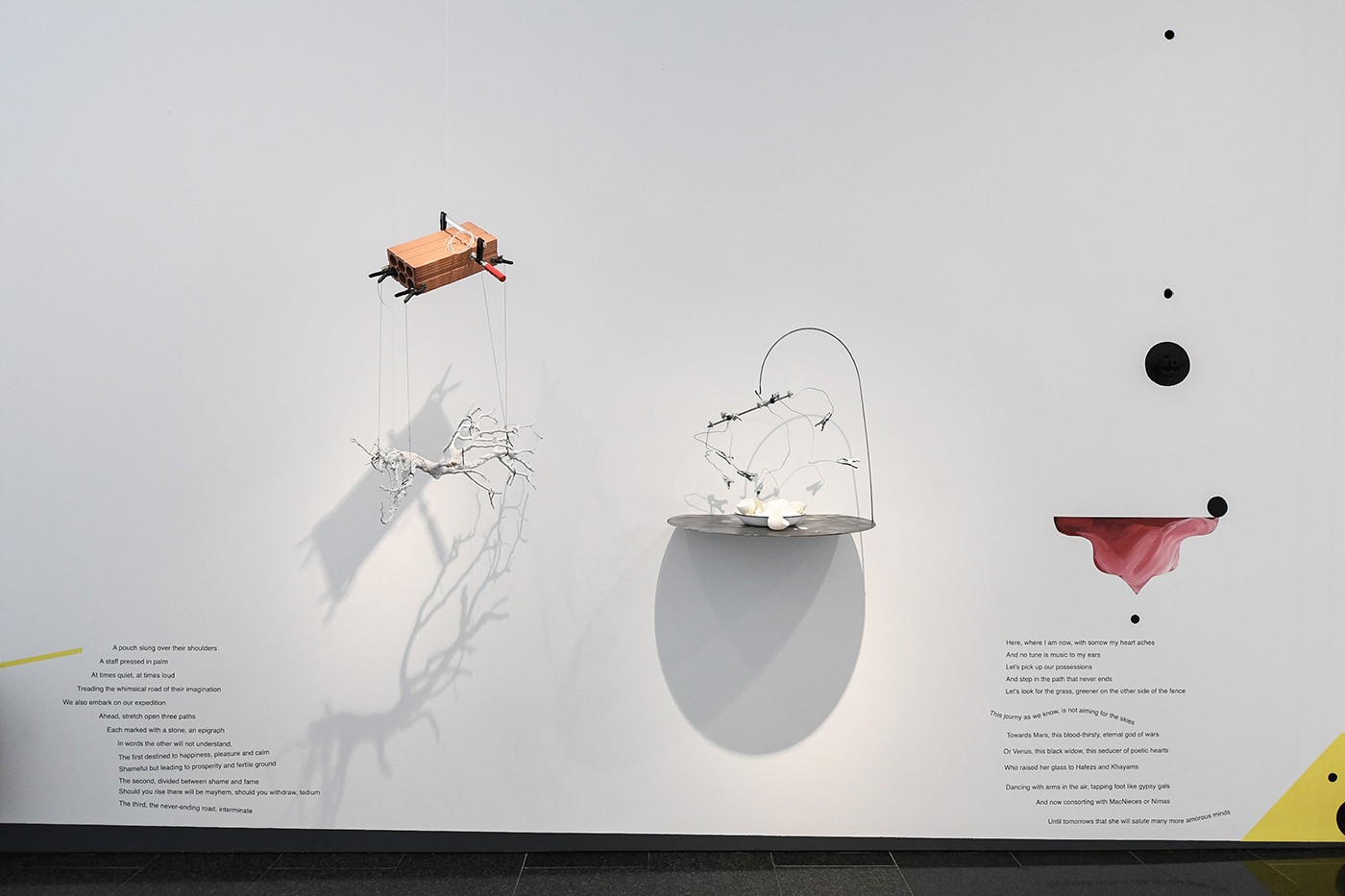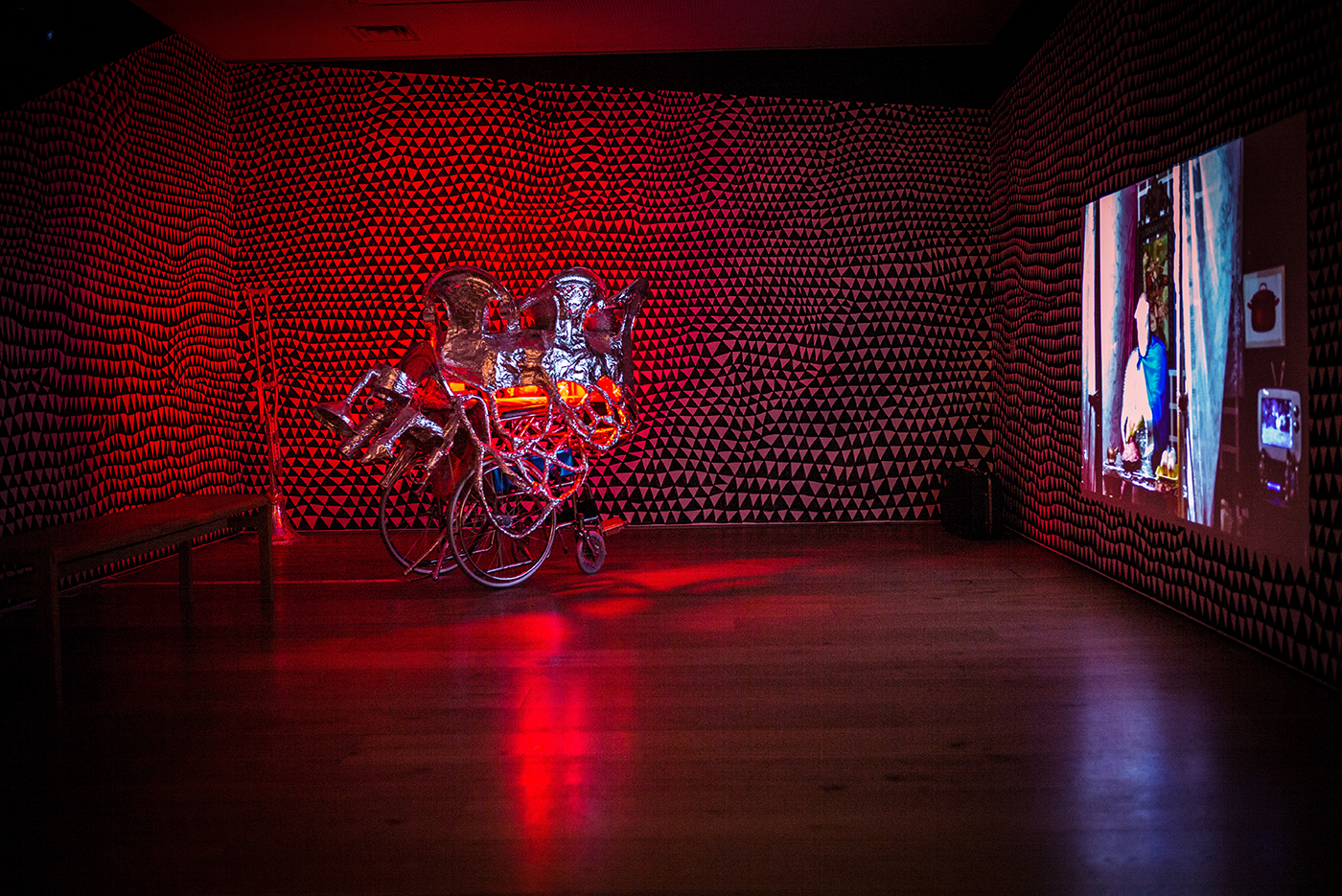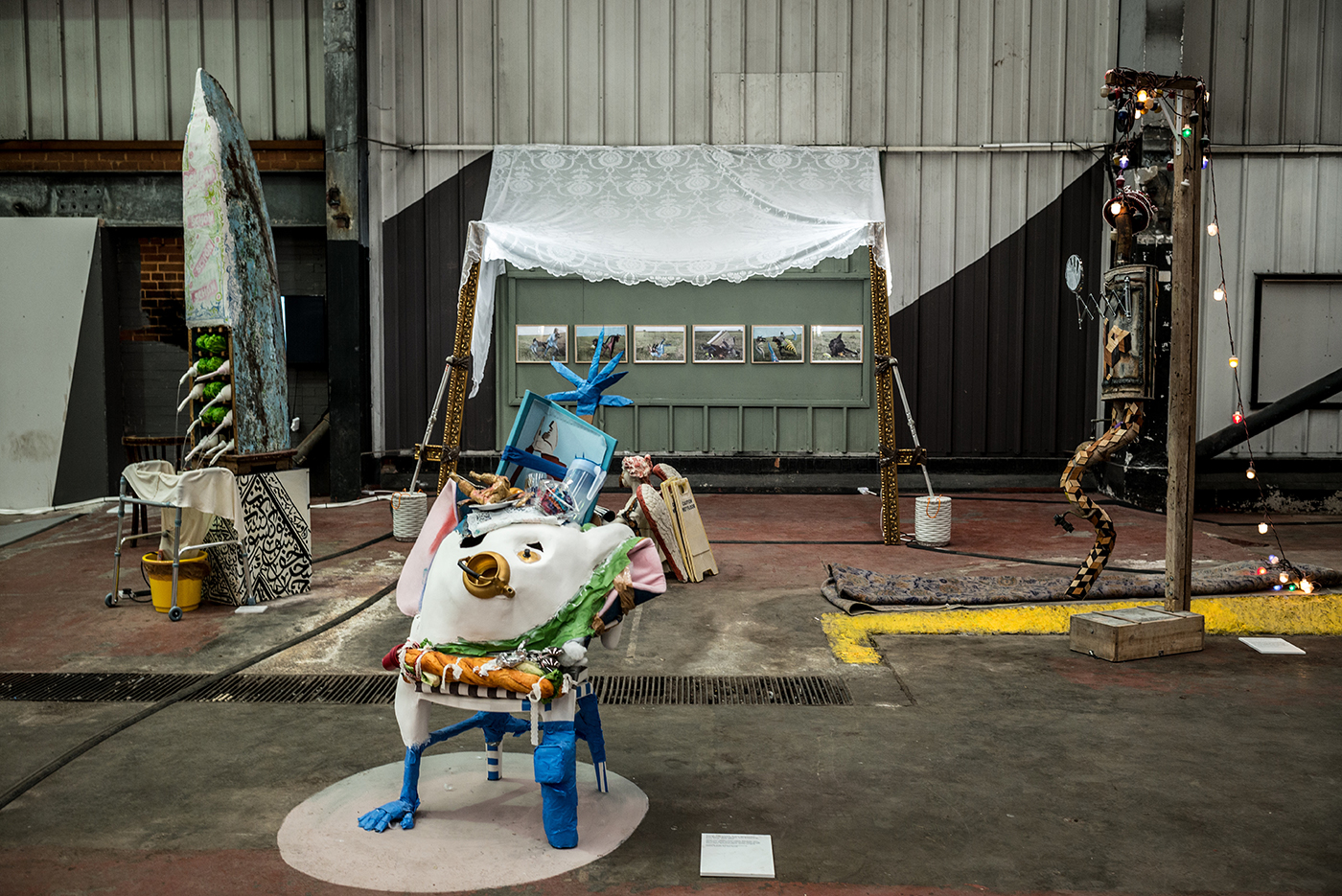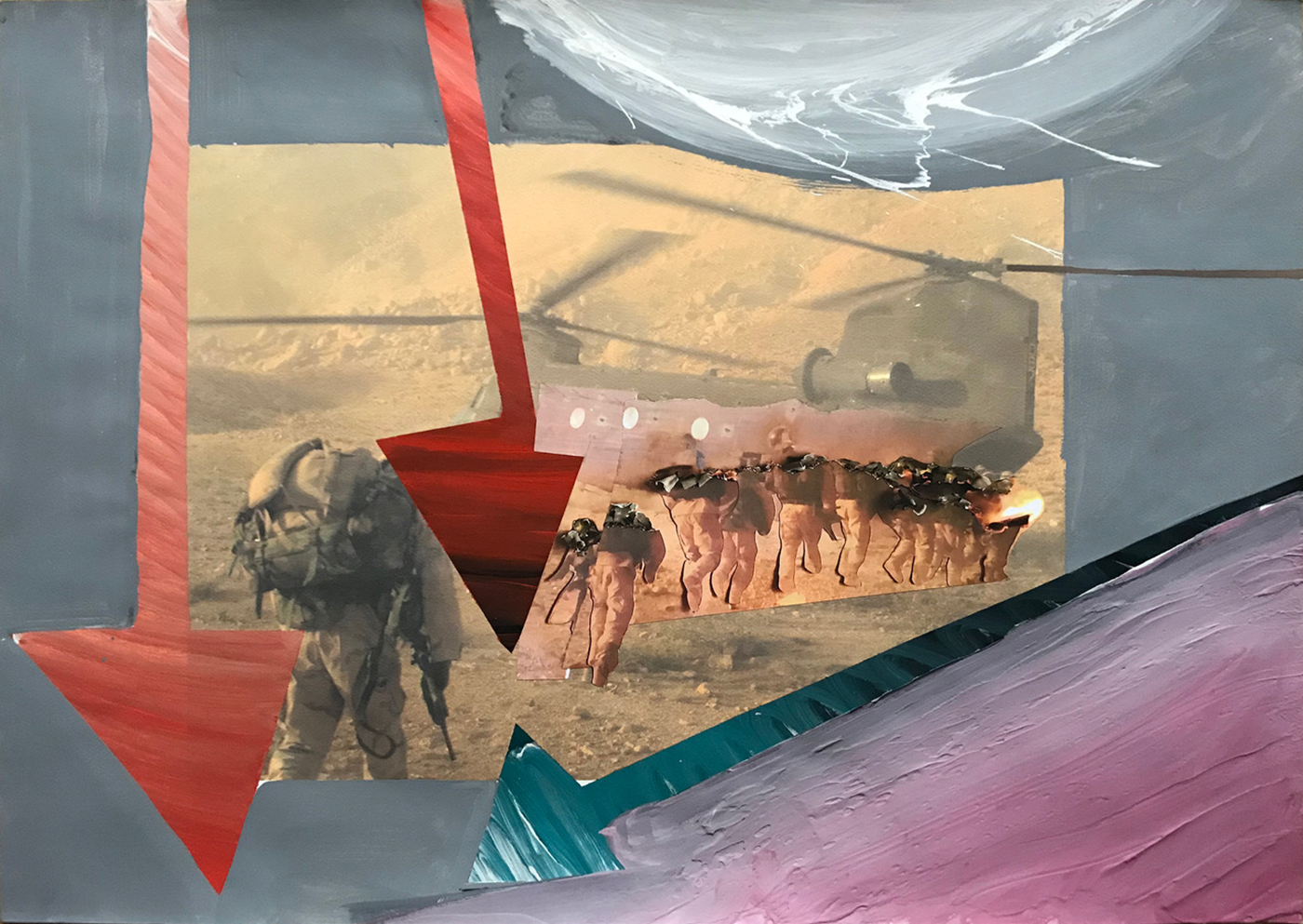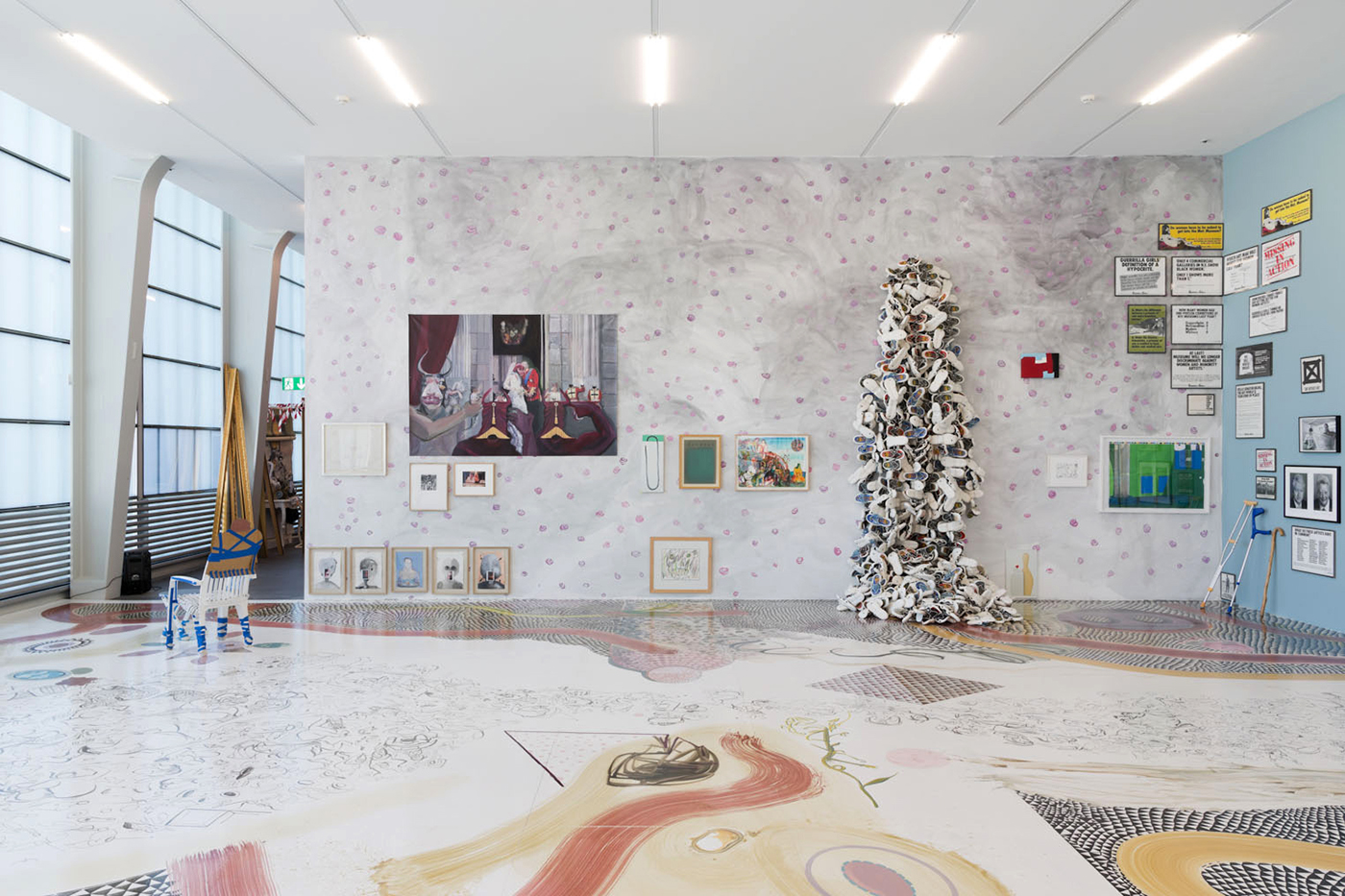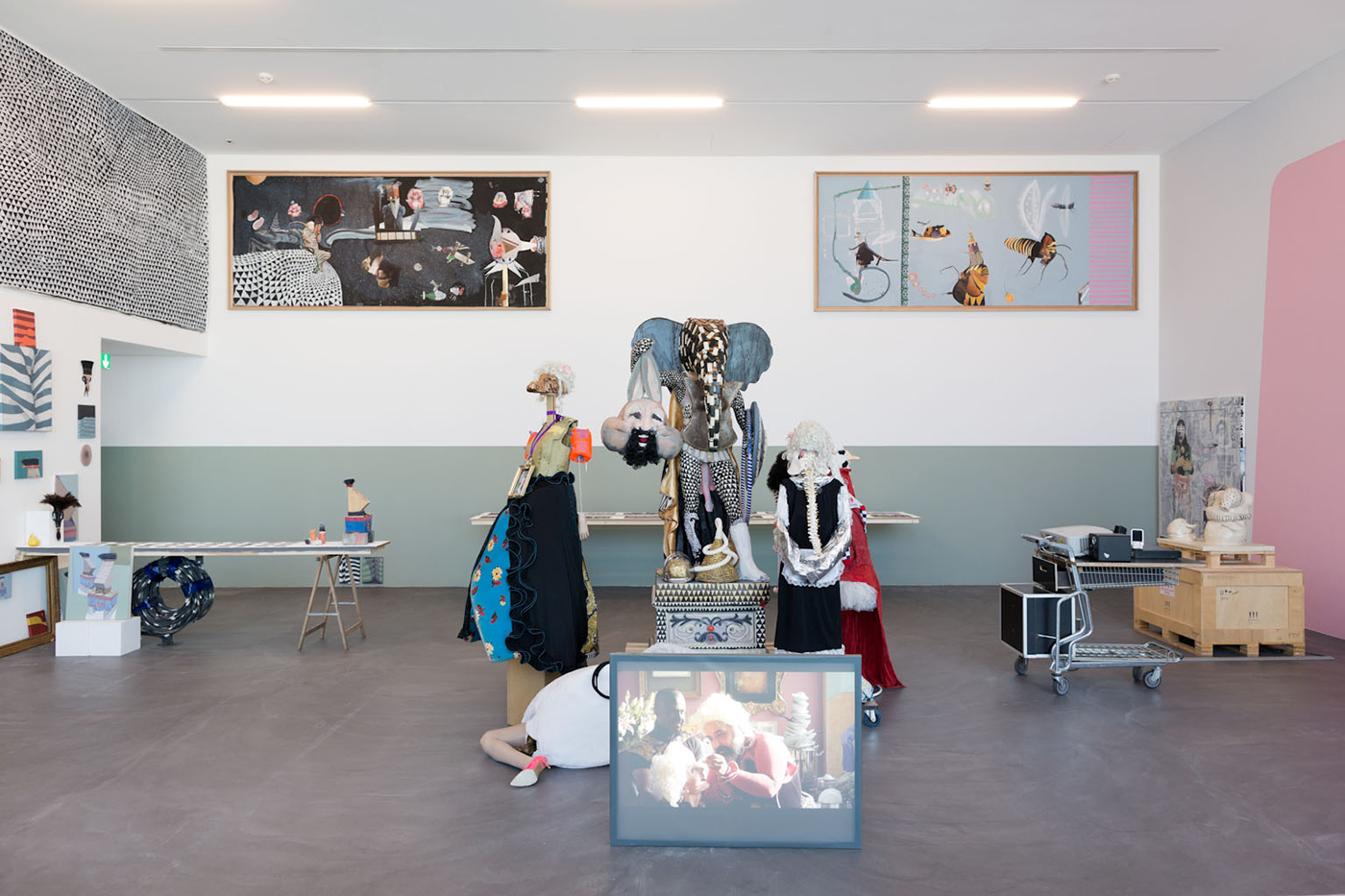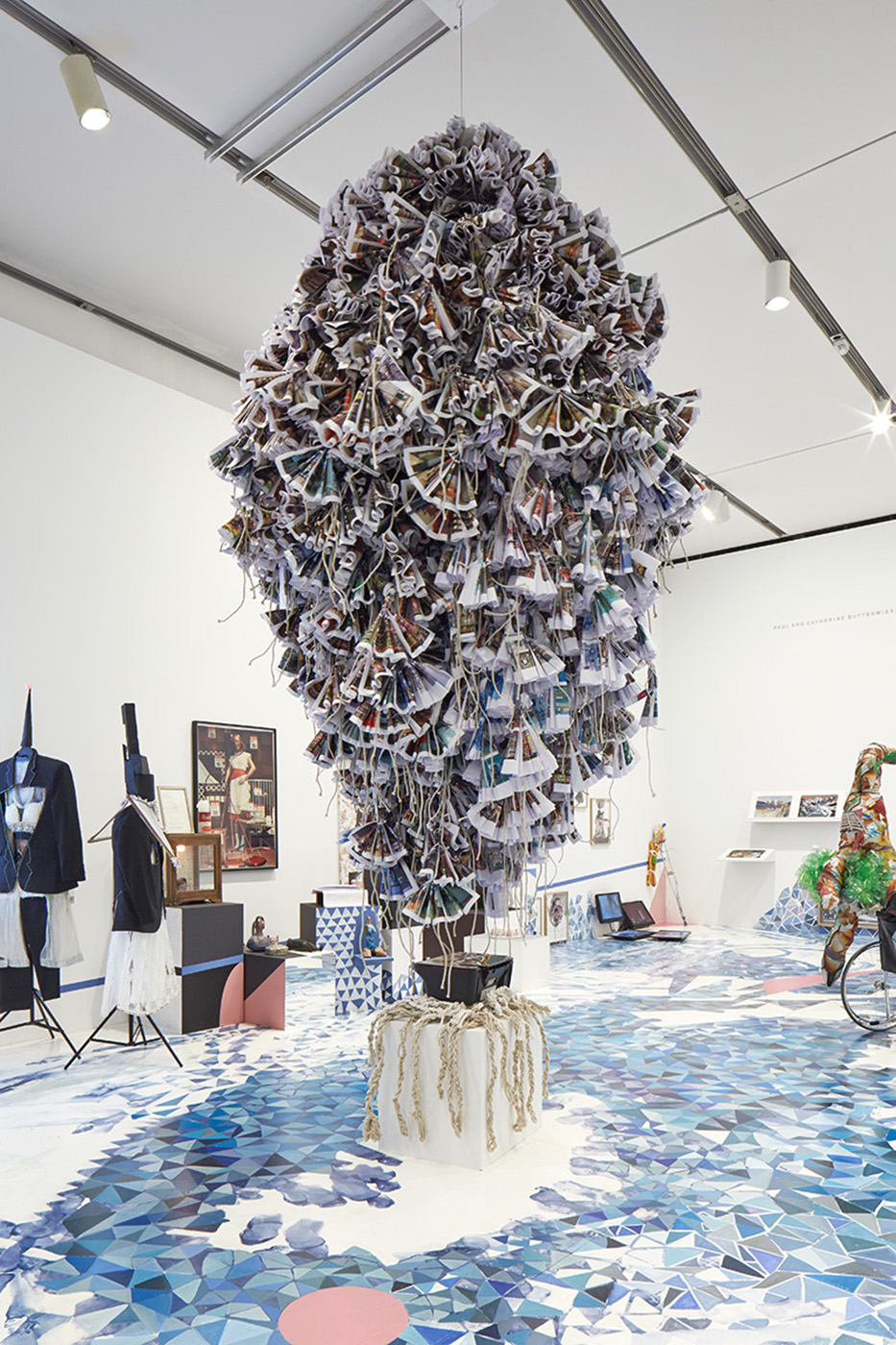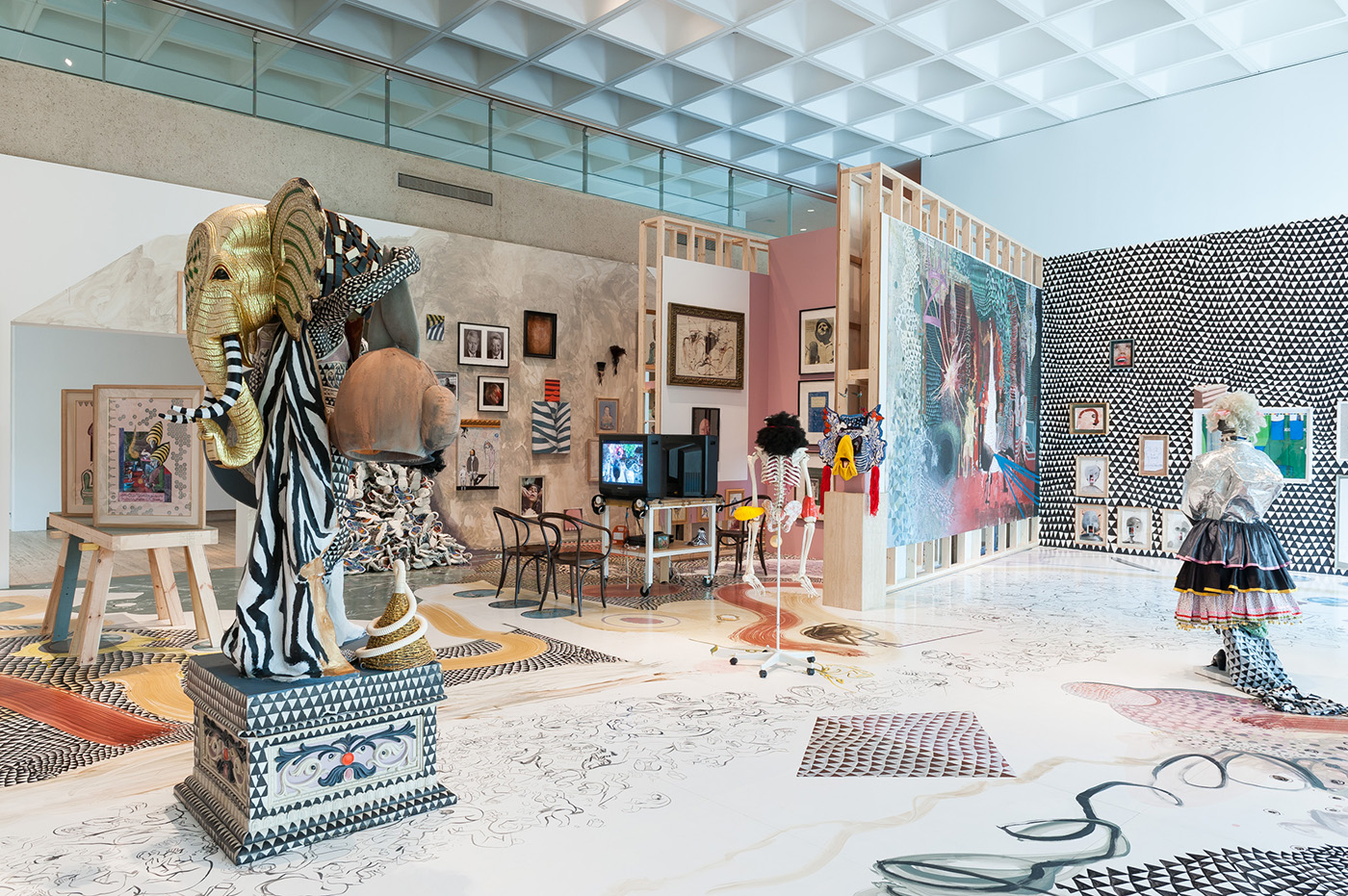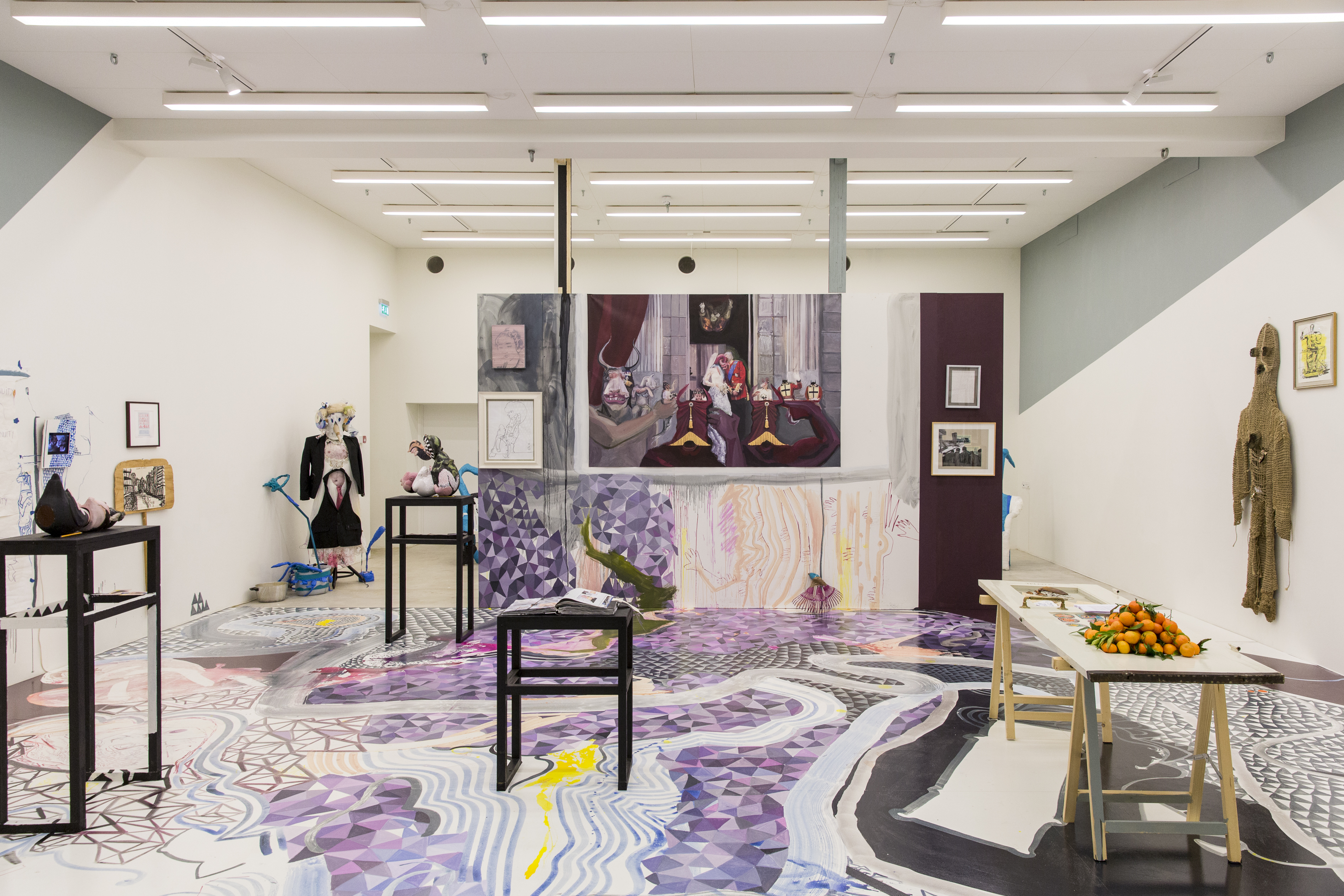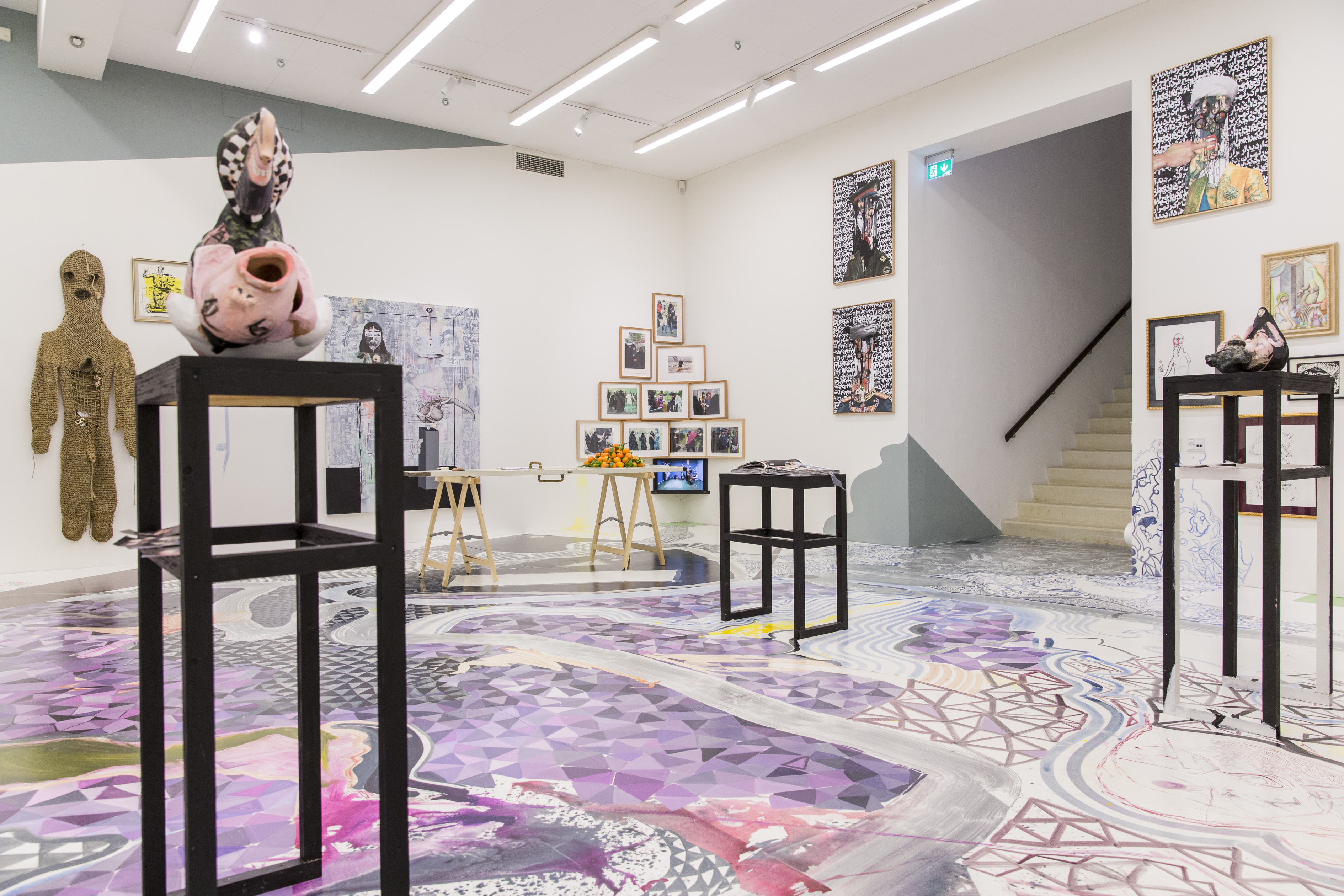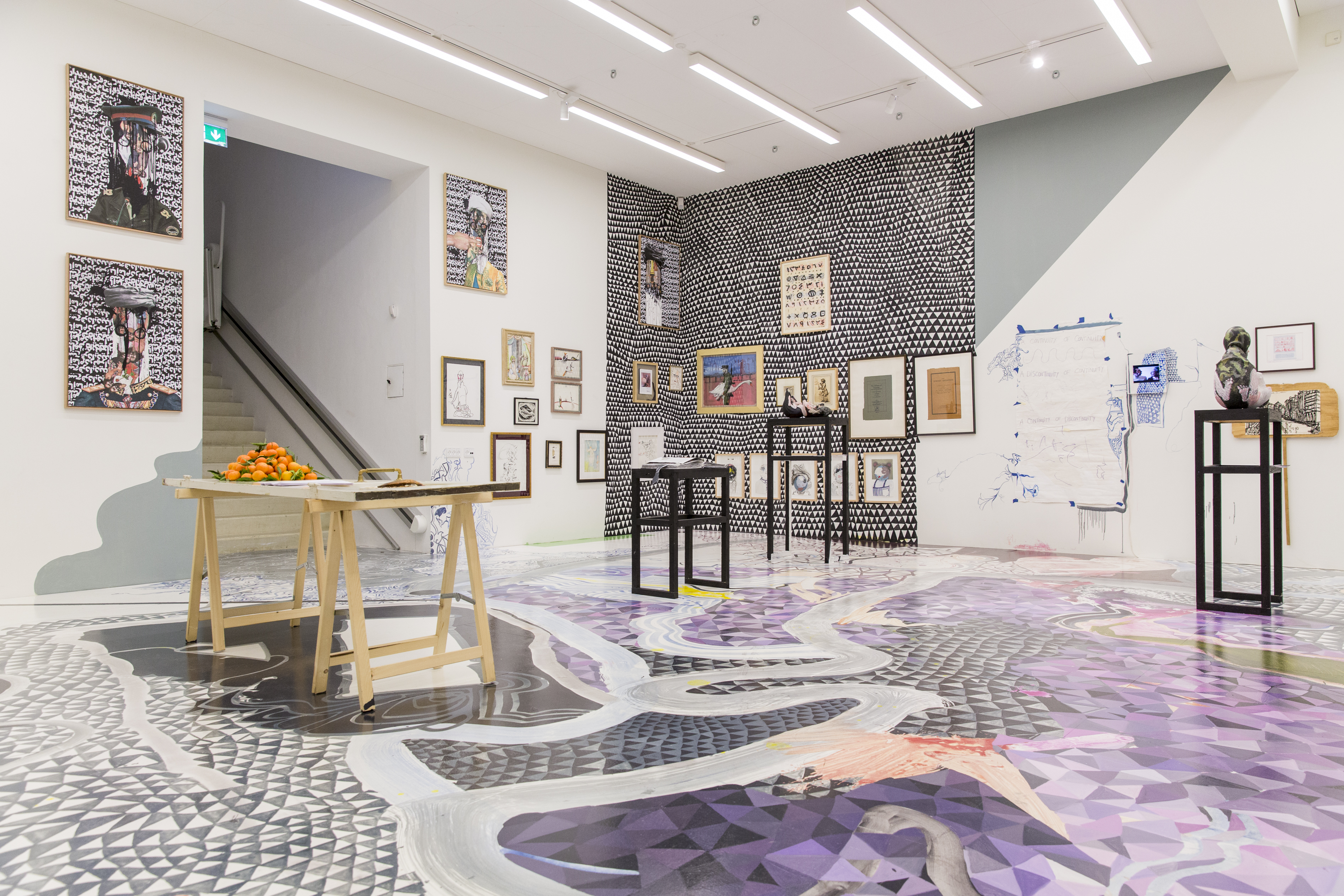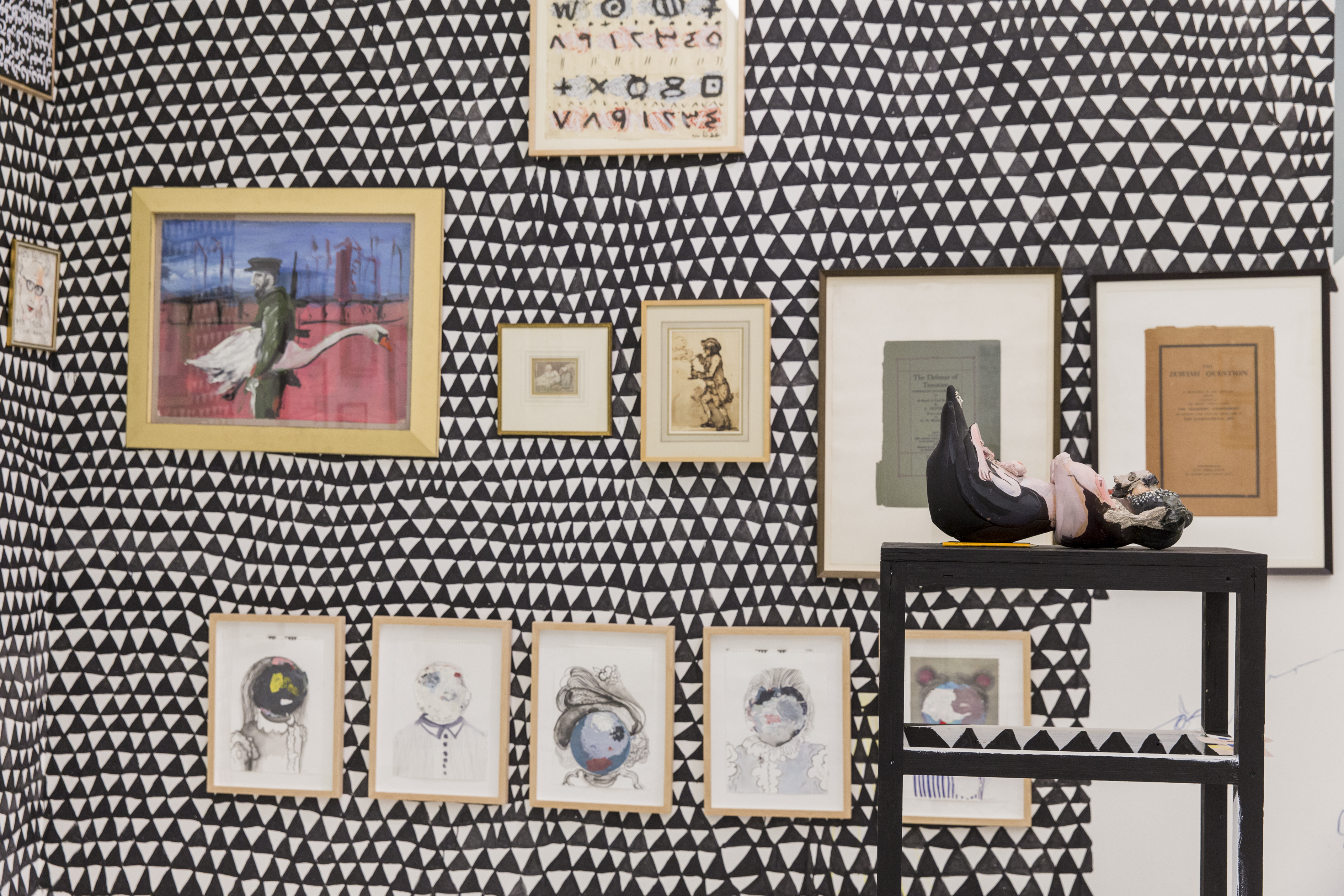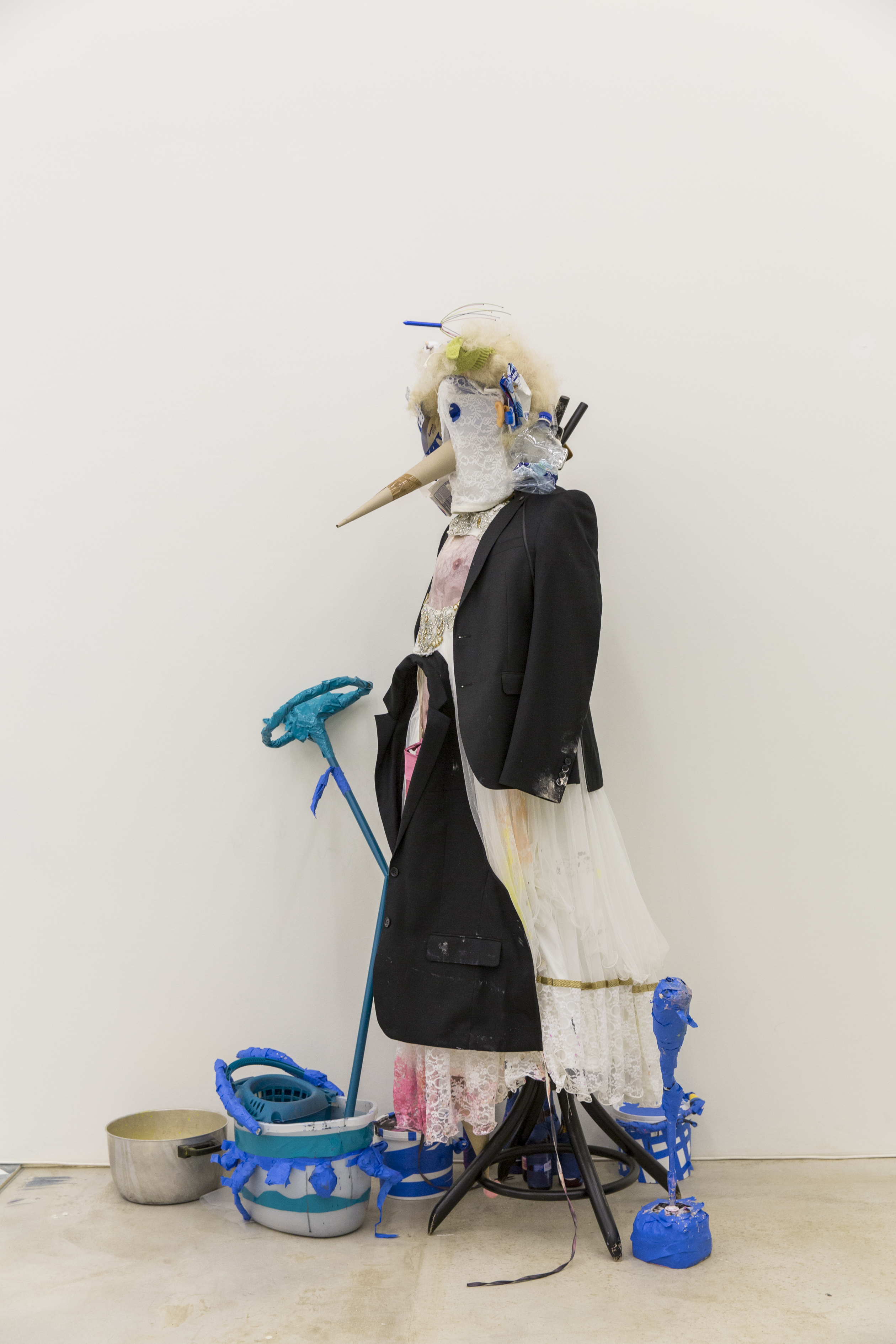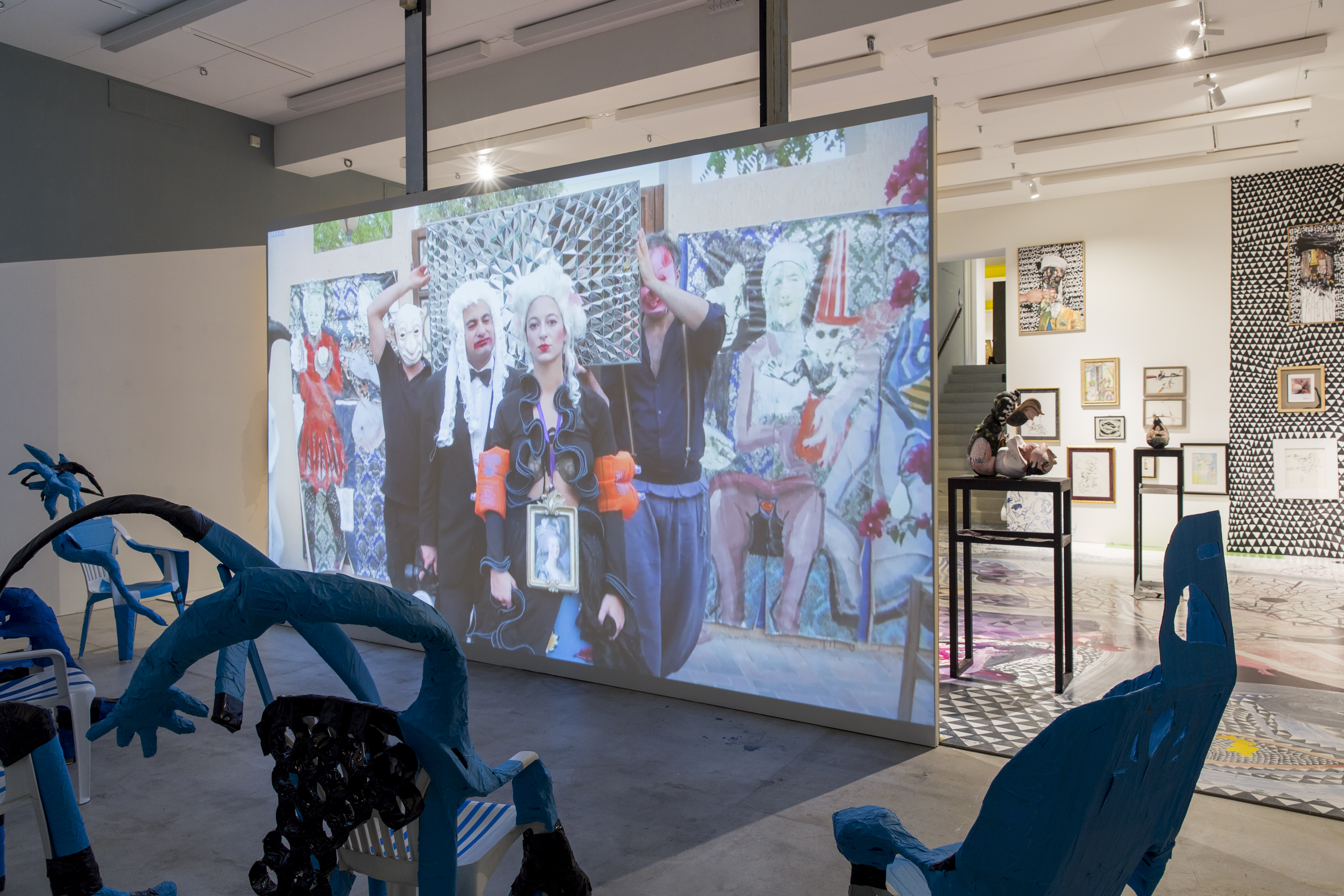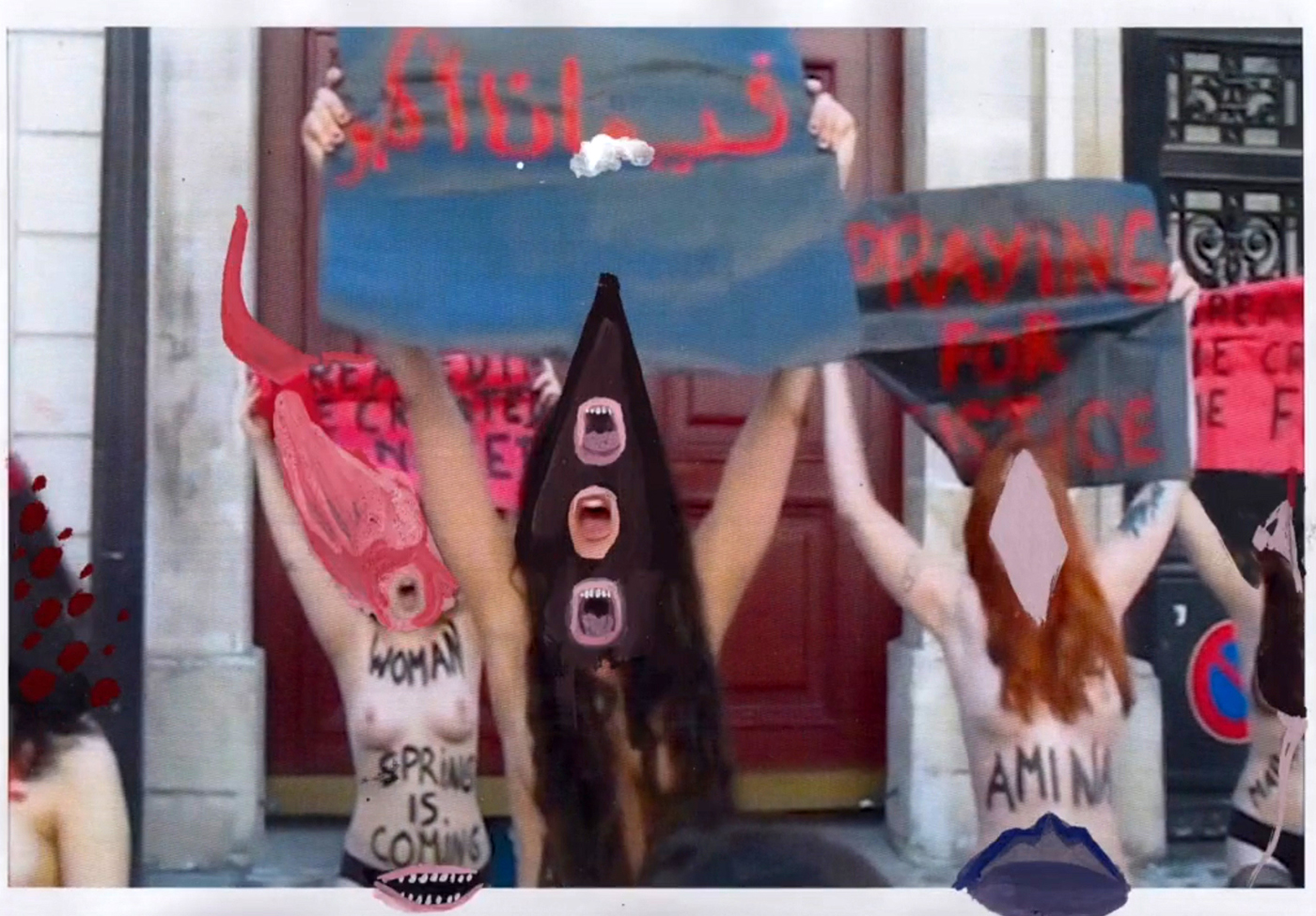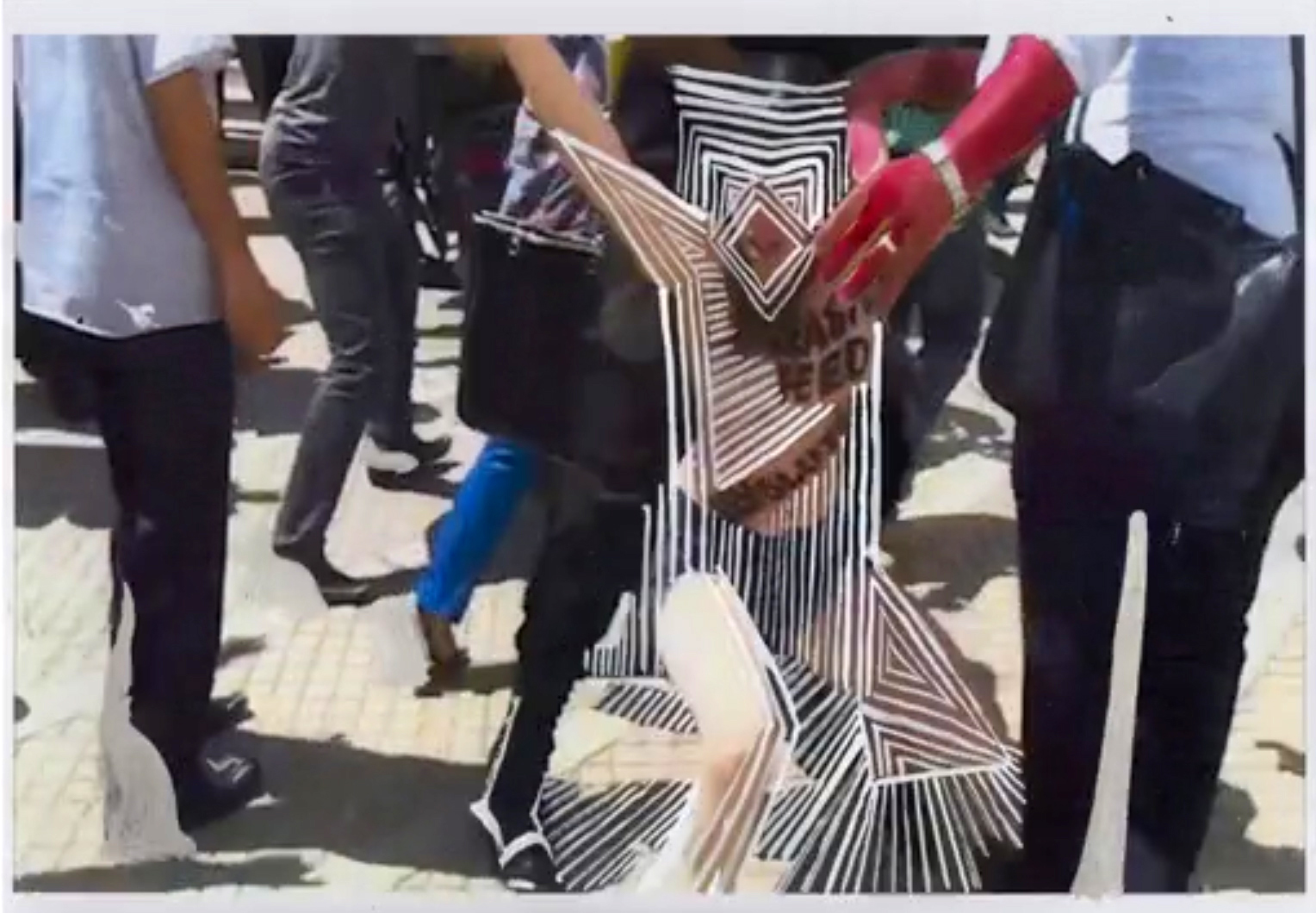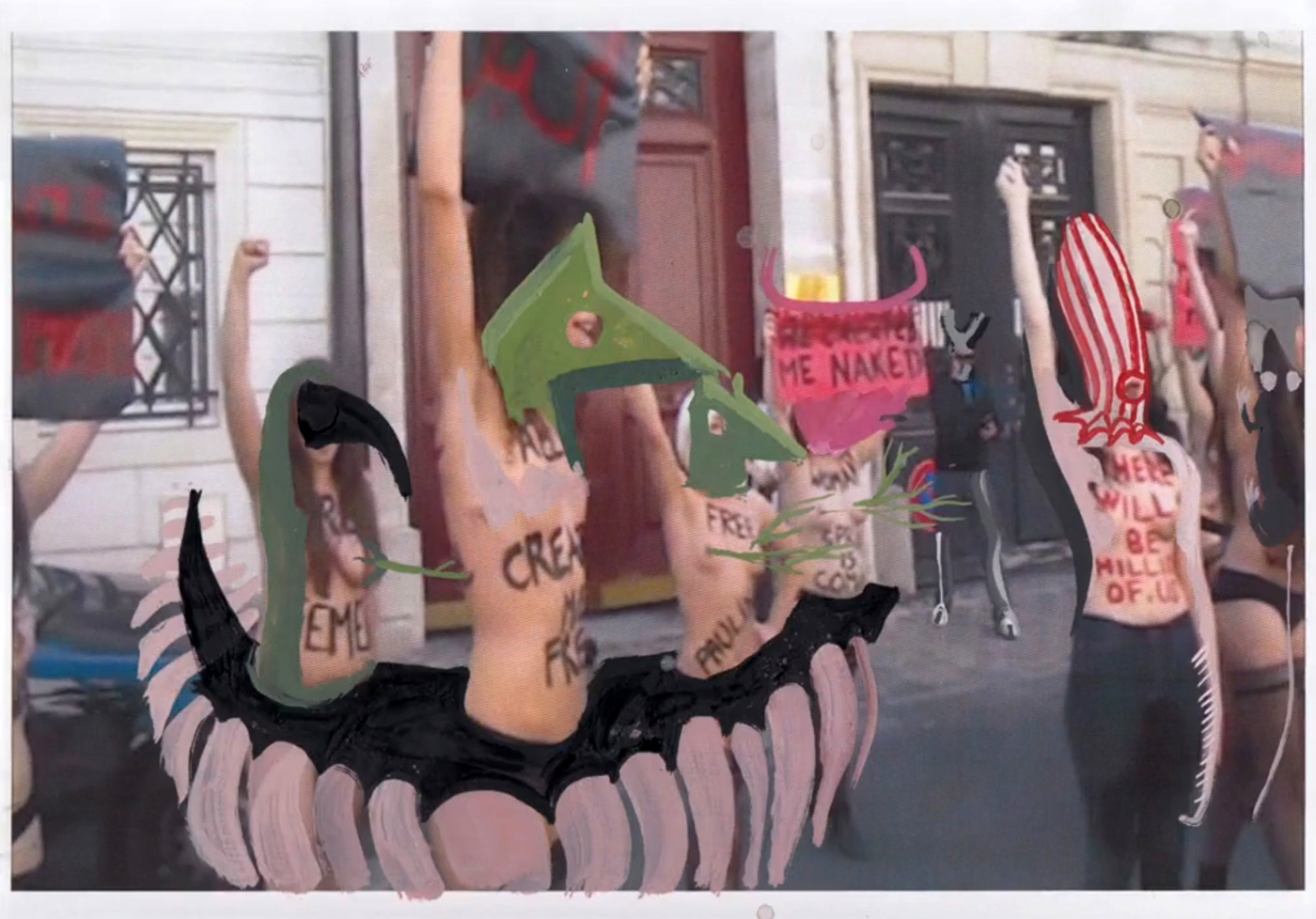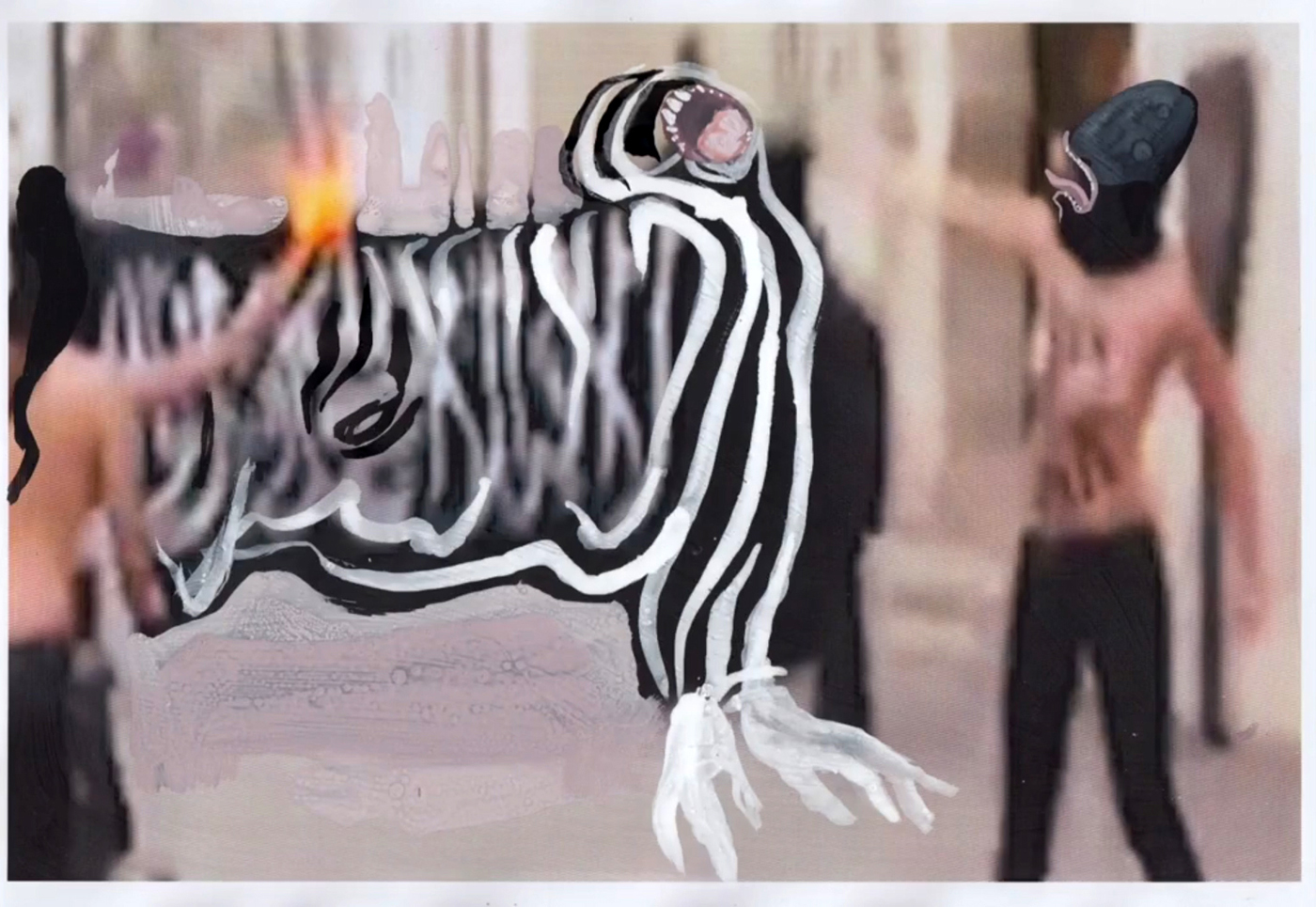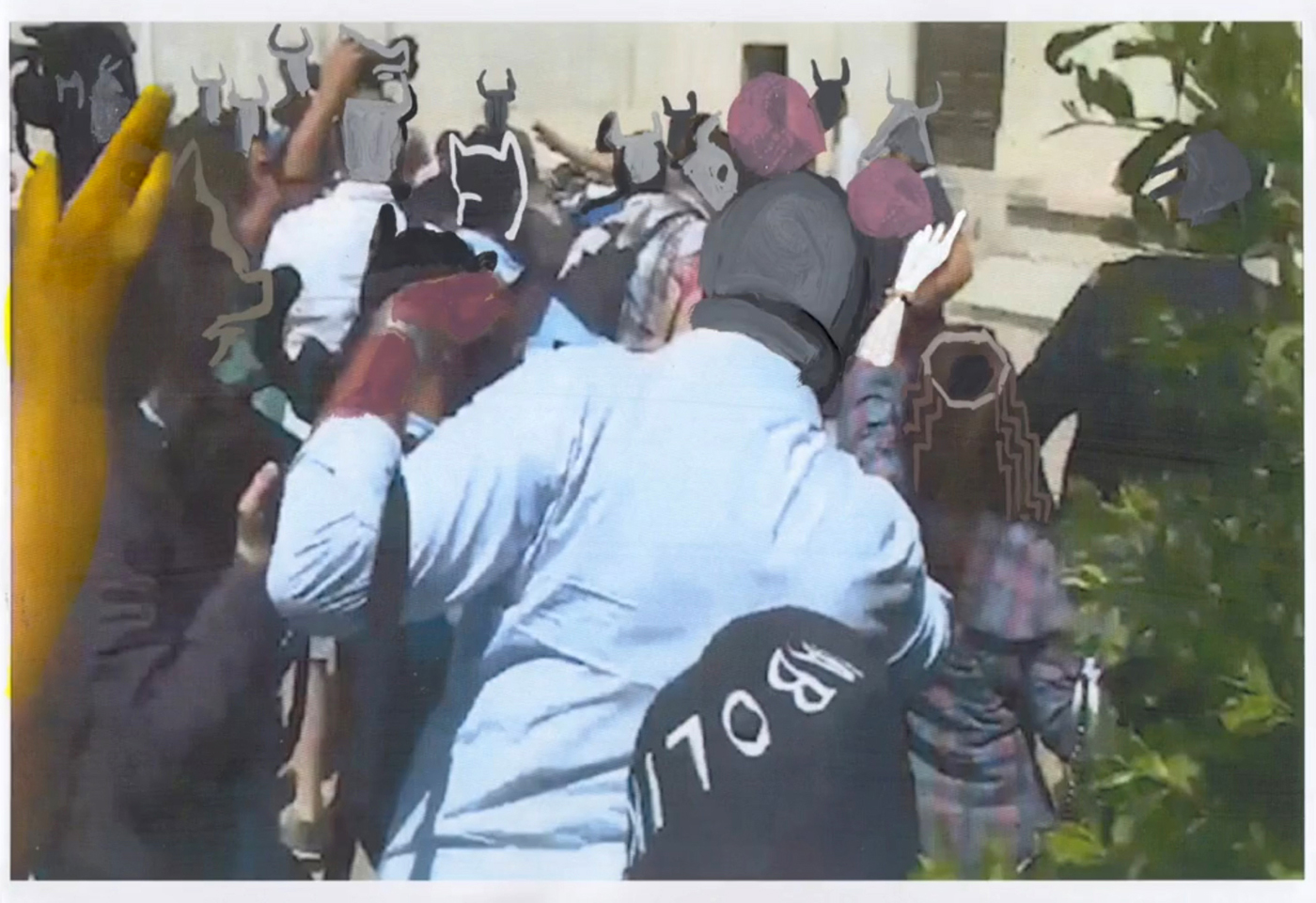Hesam Rahmanian
In Ramin, Rokni and Hesam’s art making, production is performance and the performance is a collective action leading to dance, art, and politics. The trio investigate a model of how to collaborate, translating it into multiple forms which often evolves around artists and people from different walks of life. Through this body assembly, creating a self-sustaining creative life; how to build an aesthetic and undermine it; how to be politically acute and humorous, generous and eccentric. Their work is often referred to as a landscape where the complex nature of processing is integrated in the nested system that forms the landscape of their practice. Their home is a working studio which is also a filmset and movie theatre, a museum and research center. The house informs their art as it results from both collective and individual endeavor. The artists are not a distinct group or collective, there is no name or label for the trio as their practice often evolves around other artists and friends.
Ramin Haerizadeh, Rokni Haerizadeh and Hesam Rahmanian’s early collaborative practice formed as early as 1997 in Tehran, though the artists reside in the U.A.E since 2009.
In 2023-24, the collective presented a solo exhibition, “Le Diwan de Démon,” at Museum CCC OD in Tours, France. In 2022, they exhibited a mini survey of their practice, “Parthenogenesis,” at NYU Abu Dhabi. In October 2020, the trio exhibited at Schirn Kunsthalle in Frankfurt, titled “Either He’s Dead or My Watch Has Stopped,” and in 2019, they showcased a solo exhibition of selected fluid paintings along with related drawings at the Frye Art Museum in Seattle. Their largest exhibition to date took place at the 15,000 sqm Officine Grandi Riparazioni (OGR) in Turin in 2018. In 2017, they exhibited “The Maids,” inviting over 20 people to participate in the creative process at The Museum of Contemporary Art (MACBA) in Barcelona. In 2015, they dedicated “The Birthday Party,” an immersive solo exhibition at the Institute of Contemporary Art (ICA) in Boston. In the same year, they exhibited “Slice a Slanted Arc Into Dry Paper Sky” in one of Zurich’s most prominent and spacious spaces, Kunsthalle Zurich, and later that year, they held a solo show at the Den Frie Centre of Contemporary Art in Copenhagen.
Their recent participation in a group exhibition is a duo at Kunsthalle Zurich in 2024. In October 2023, they were part of “Ridiculously Yours! Art, Awkwardness And Enthusiasm” at HALLE FÜR KUNST Steiermark in Graz, Austria, and in the same year, they exhibited their fluid paintings at Inside Out Art Museum in Beijing. In 2023, at the Powerhouse Museum in Sydney, Australia, they participated in “A Line, A Web, A World.” In 2022, two of their limited edition books were part of “Artists Making Books: Poetry to Politics” at the British Museum, London. In the same year, they were part of a group exhibition at London’s Whitechapel Gallery called “A Century of the Artist’s Studio: 1920–2020.” In 2022, they exhibited at Bundes Kunsthalle in Bonn, Germany. In 2021, the trio participated in “Around the Days in Eighty Worlds” at CAPC musée d’art contemporain de Bordeaux, France, and in 2020, they were part of an exhibition called “I Put a Spell On You: On Artist Collaborations” at SCAD Museum of Art in Georgia, USA. In 2019, they participated in a major group exhibition at the Louisiana Museum in Humlebaek, Denmark, titled “Homeless Souls,” and in the same year, the Phillips Collection in partnership with the New Museum held “The Warmth of Other Suns,” in which the trio were a part of. The collective dedicated a multi-room immersive installation as part of the exhibition held at The Guggenheim in Abu Dhabi in 2017. In the same year, they showed video works at (BAK) in Utrecht, Netherlands, and exhibited in a group show at Zacheta National Gallery of Art in Warsaw, Poland, in 2016.
Participation in major biennales include; The 22nd Biennale of Sydney (2020); The inaugural Toronto Biennial of Art, (2019); Busan Biennale, South Korea, (2018); National Pavilion of United Arab Emirates, 57th, Venice Biennale (2017); The 9th Liverpool Biennial, UK (2016); The 8th Asia Pacific Triennial, Brisbane (2015), Carngie International, Pittsburgh, USA (2013); Sharjah Biennale, UAE (2010)
Their work is held in major public and private collections worldwide, Musée d’Art et d’Histoire, Genève, Switzerland; FRAC, Corsica, France; The British Museum, London, UK; Art Gallery of New South Wales, Sydney, Australia; Städel Museum, Frankfurt, Germany; Le Centre National des Arts Plastiques, Paris, France; Los Angeles County Museum of Art (LACM¬A), USA; Louisiana Museum of Modern Art, Humlebæk, Denmark; Frye Art Museum, Seattle, USA; Museum of Applied Arts and Sciences /Powerhouse Museum, Sydney, Australia; Fundación Han Nefkens, Barcelona, Spain; Borusan Contemporary Art Collection, Istanbul; Guy & Myriam Ullens Foundation Collection; amongst others.
The trio is currently working on a special publication about the U.A.E with Louis Vuitton Foundation, Paris, France. Previous similar publications include a limited edition of Her Majesty?, Published by Edition Patrick Frey, Zurich.
The collective has been awarded; The Black Mountain College Prize (2022); OGR Torino & Fondazione per l’Arte Moderna e Contemporanea CRT Prize (2017); Han Nefkens Foundation/MACBA Award (2016)
EXHIBITION (SELECTION)
Solo exhibitions
2025
Proximities, SeMA, Seoul, South Korea
Luminous Shadow, Artspace, Sydney, AU
2024
Ramin Haerizadeh, Rokni Haerizadeh and Hesam Rahmanian : That Which Does Not Belong, Arts Club, Dubaï, UAE
2023
The Beautiful Decay of Flowers in The Vase, Galerie In Situ - fabienne leclerc, Grand Paris, FR
The Demon'Diwan, CCCOD, Tours, FR
2022
"Parthenogenesis" New York University (NYU), Abu Dhabi, UEA
"ALLUVIUM " OGR Torino (off site project in Venice), Complesso dell'Ospedaletto, Italie
2020
Ramin Haerizadeh, Rokni Haerizadeh, Hesam Rahmanian, Either he's dead, or my watch has stopped, Groucho Marx (while getting the patient's pulse), Schirn Kunsthalle Frankfurt, DE
2019
Toronto Biennal of Art, Toronto, CA
The Rain Doesn't know Friends from Foes: Ramin Haerizadeh Rokni Haerizadeh Hesam Rahmanian, Frye Art Museum, Seattle, USA
2018
Like clouds, the forms of the world turn into one another, curated by Madeleine Mathe, Centre d'art Contemporian Chanot, France, FR
Night of Another Spring (Part I & II), In Situ - fabienne leclerc, Paris, FR
Forgive me, distant wars, for bringing flowers home, OGR, Turin, IT
From Sea to Dawn, Galerie Krinzinger, Vienne, AT
2017
The Maids, Museu d'Art Contemporani de Barcelona, Barcelone, ES
2015
The Birthday Party, Institute of Contempory Art (ICA), Boston, US
Those Who Love Spiders, and Let Them Sleep in Their Hair, Den Frie Centre of Contemporary Art, Copenhagen, DK
All the Rivers Run Into The Sea. Over. / Copy. Yet, The Sea Is Not Full. Over, 8th Asia Pacific Triennial of Contemporary Art, Queensland Art Gallery, Brisbane, AU
The Fal, Rodeo Gallery, Istanbul, TR
Slice A Slanted Arc Into Dry Paper Sky, Kunsthalle, Zurich, CH
2014
The Exquisite Corpse Shall Drink the New Wine, Gallery Isabelle van den Eynde, Dubai, AE
2012
I Put It There You Name It, Gallery Isabelle van den Eynde, Dubai, AE
Group exhibitions
2026
Le Syndrome de Bonnard, FRAC IDF (IDF Public collection), Paris
2024
Jameel Prize: Moving Images, V&A Museum South Kensington, Londres, UK
FRAC Corsica, Corti, Corse, FR
Forms of the Shadow, Curated by Sunjung Kim, Vienna Secession, Vienne, AT
Ramin Haerizadeh, Rokni Haerizadeh, Hesam Rahmanian / (LA)HORDE, Kunsthalle Zürich, Zürich, CH
Exils, Louvre Lens, France
From Kalila wa Dimna to La Fontaine : Travelling throught Fables, Louvre, Abu Dhabi, UAE
In Real Time, NYU Abu Dhabi, Abu Dhabi, UAE
2022
A Century of the Artist's Studio : 1920-2020, Whitechapel Gallery, Londres, UK
2021
Land of Dreamers Who Do, UAE Pavilion - EXPO 2020 - Dubai, UAE
In Three, Callicoon Fine Arts, New York, USA
Screen Series, New Museum, New York, USA
2020
Around The Day In Eighty Worlds, CAPC Bordeaux, FR
Et maintenant, le dessin..., In Situ - Fabienne Leclerc, Romainville, FR
Nirin, 22nd Biennale of Sydney, Sydney, AU
2019
Toronto Biennal of Art, Toronto, CA
Homeless Souls, Louisiana Museum of Modern Art, Danemark, DK
RE: Orient - The Invention of the Muslim Other, Grassi Museum Leipzig, Allemagne, DE
On the Fringes of Identity, Museo d'Arte Contemporanea di Lissone (MAC), Italy, IT
On the Fringes of Identity, Museo Storico dell Citta du Lecce (MUST), Italy, IT
The Warmth of Other Suns, curated by Massimilano Gioni and Natalie Bell, The Phillips Collection, Washington DC (Upcoming), USA
2018
Busan Biennial 2018, Busan, South Korea
Mouvements partagés, CACC, Clamart, FR
2017
Propositions #1: What we Mean, BAK, basis voor actuele kunst
The Restless Earth, Fondazione Nicola Trussardi, Milan, IT
Rock, Paper, Scissors : Positions in Play, National Pavillion of United Arab Emirates, 57th Venice Biennale, IT
The Creative Act : Performance, Process, Presence, Guggenheim Abu Dhabi, AE
2016
Social Calligraphies, Zacheta National Gallery of Art, Warsaw, PL
Domestic Affairs : Reshaped, Gallery Isabelle van den Eynde, Dubai, AE
9th LIverpool Biennial : Festival of Contemporary Art, Liverpool, UK
2015
All the Rivers Run Into The Sea. Over. / Copy. Yet, The Sea Is Not Full. Over., 8th Asia Pacific Triennial of Contemporary Art, Queensland Art Gallery, Brisbane, AU
Nice Drawings, Gallery Isabelle van den Eynde, Dubai, AE
Awards
2022
Black Mountain College Prize, Asheville, USA
2015
Fundaciò Han Nefkens/MACBA Award, Barcelona, ES
Collections
Louisiana Museum of Modern Art, Cophenhagen, Danemark
Frye Art Museum, Seattle, Washington
Fundacio Han Nefkens, Barcelona
Collection Le Centre National des Arts Plastiques, France
Borusan Contemporary Art Collection, Istanbul
Los Angeles County Museum of Art (LACMA)
Guy & Myriam Ullens Foundation Collection
Residency
2014
Rauschenberg Residency, Captiva, Florida,US
Publications
2018
forgive me distant wars for bringing flower home, 2018, Corraini Edizioni, ISBN 9788875707415
2016
Her Majesty ?, Edition Patrick Frey, 2016, ISBN 9783836535182
2015
Ramin Haerizadeh Rokni Haerizadeh Hesam Rahmanian, Mousse Publishing, 2015, ISBN9788867491353
-
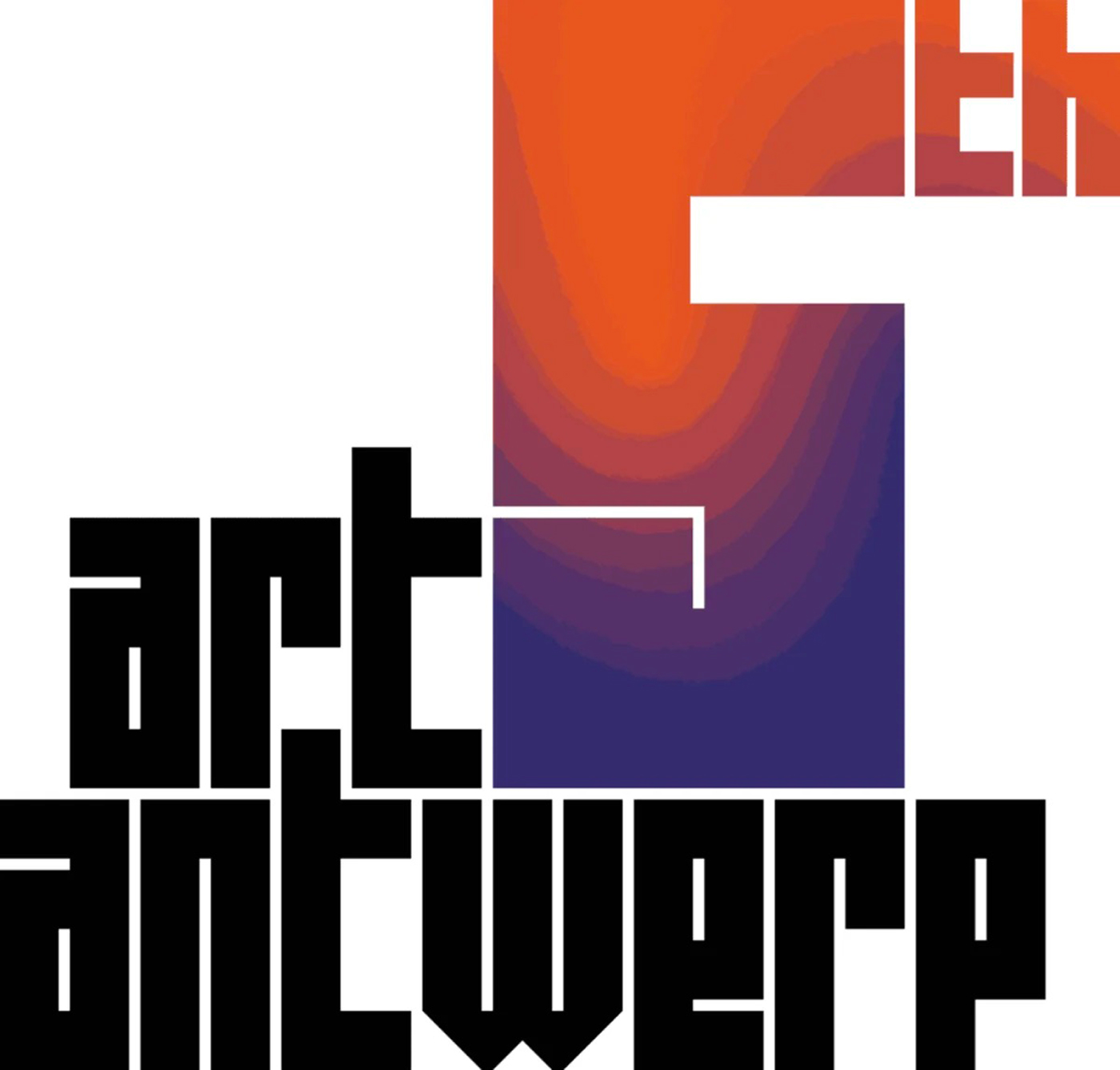 2025.12 / 2025.12.14
2025.12 / 2025.12.14
Group show
Art Antwerp 2025
-
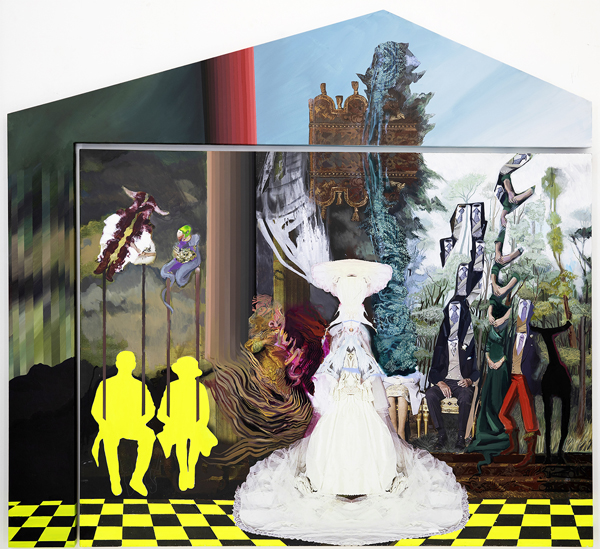 2023.05 / 2023.07.15
2023.05 / 2023.07.15
Ramin Haerizadeh, Rokni Haerizadeh, Hesam Rahmanian
The Beautiful Decay of Flowers in The Vase
-
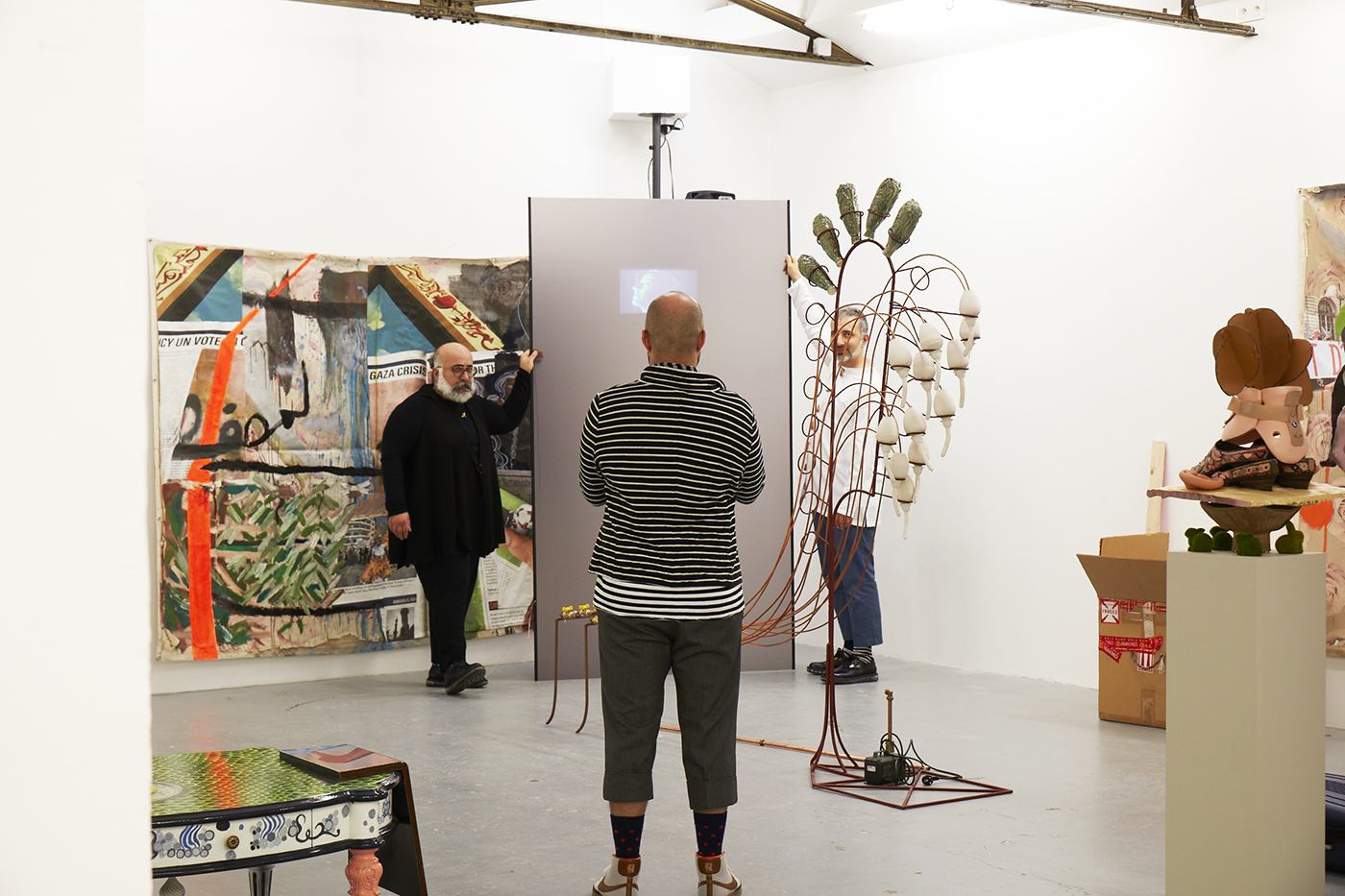 2018.10 / 2018.11.17
2018.10 / 2018.11.17
Ramin Haerizadeh, Rokni Haerizadeh, Hesam Rahmanian
Night of Another Spring - Part 2
-
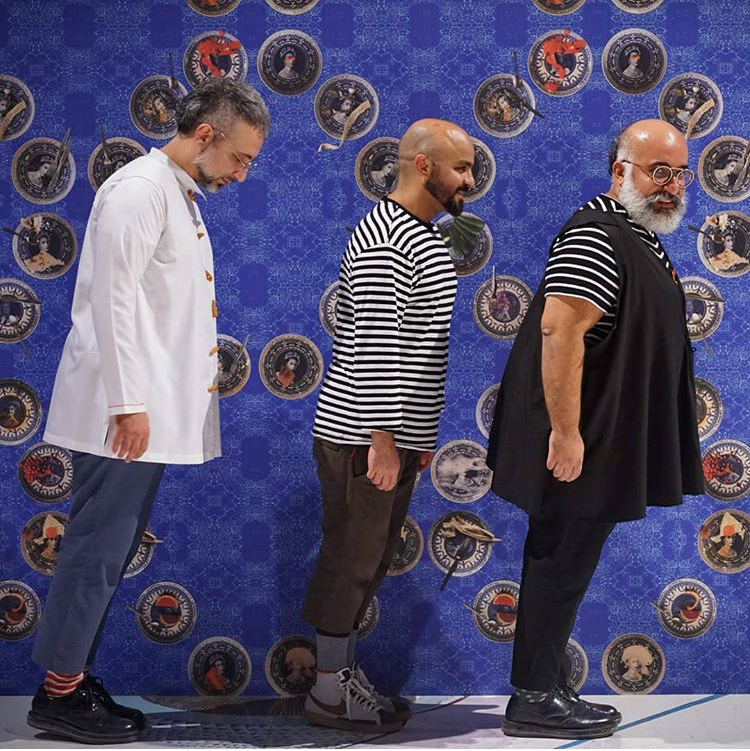 2018.09 / 2018.10.13
2018.09 / 2018.10.13
Ramin Haerizadeh, Rokni Haerizadeh, Hesam Rahmanian
Night of Another Spring - Part 1
-

04.06.2024 - 05.20.2024
Ramin Haerizadeh, Rokni Haerizadeh, Hesam Rahmanian
KUNSTHALLE ZÜRICH
RAMIN HAERIZADEH, ROKNI HAERIZADEH, HESAM RAHMANIAN / (LA)HORDE -
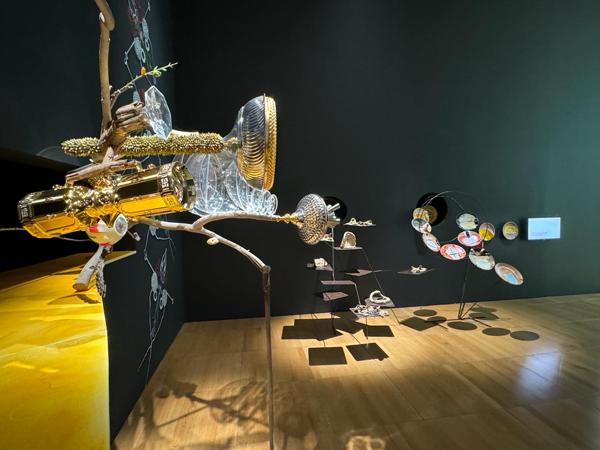
02.22.2024 - 06.09.2024
Ramin Haerizadeh, Rokni Haerizadeh, Hesam Rahmanian
NYU Abu Dhabi
Ramin Haerizadeh, Rokni Haerizadeh, Hesam Rahmanian - In Real Time -
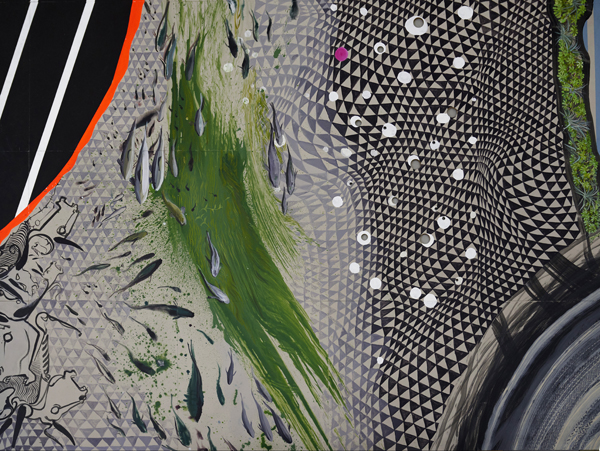
06.02.2023 - 02.18.2024
Ramin Haerizadeh, Rokni Haerizadeh, Hesam Rahmanian
CCC OD - Tours
Ramin Haerizadeh, Rokni Haerizadeh, Hesam Rahmanian -
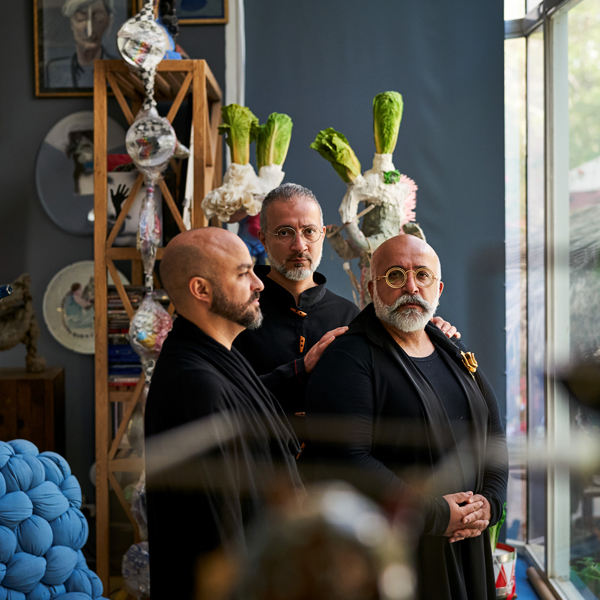
04.20.2022 - 11.27.2022
Ramin Haerizadeh, Rokni Haerizadeh, Hesam Rahmanian
Biennale Arte 2022 : 59th International Art Exhibition in Venice
Ramin Haerizadeh, Rokni Haerizadeh, Hesam Rahmanian - ALLUVIUM -
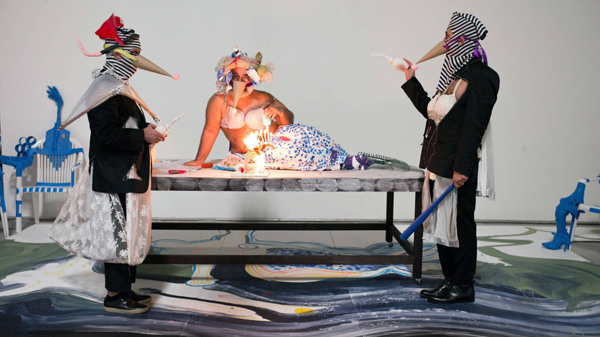
03.15.2022
Ramin Haerizadeh, Rokni Haerizadeh, Hesam Rahmanian
Black Mountain College Museum + Arts Center
Ramin Haerizadeh, Rokni Haerizadeh, Hesam Rahmanian - Inaugural BMC Prize -
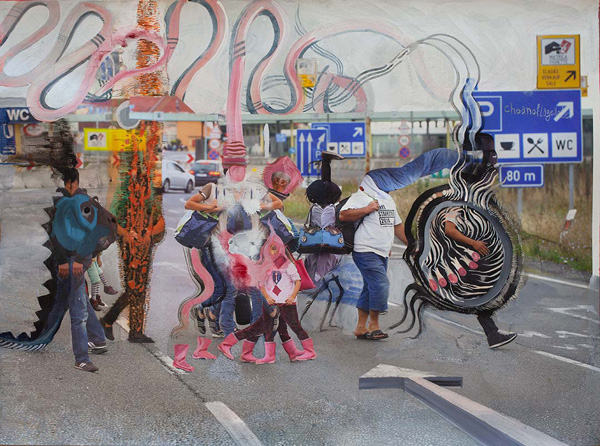
03.01.2022 - 06.12.2022
Ramin Haerizadeh, Rokni Haerizadeh, Hesam Rahmanian
Art Gallery - NYU Abu Dhabi
Ramin Haerizadeh, Rokni Haerizadeh, Hesam Rahmanian - Parthenogenesis -

10.01.2021 - 03.30.2022
Ramin Haerizadeh, Rokni Haerizadeh, Hesam Rahmanian
UAE Pavilion - EXPO 2020 - Dubai
Ramin Haerizadeh, Rokni Haerizadeh, Hesam Rahmanian - Land of Dreamers Who Do -

01.20.2021 - 07.10.2021
Ramin Haerizadeh, Rokni Haerizadeh, Hesam Rahmanian
NYU Abu Dhabi Art Gallery
Ramin Haerizadeh, Rokni Haerizadeh, Hesam Rahmanian - Not in, of, along, or relating to a line -
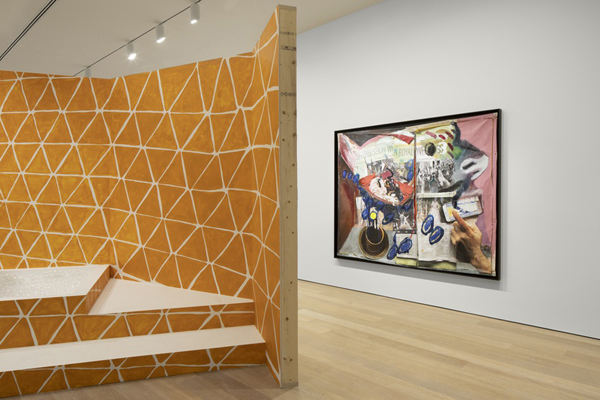
10.08.2020 - 01.31.2021
Ramin Haerizadeh, Rokni Haerizadeh, Hesam Rahmanian
SCAD Museum, Savannah
Ramin Haerizadeh, Rokni Haerizadeh, Hesam Rahmanian - I Put A Spell On You -
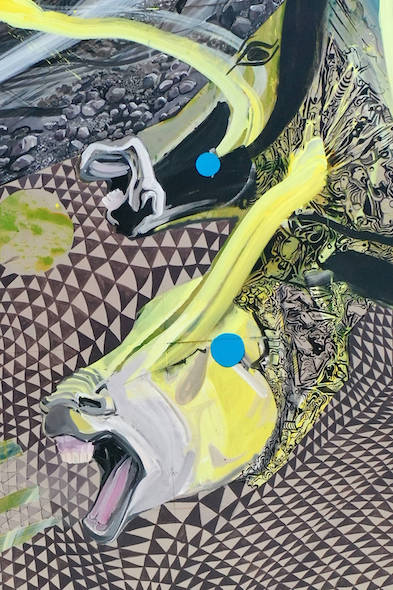
09.03.2020 - 12.13.2020
Ramin Haerizadeh, Rokni Haerizadeh, Hesam Rahmanian
Schirn Kunsthalle Frankfurt
Ramin Haerizadeh, Rokin Haerizadeh and Hesam Rahmanian -
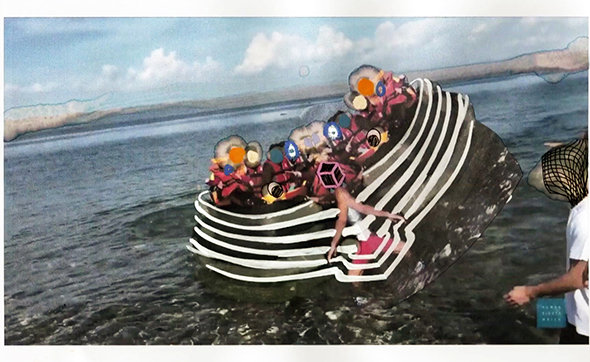
03.14.2020 - 06.08.2020
Ramin Haerizadeh, Rokni Haerizadeh, Hesam Rahmanian
22 nd Biennale of Sydney
Nirin - Ramin Haerizadeh, Rokni Haerizadeh, Hesam Rahmanian -
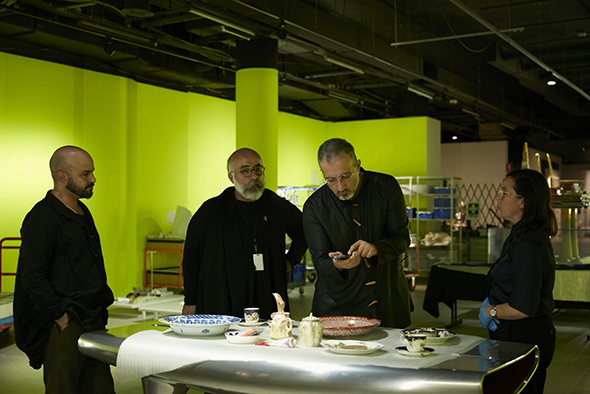
03.14.2020 - 06.08.2020
Ramin Haerizadeh, Rokni Haerizadeh, Hesam Rahmanian
Powerhouse Museum, Sydney - Australia
Ramin Haerizadeh, Rokni Haerizadeh and Hesam Rahmanian: I Prefer Talking to Doctors About Somethin -

03.13.2020 - 01.23.2022
Ramin Haerizadeh, Rokni Haerizadeh, Hesam Rahmanian
New Museum - New York
Ramin Haerizadeh, Rokni Haerizadeh, Hesam Rahmanian - Screen Series Online -
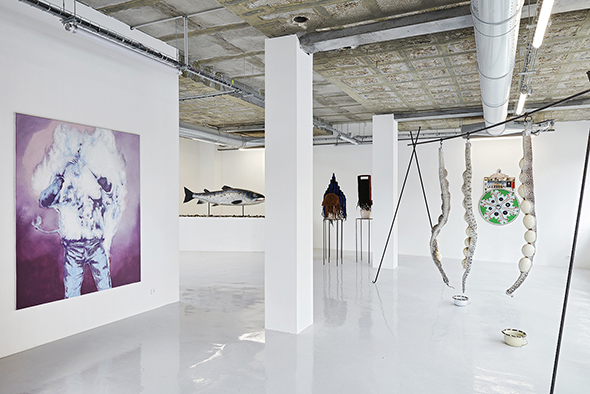
10.14.2019 - 11.01.2019
Renaud Auguste-Dormeuil, Patrick Corillon, Damien Deroubaix, Mark Dion, Gary Hill, Florence Paradeis, Bruno Perramant, Patrick Van Caeckenbergh, Joana Hadjithomas & Khalil Joreige, Patrick Tosani, Laurent Tixador, Martin Dammann, Meschac Gaba, Marcel Van Eeden, Otobong Nkanga, Vivien Roubaud, Lars Fredrikson / Estate, Constance Nouvel, Amir Nave, Ramin Haerizadeh, Rokni Haerizadeh, Hesam Rahmanian, Daniele Genadry, WE ARE THE PAINTERS
October 14th until December 1st. 2019
STOP - Collective exhibition of the artists represented by the Gallery -
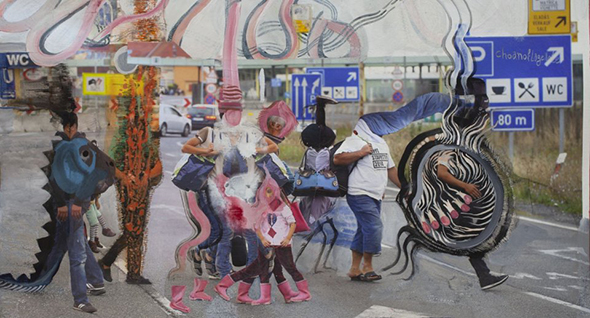
06.27.2019 - 09.22.2019
Otobong Nkanga, Ramin Haerizadeh, Rokni Haerizadeh, Hesam Rahmanian
Louisiana - Museum of Modern Art
Homeless souls -

01.26.2019 - 04.28.2019
Ramin Haerizadeh, Rokni Haerizadeh, Hesam Rahmanian
Frye Museum, Seattle
Ramin Haerizadeh, Rokni Haerizadeh, Hesam Rahmanian : The Rain Doesn't Know Friends from Foes -
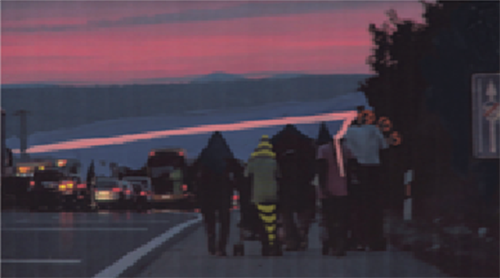
11.17.2018
Ramin Haerizadeh, Rokni Haerizadeh, Hesam Rahmanian
CACC
Ramin Haerizadeh, Rokni Haerizadeh, Hesam Rahmanian : Like clouds the form of the world turn into on -
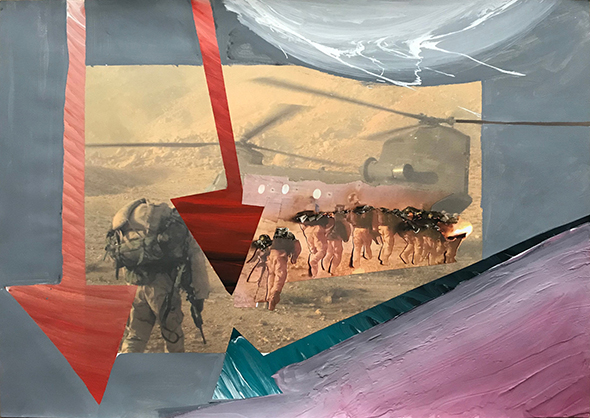
09.08.2018 - 11.11.2018
Joana Hadjithomas & Khalil Joreige, Ramin Haerizadeh, Rokni Haerizadeh, Hesam Rahmanian
Busan
Busan Biennale 2018 -

07.12.2018 - 09.30.2018
Ramin Haerizadeh, Rokni Haerizadeh, Hesam Rahmanian
OGR - Officine Grandi Riparazioni
"Forgive me, distant wars, for bringing flowers home"
Publications
-
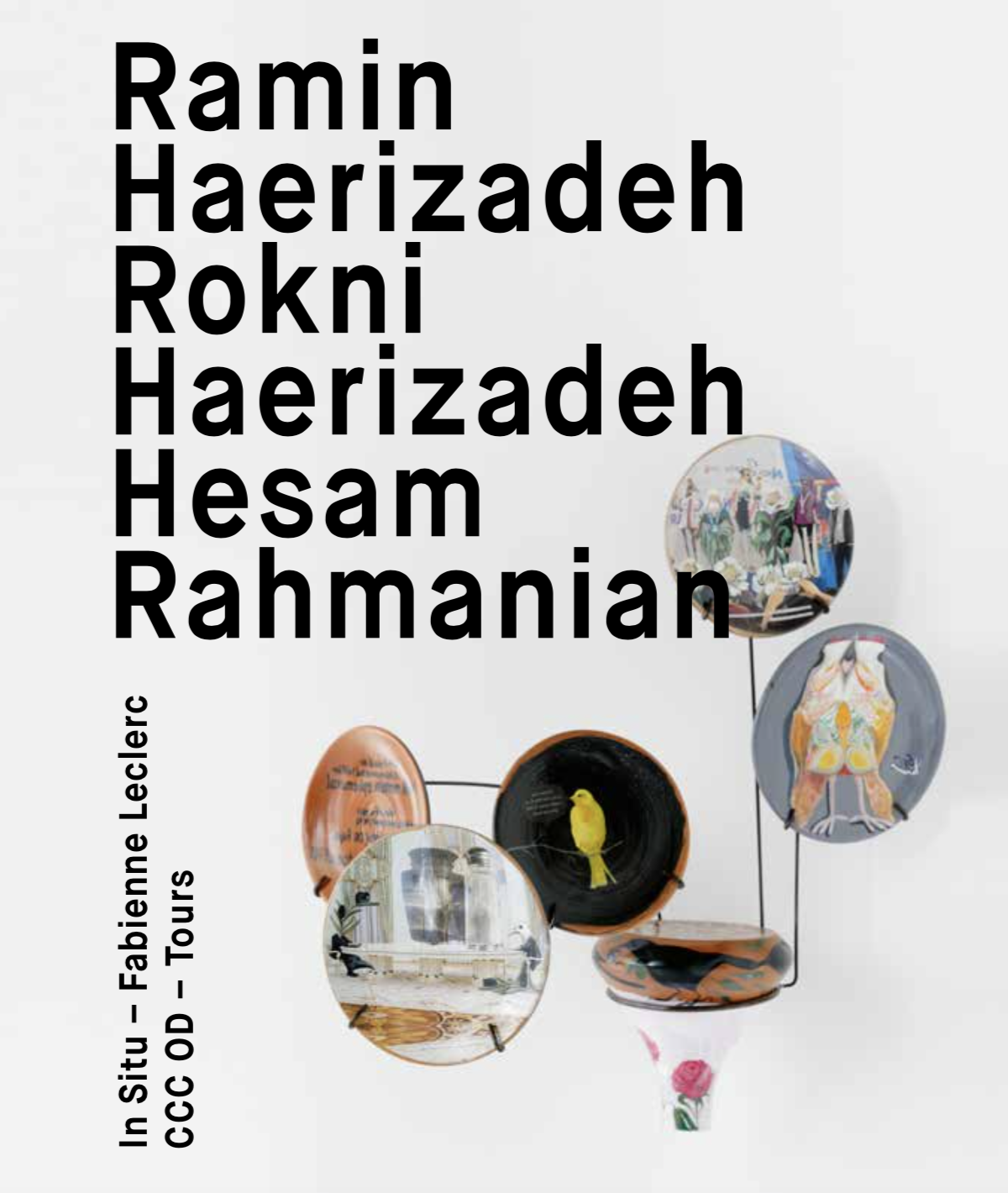 Natacha Pugnet, Sarina Basta, Delphine Masson : RRH - The Beautiful Decay of Flowers in The Vase & Le Diwan du Démon
Natacha Pugnet, Sarina Basta, Delphine Masson : RRH - The Beautiful Decay of Flowers in The Vase & Le Diwan du Démon
Galerie In Situ
July 2023 -
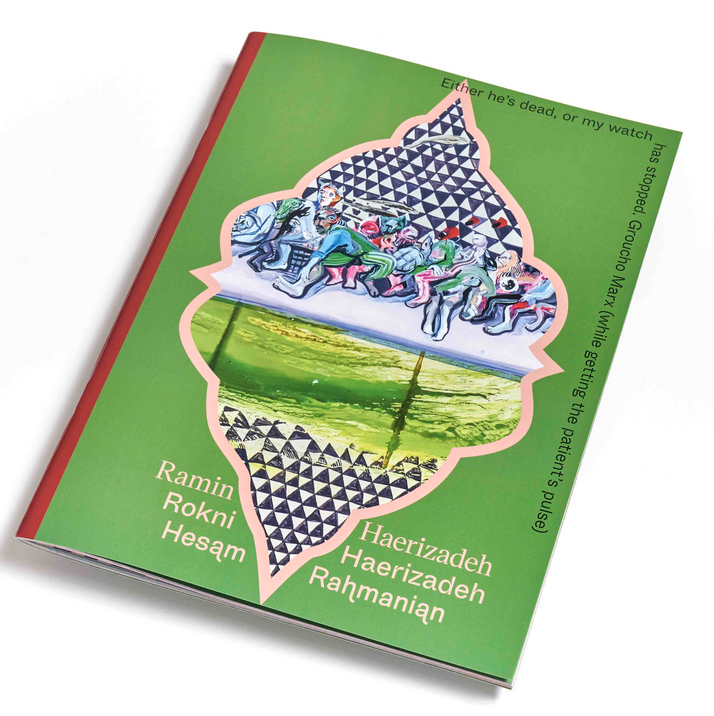 Martina Weinhart :
Martina Weinhart :
SCHIRN Kunsthalle
September 2020 -
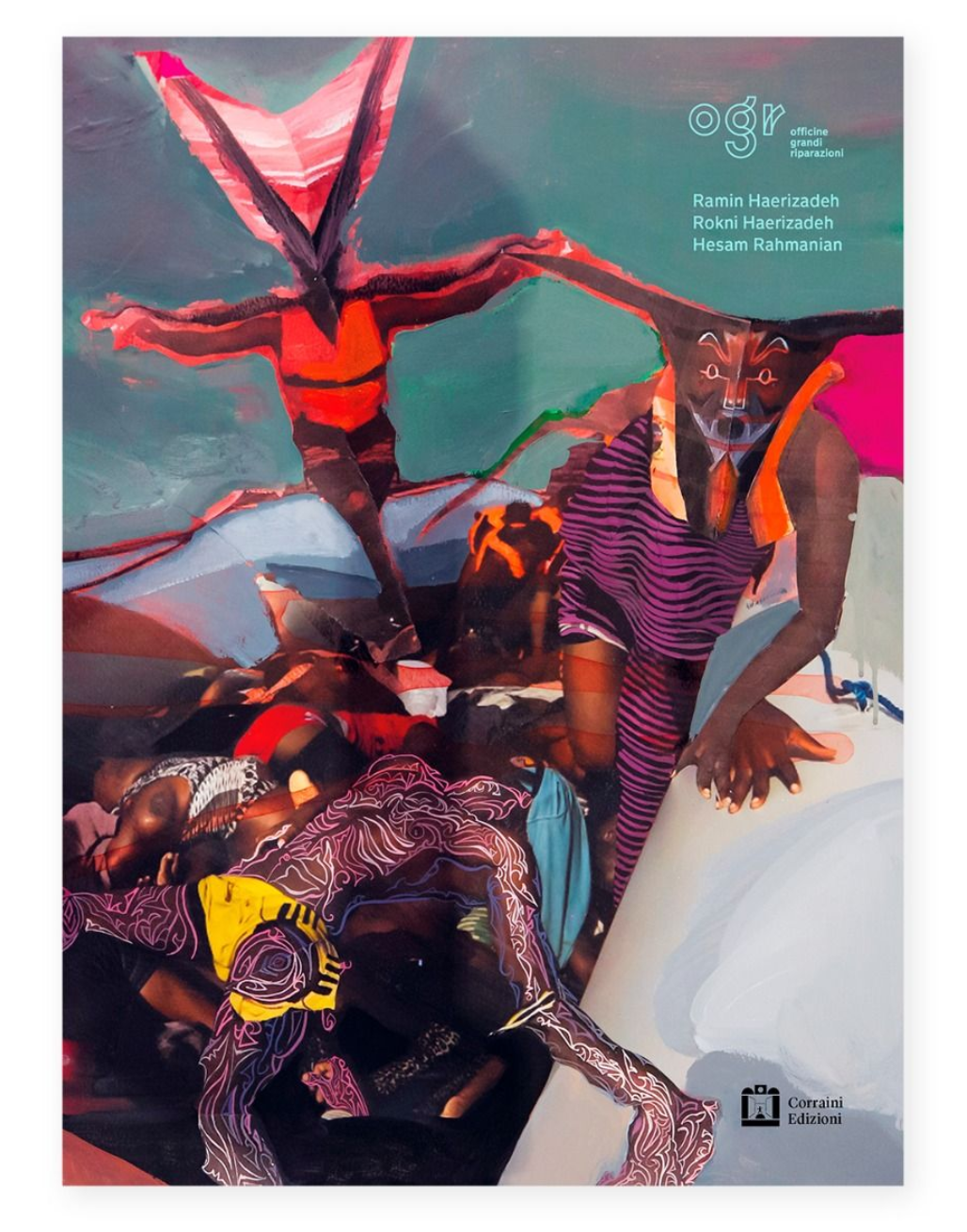 Ramin Haerizadeh, Rokni Haerizadeh, Hesam Rahmanian : Forgive me, distant wars, for bringing flowers home
Ramin Haerizadeh, Rokni Haerizadeh, Hesam Rahmanian : Forgive me, distant wars, for bringing flowers home
Edizioni Corraini
March 2019 -
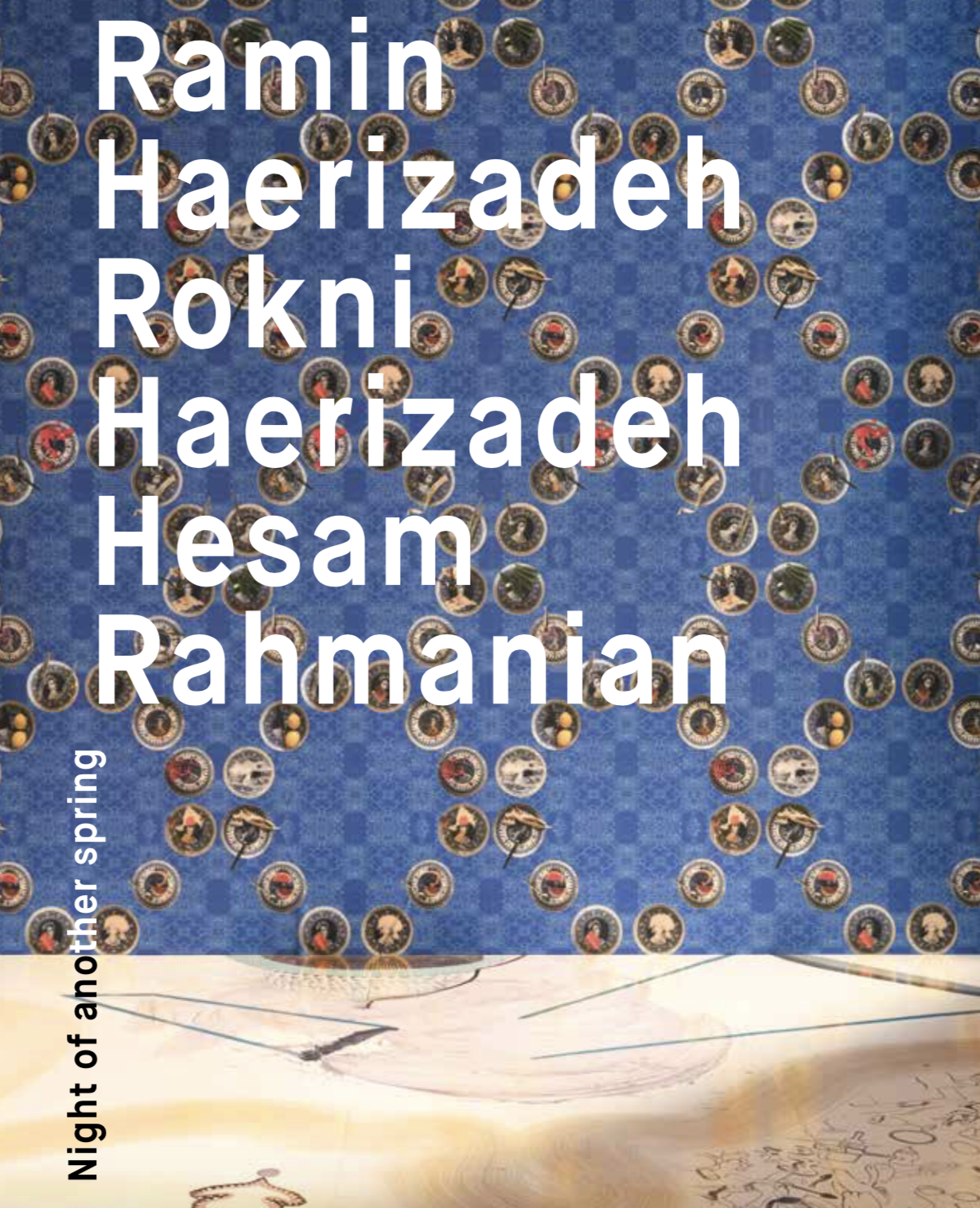 Ruth Erickson : Night of Another Spring
Ruth Erickson : Night of Another Spring
Galerie In Situ-fabienne leclerc, Grand Paris
September 2018 -
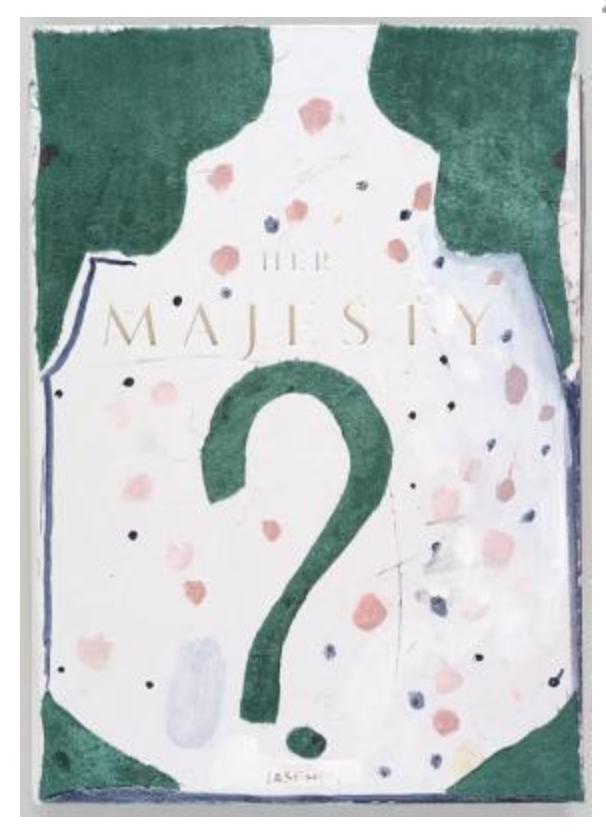 Ramin Haerizadeh, Rokni Haerizadeh, Hesam Rahmanian : Her Majesty ?
Ramin Haerizadeh, Rokni Haerizadeh, Hesam Rahmanian : Her Majesty ?
Patrick Frey Editions
May 2016 -
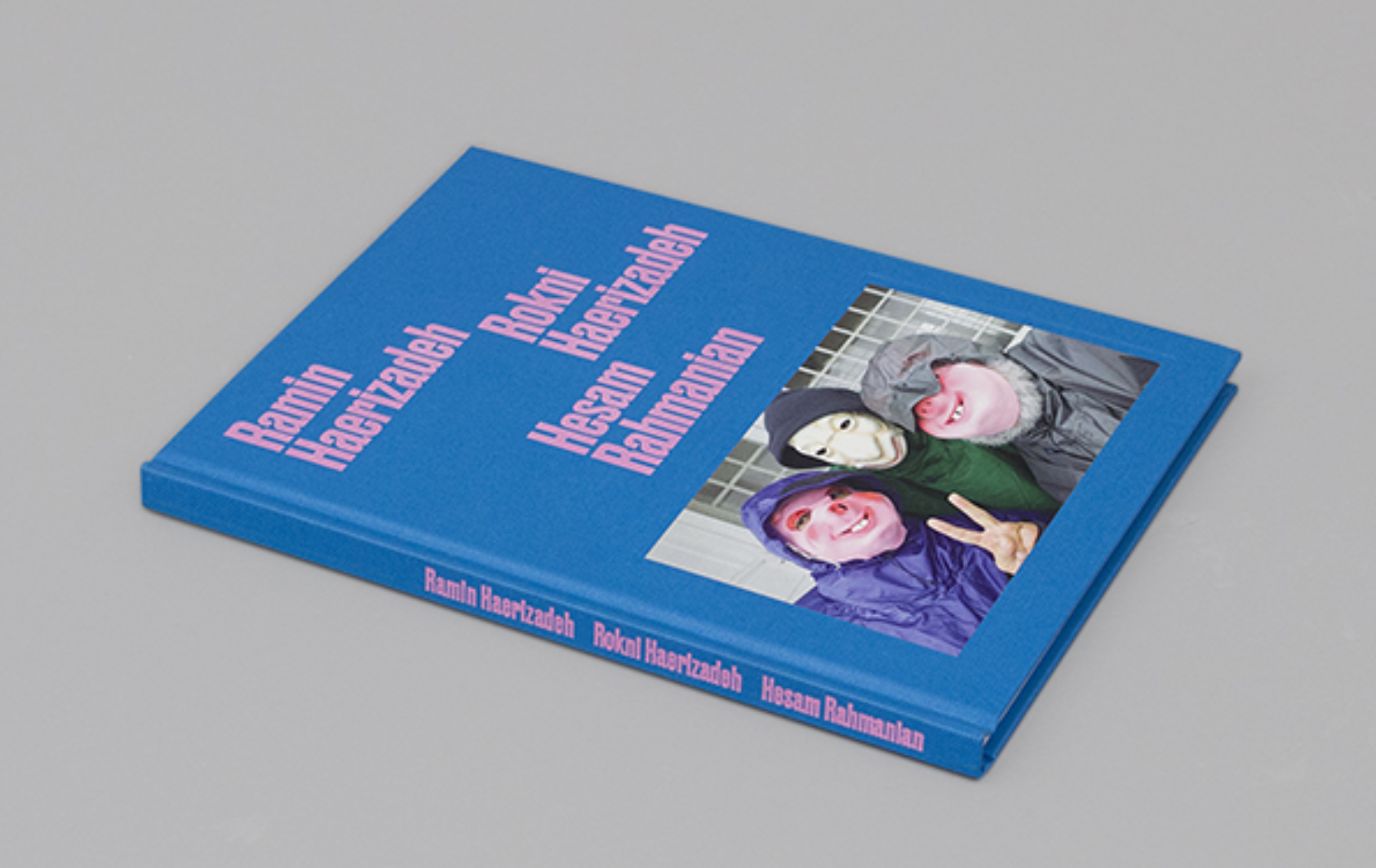 Tina Kukielski, Daniel Baumann and Christopher Lord : Ramin Haerizadeh, Rokni Haerizadeh & Hesam Rahmanian
Tina Kukielski, Daniel Baumann and Christopher Lord : Ramin Haerizadeh, Rokni Haerizadeh & Hesam Rahmanian
Tina Kukielski Ed / MOUSSE PUBLISHING
April 2015
Critical text
Press
-
The Art News Paper France
Blocs de marbre, Jean Genet et Madame TussaudBy Patrick Javault
03.06.2023 -
ROVEN
RAMIN HAERIZADEH, ROKNI HAERIZADEH, HESAM RAHMANIAN ET LA LIGNE PREND VIEby Madeleine Mathé
02.02.2023 -
L'oeil
L'oeil du collectionneur 05.01.2023 -
ATP DIARY ALLUVIU
ALLUVIUM di Ramin Haerizadeh, Rokni Haerizadeh e Hesam Rahmanian 05.07.2022 -
Global Art Daily
We Are Witnessing History: Ramin Haerizadeh, Rokni Haerizadeh and Hesam Rahmanian On Their Retrosp
13.05.2022 -
Ocula Magazine
Parallel Projects in Venice: Exhibition Highlights 02.05.2022 -
Arab News
Mideast artists make bold showing at 59th Venice Biennale 18.04.2022 -
Schirn Mag
From Studio to Dining Table: Haerizadeh, Haerizadeh & Rahmanian 21.10.2020 -
Schirn Mag
How To Create The Unexpected 01.09.2020 -
Spike Art Magazine
Dance After the Revolution 01.07.2020 -
Whitewall
Ramin Haerizadeh, Rokni Haerizadeh & Hesam Rahmanian 28.03.2020 -
Asian Art
Ramin Haerizadeh, Rokni Haerizadeh & Hesam Rahmanian 01.11.2018 -
Spike Art Magazine
Artists' Favourites RAMIN HAERIZADEH, ROKNI HAERIZADEH & HESAM RAHMANIAN 01.06.2018 -
Architectural Digest Middle East
Artists in Residence 01.01.2018 -
Harpers Bazaar Art
Invitation to the Sea 01.07.2016 -
Essay by Kevin Jones
Covered the Fingernails with Petals of Dahlia 05.05.2016 -
Questioning the Queen 03.05.2016
-
The Boston Globe
Iranian trio courts chaos in first US museum solo show at ICA 06.04.2016 -
Art Forum
Ramin Haerizadeh, Rokni Haerizadeh and Hesam Rahmanian 01.03.2016 -
Trine Ross
De elsker edderkopper 05.01.2016 -
Hyperallergic
The Maximalist World of a Collective Art Dream 29.05.2015 -
The New York Times
Art in Review 29.05.2015 -
The Brooklyn Rail
Ramin Haerizadeh, Rokni Haerizadeh, Hesam Rahmanian, I won't wait for grey hairs and worldly cares 06.05.2015 -
Spike Art
Slice A Slanted Arc Into Dry Paper Sky 21.02.2015 -
Art Asiapacific
Ramin Haerizadeh, Rokni Haerizadeh & Hesam Rahmanian 01.07.2014 -
Art Forum
Art Forum 01.06.2014 -
L'OFFICIEL ART
Ramin & Rokni Haerizadeh et Hesam Rahmanian 01.09.2012 -
Lifestyle
A Moveable Feast 00.00.0000


